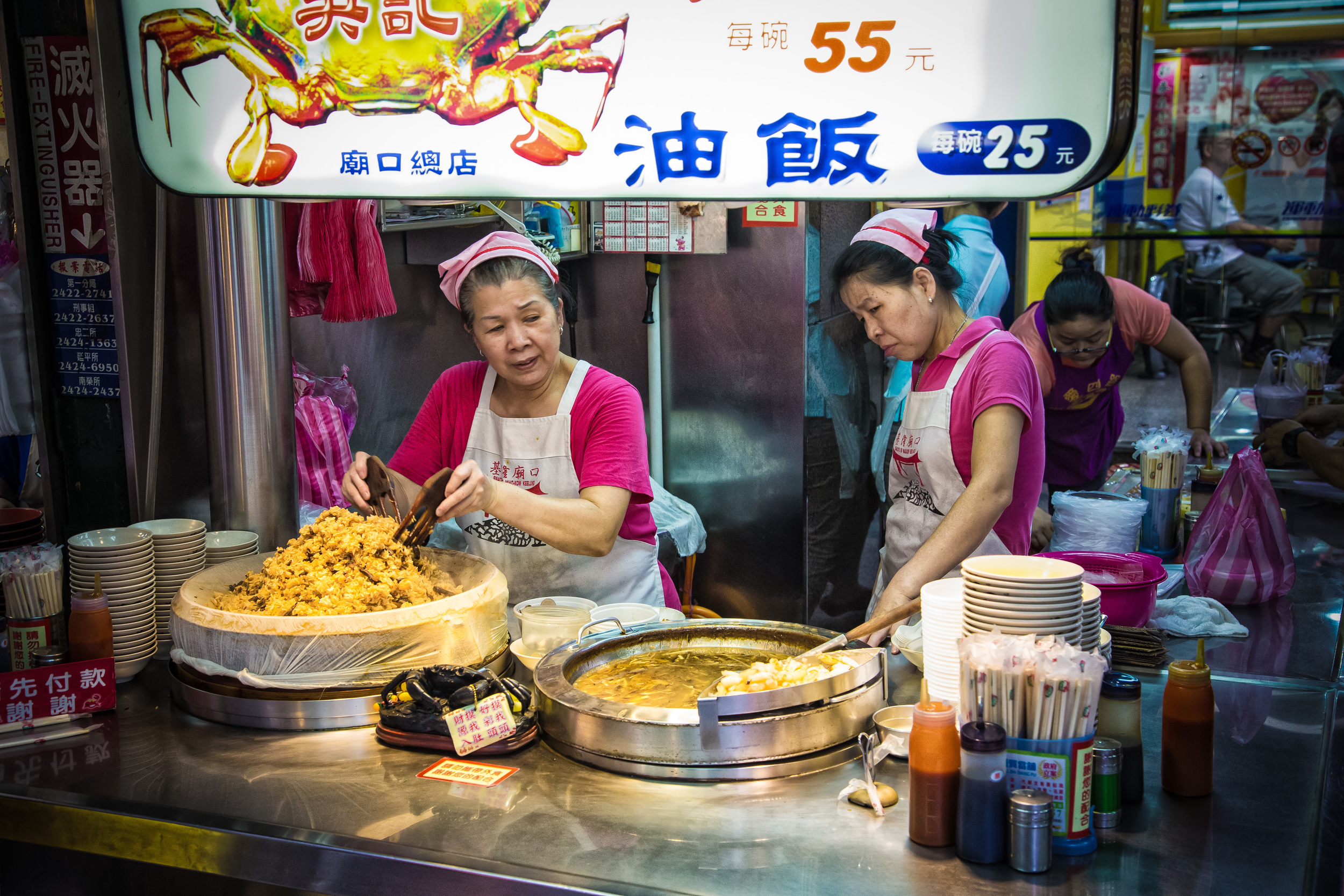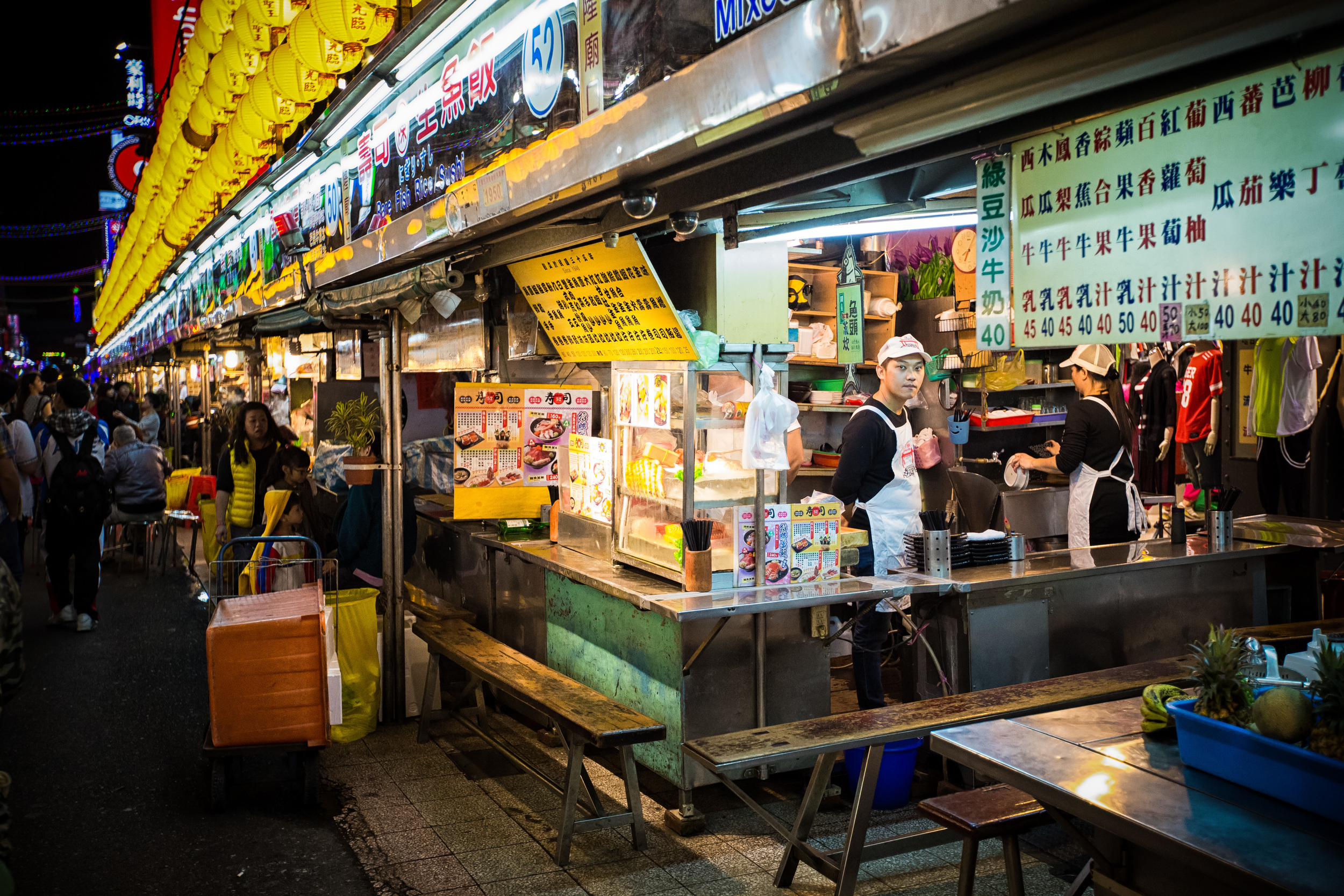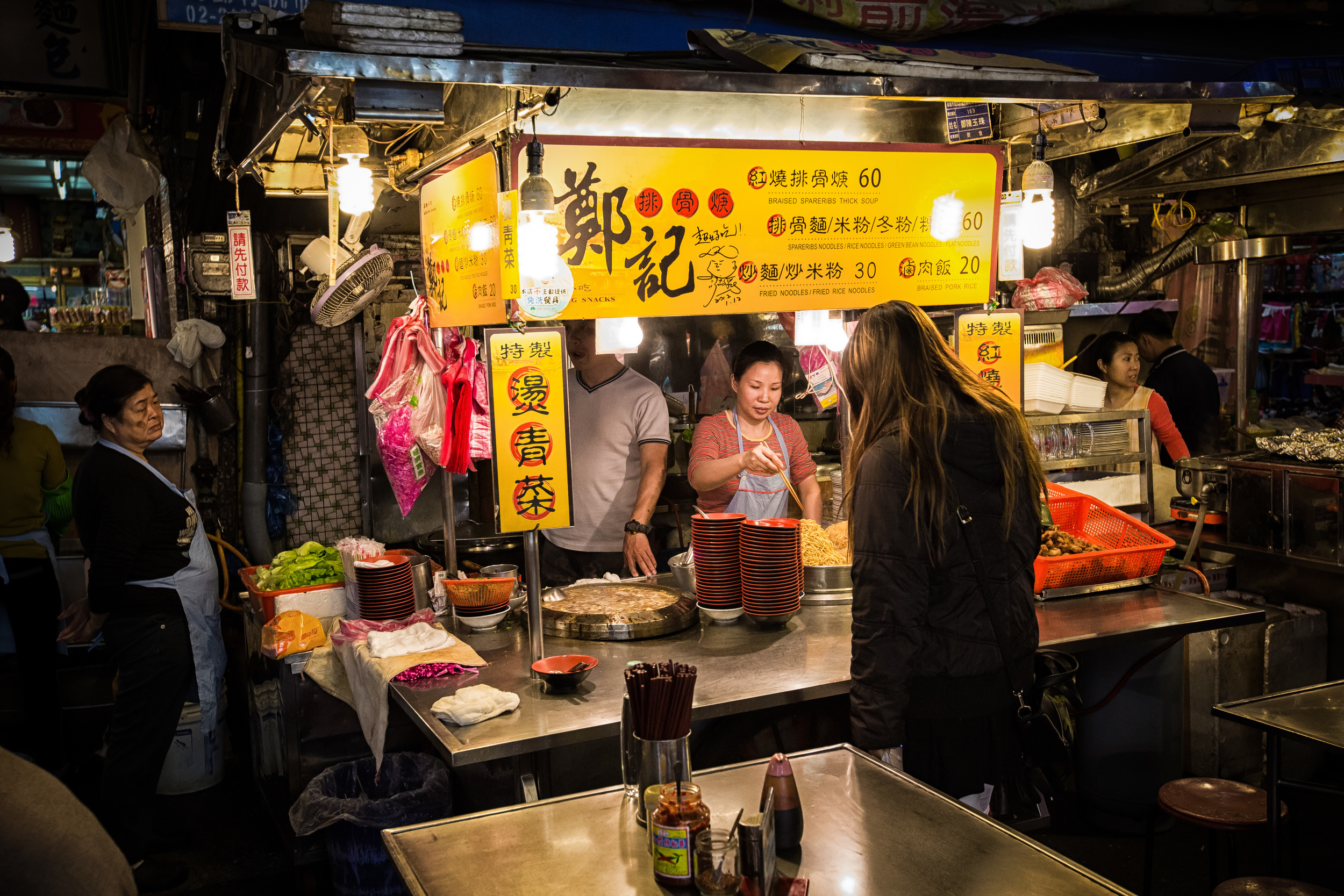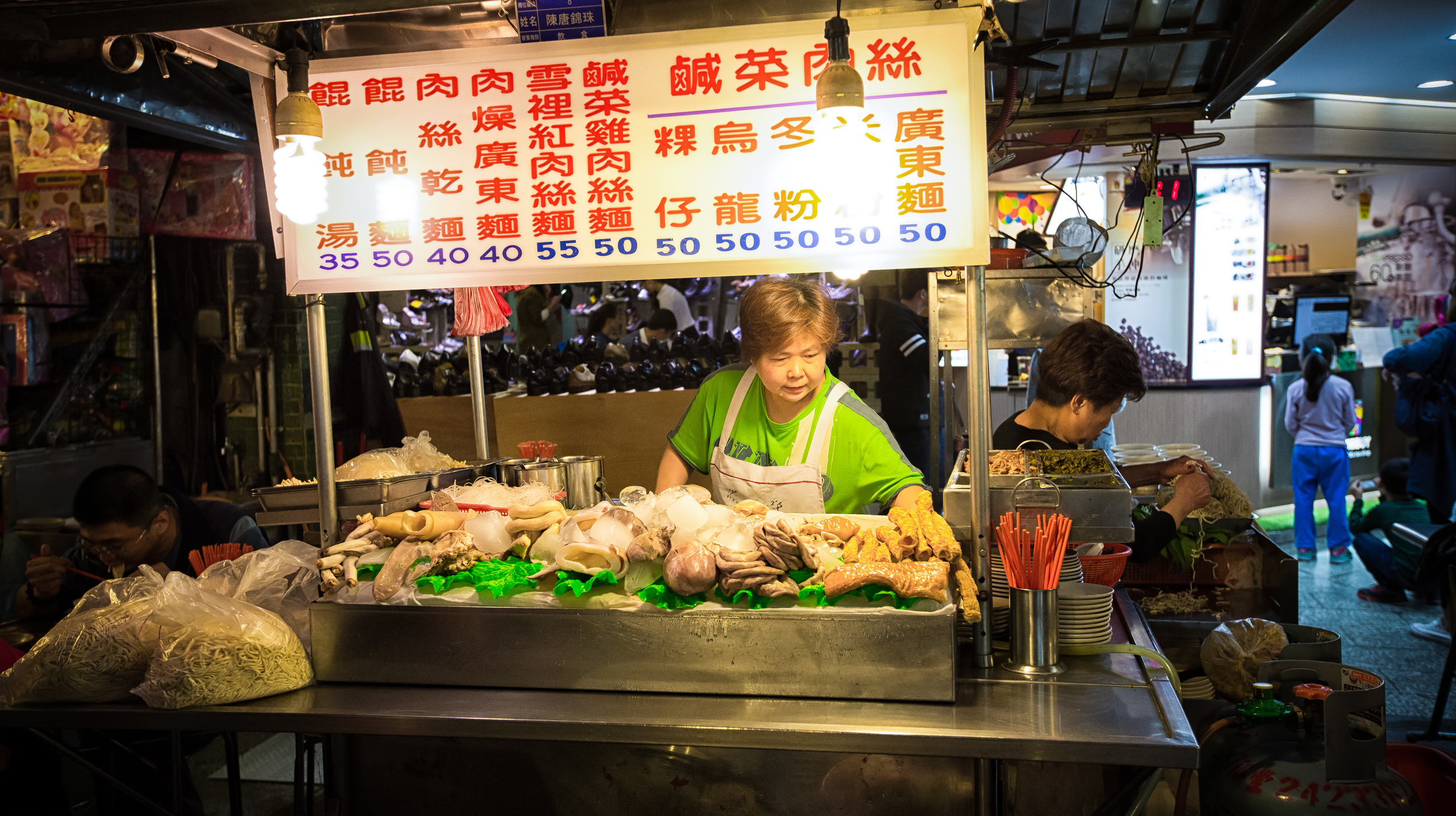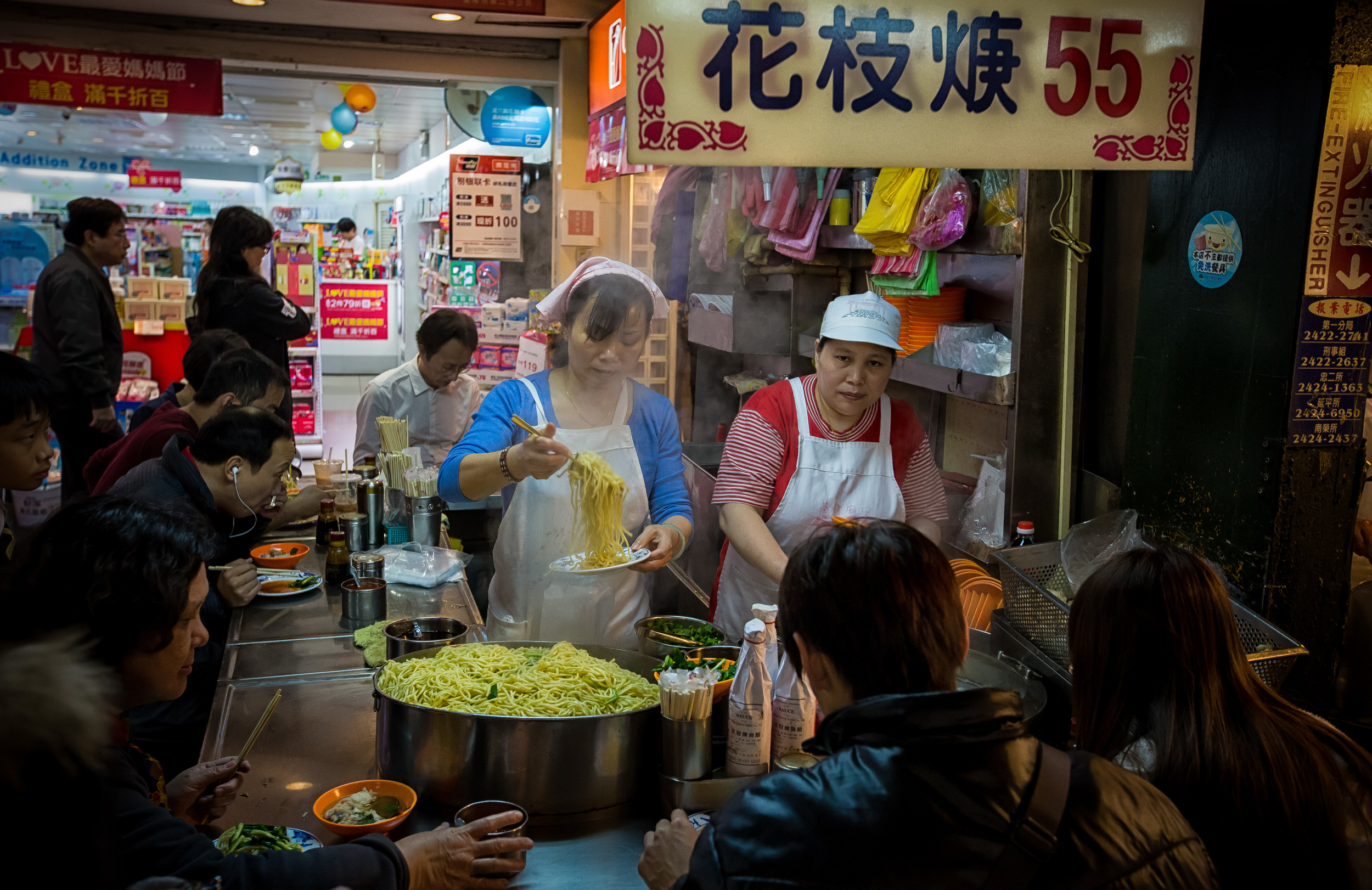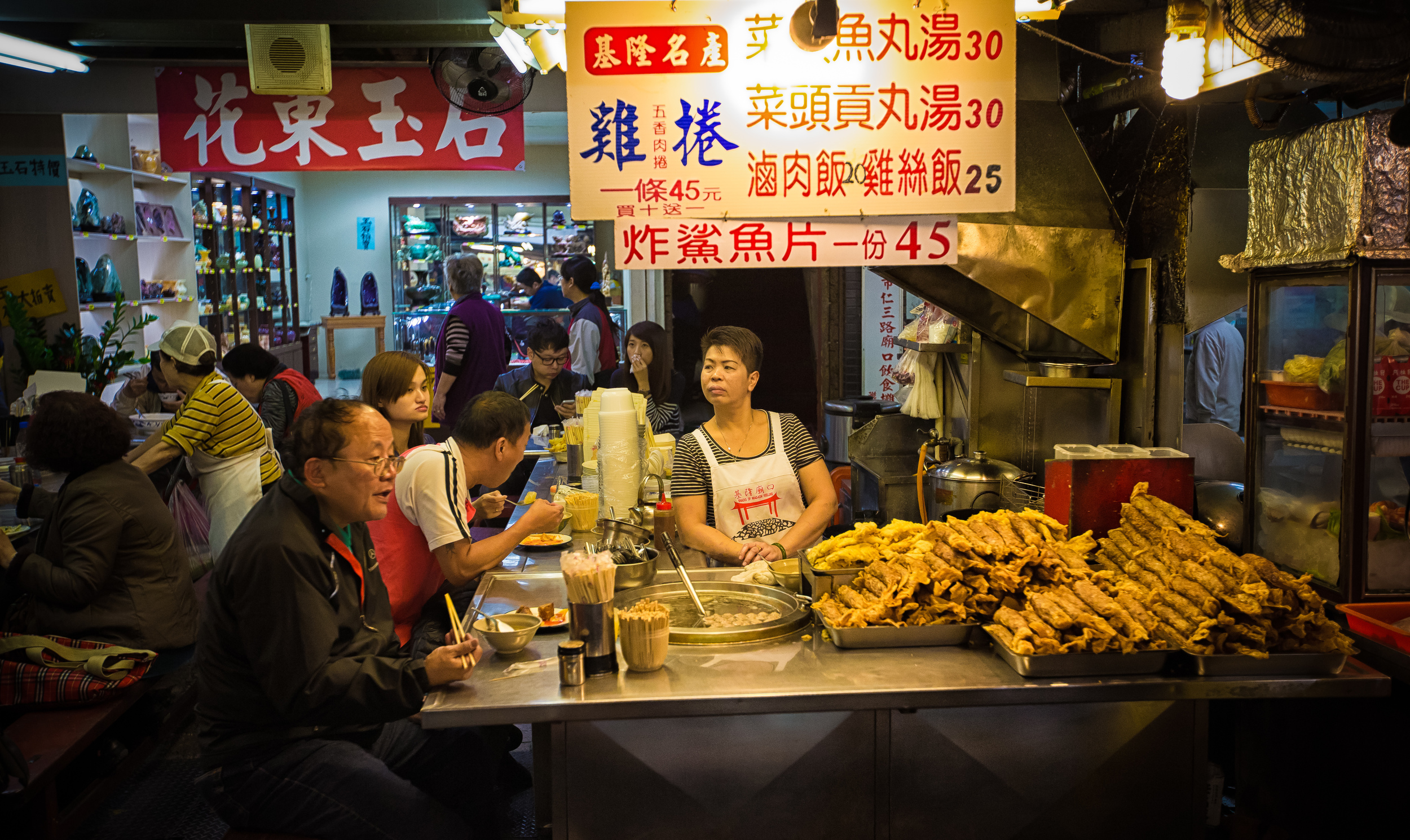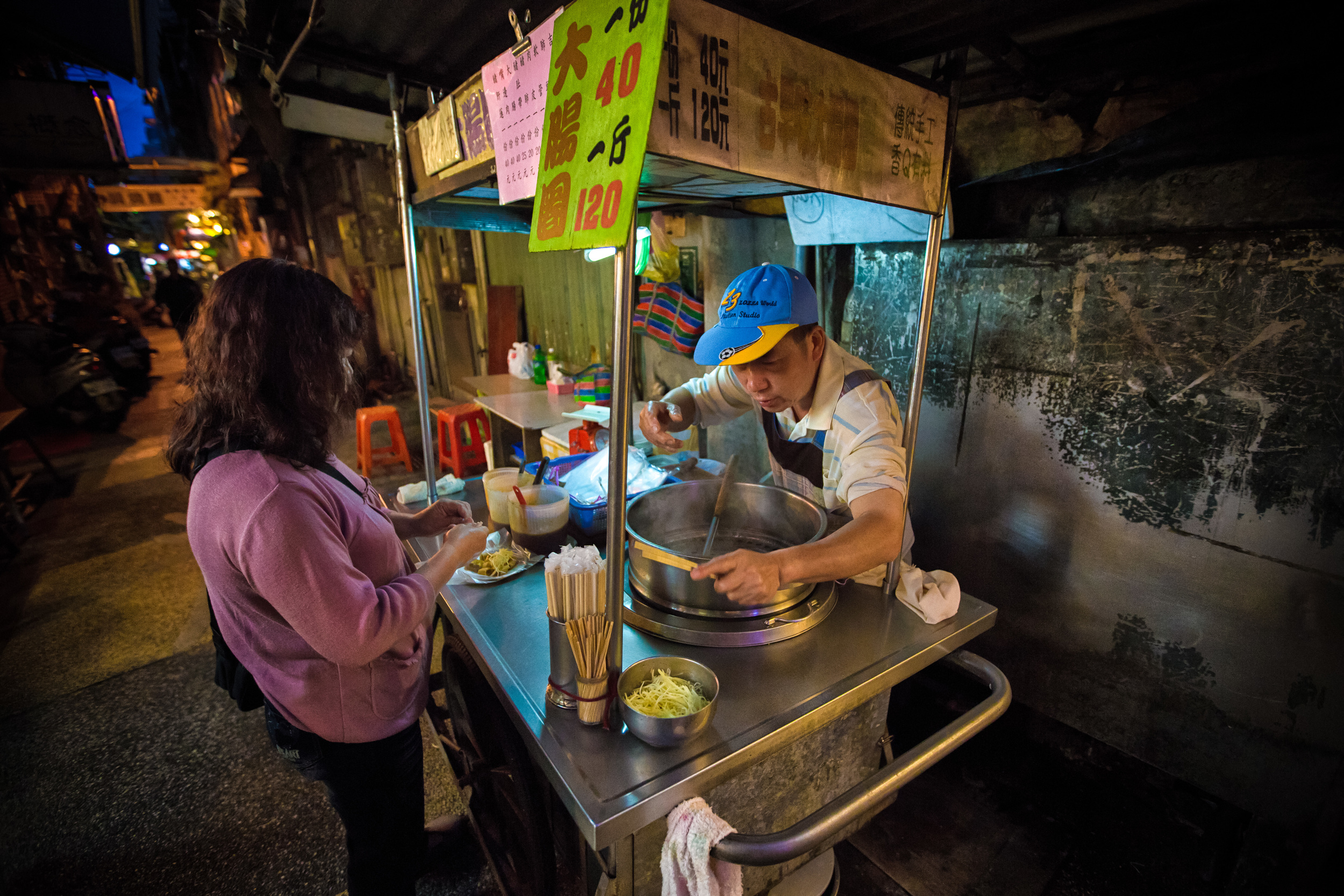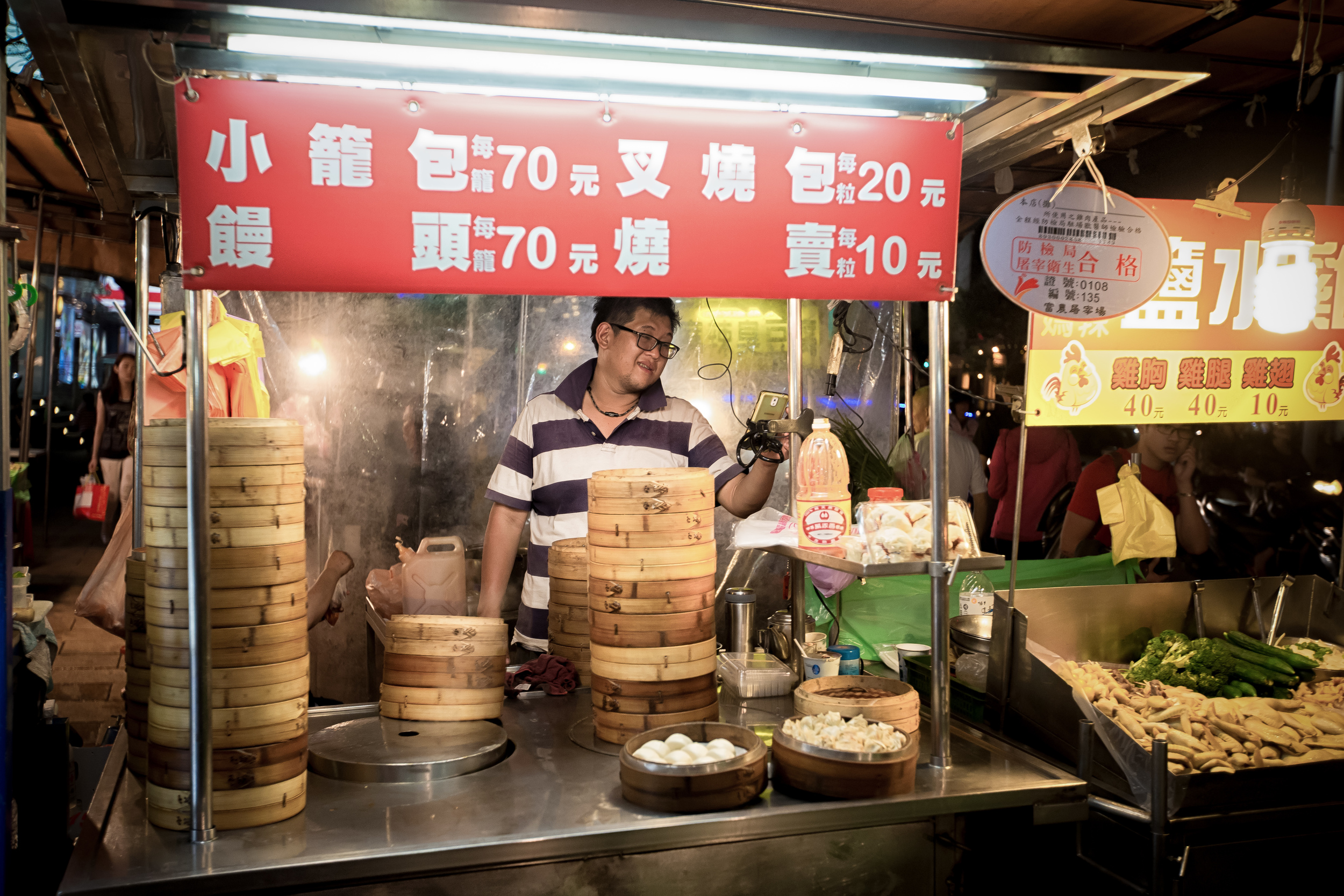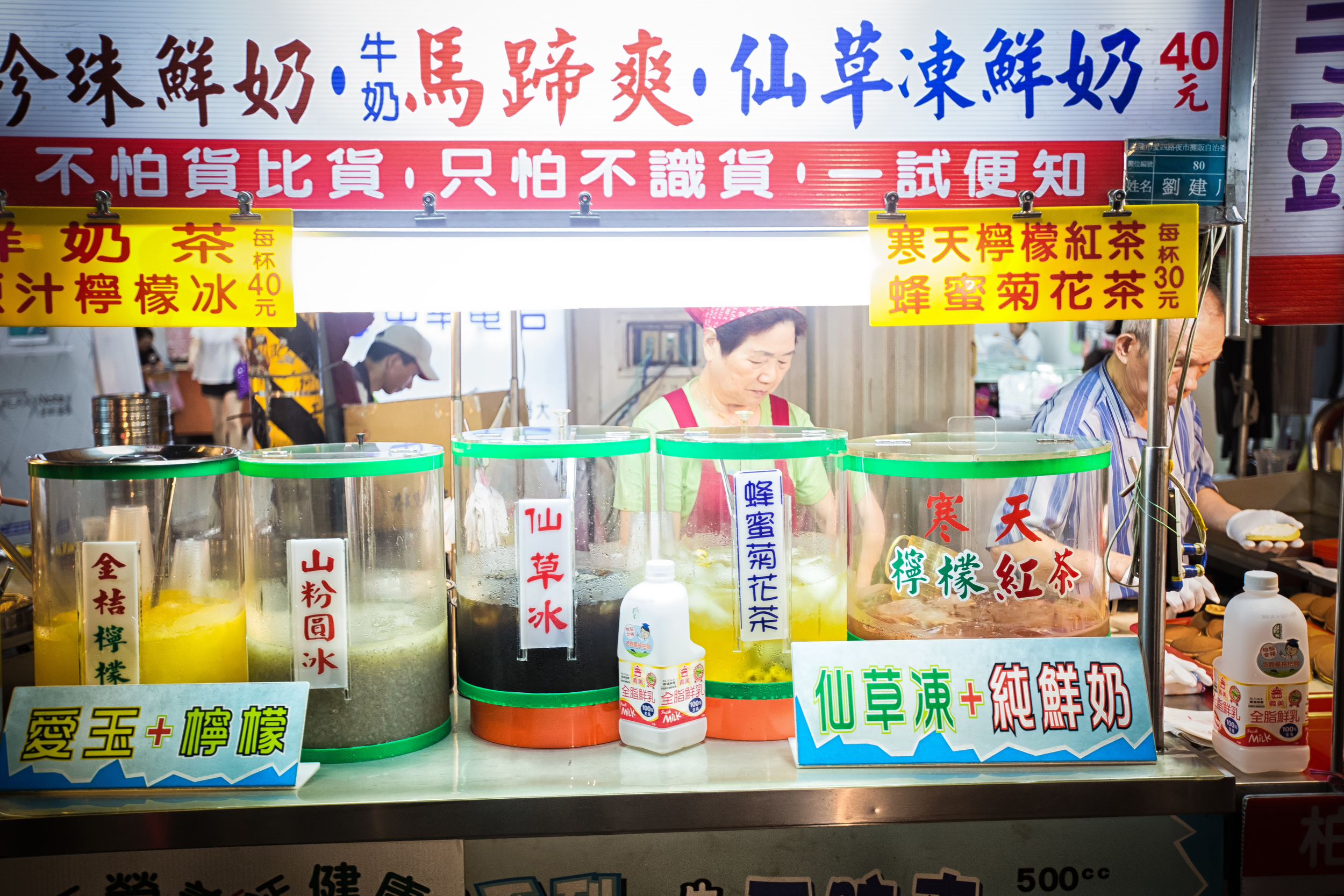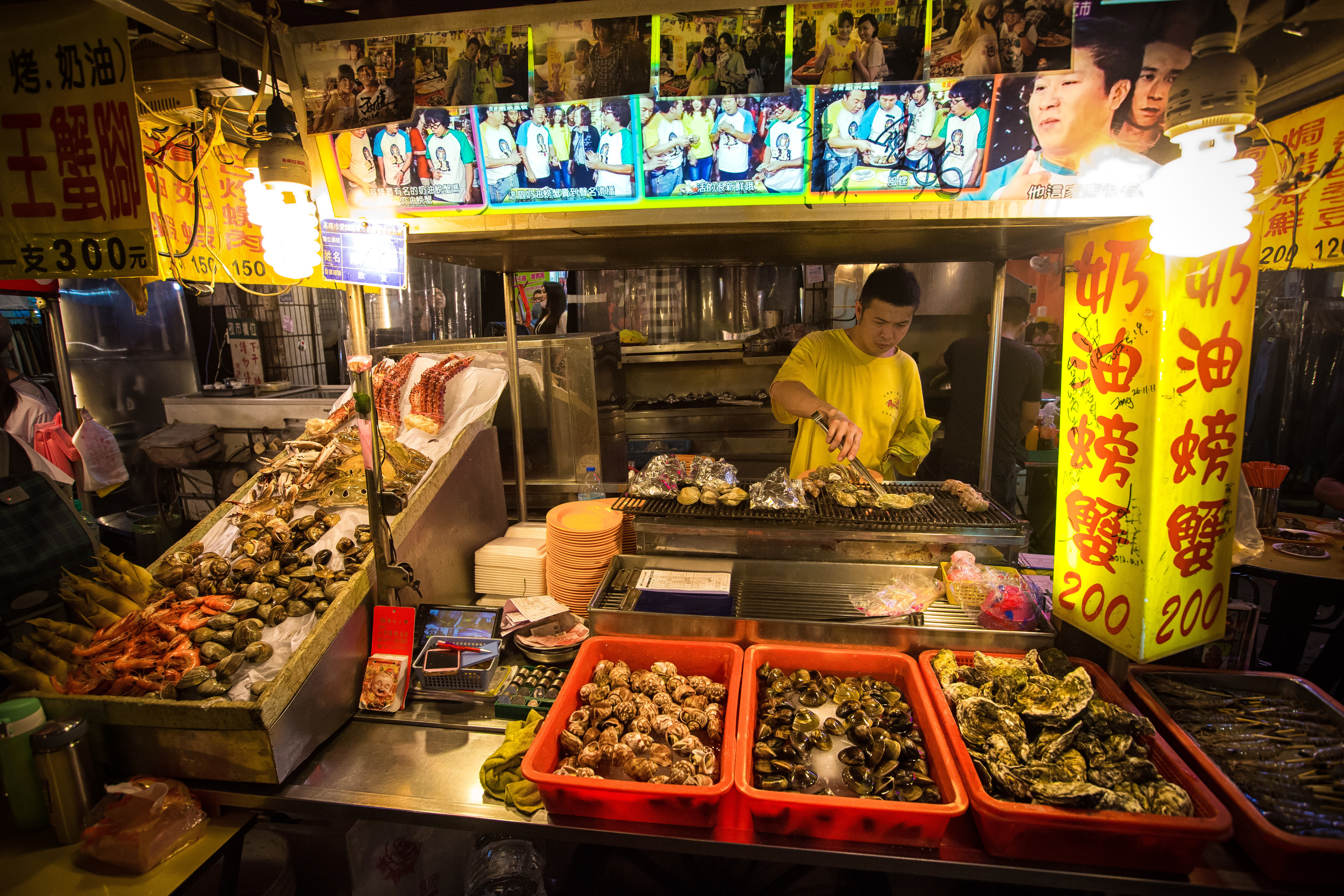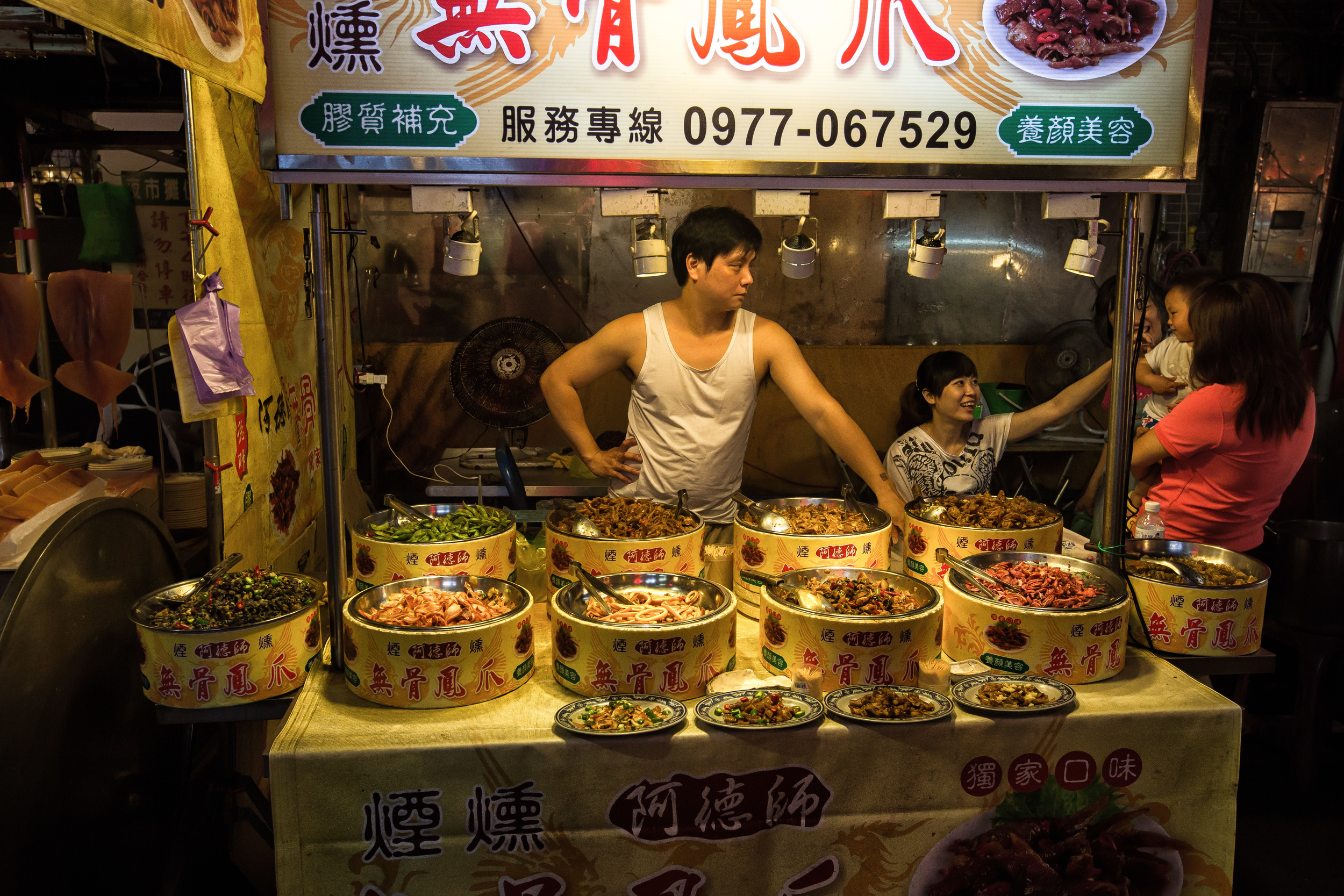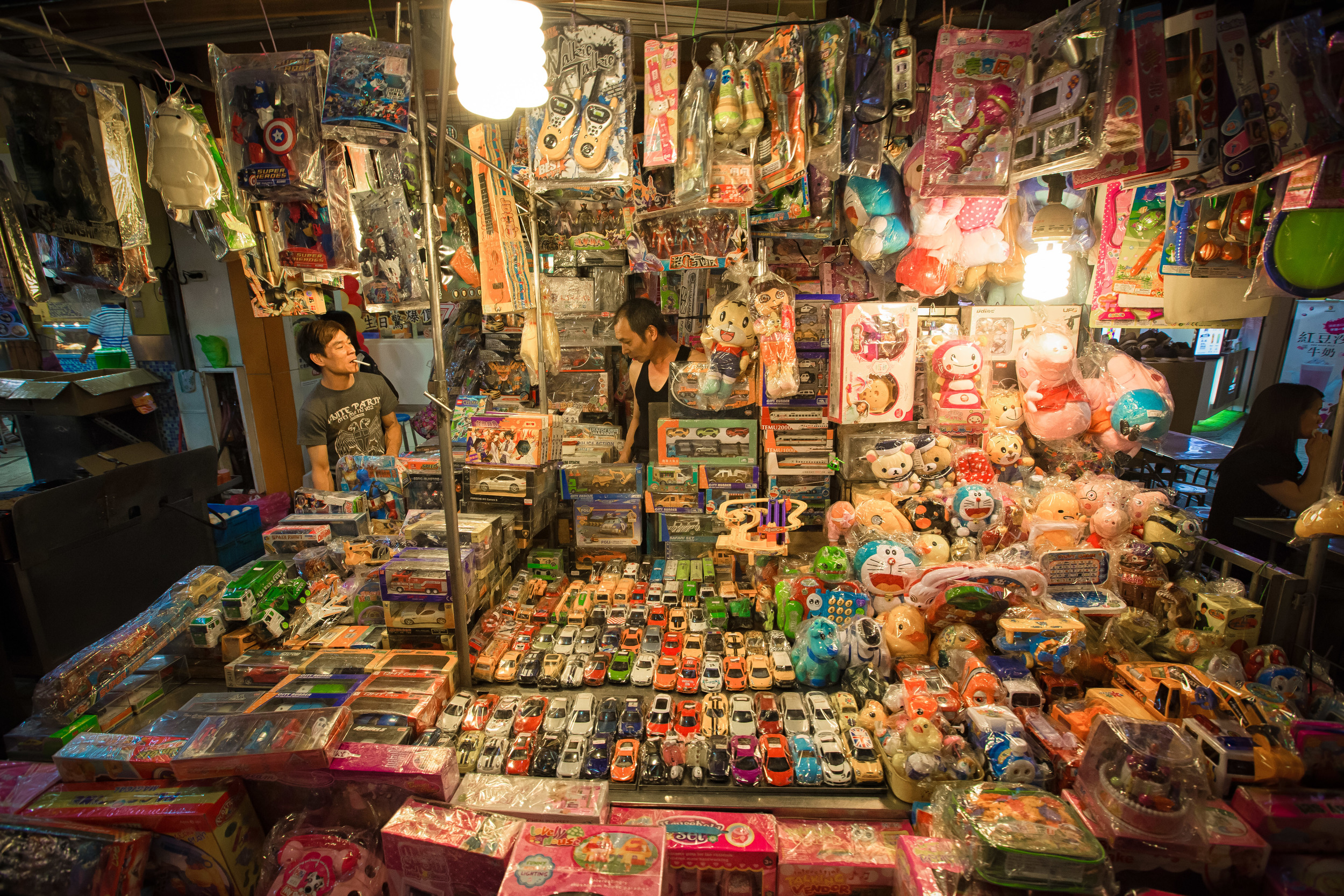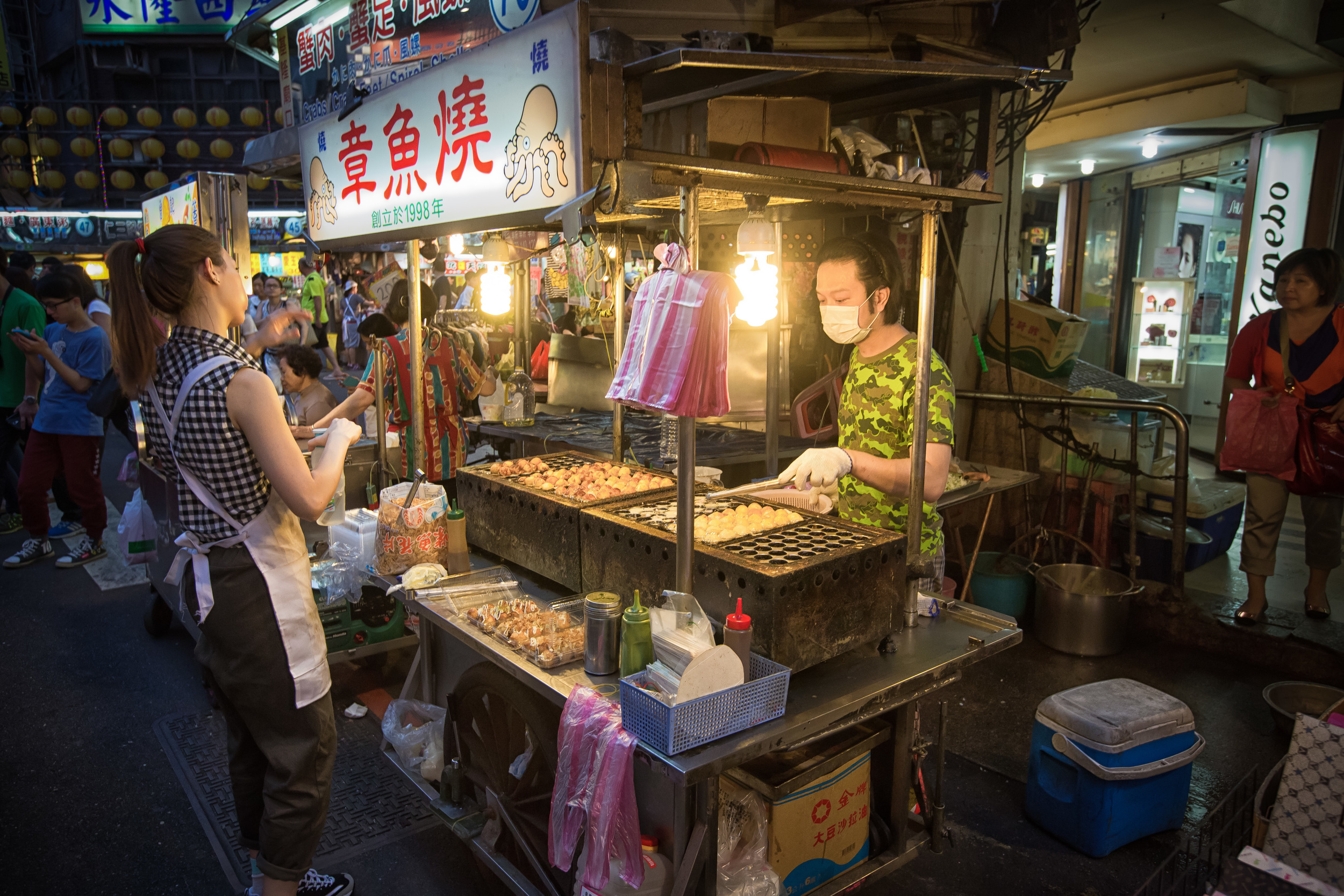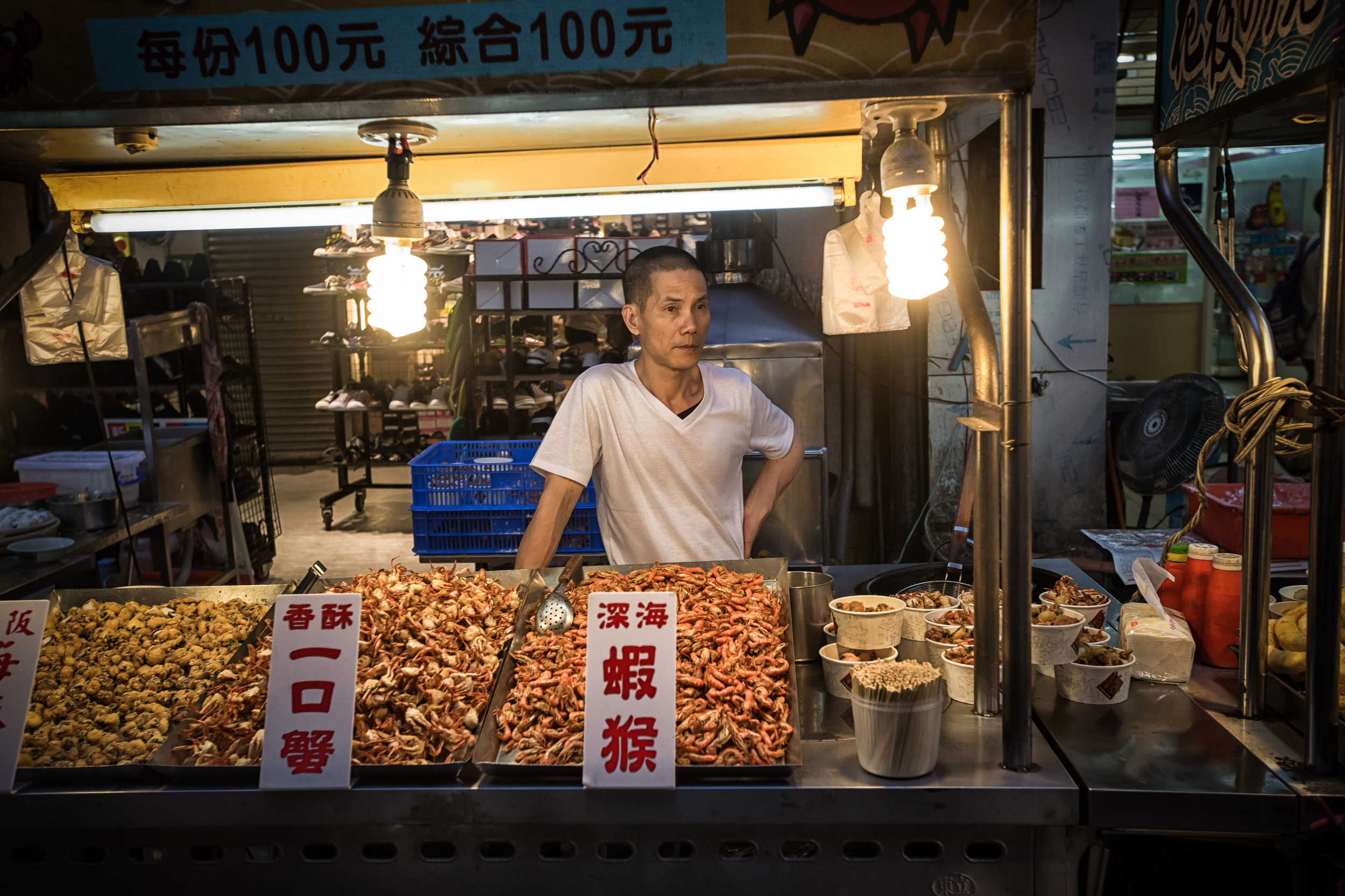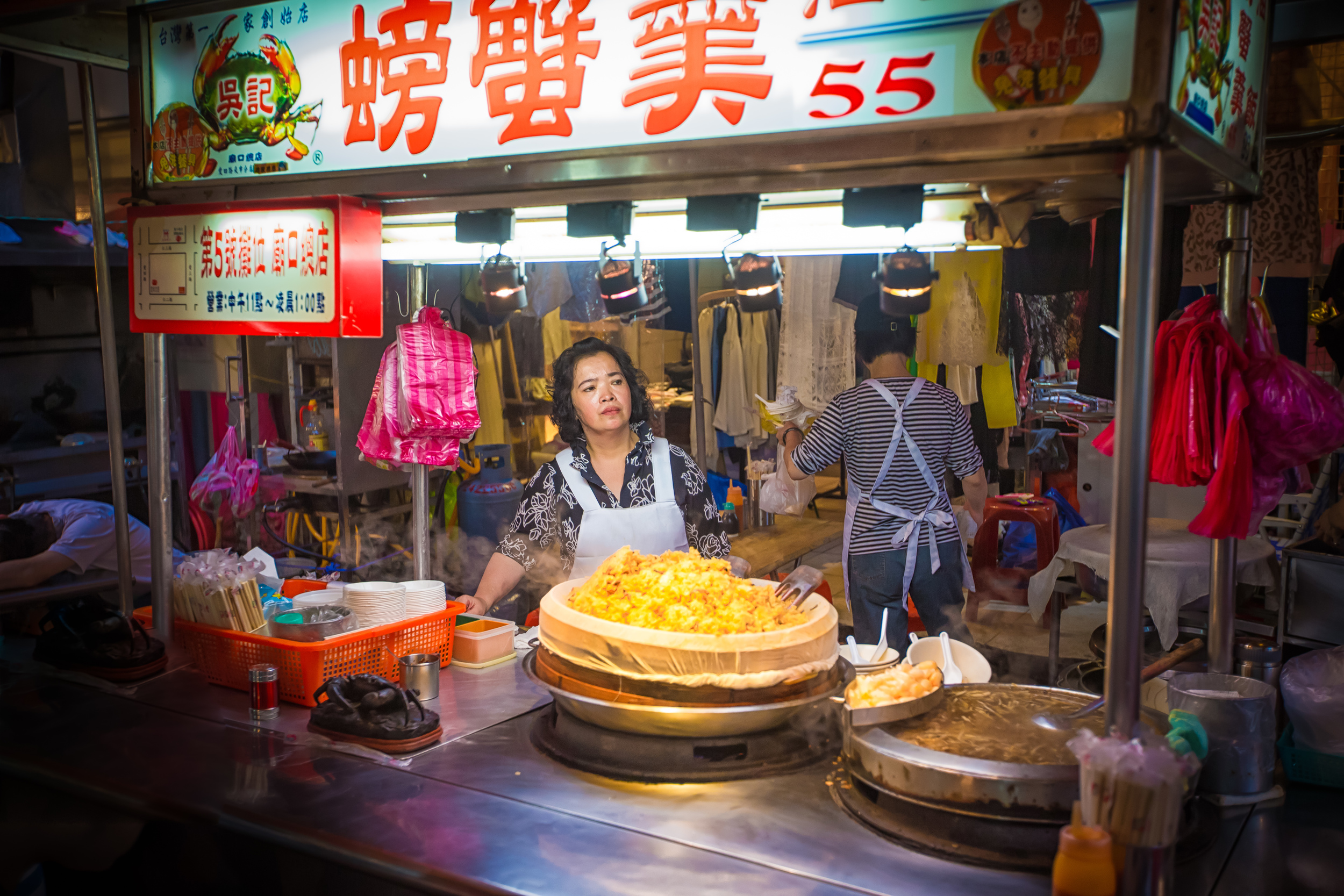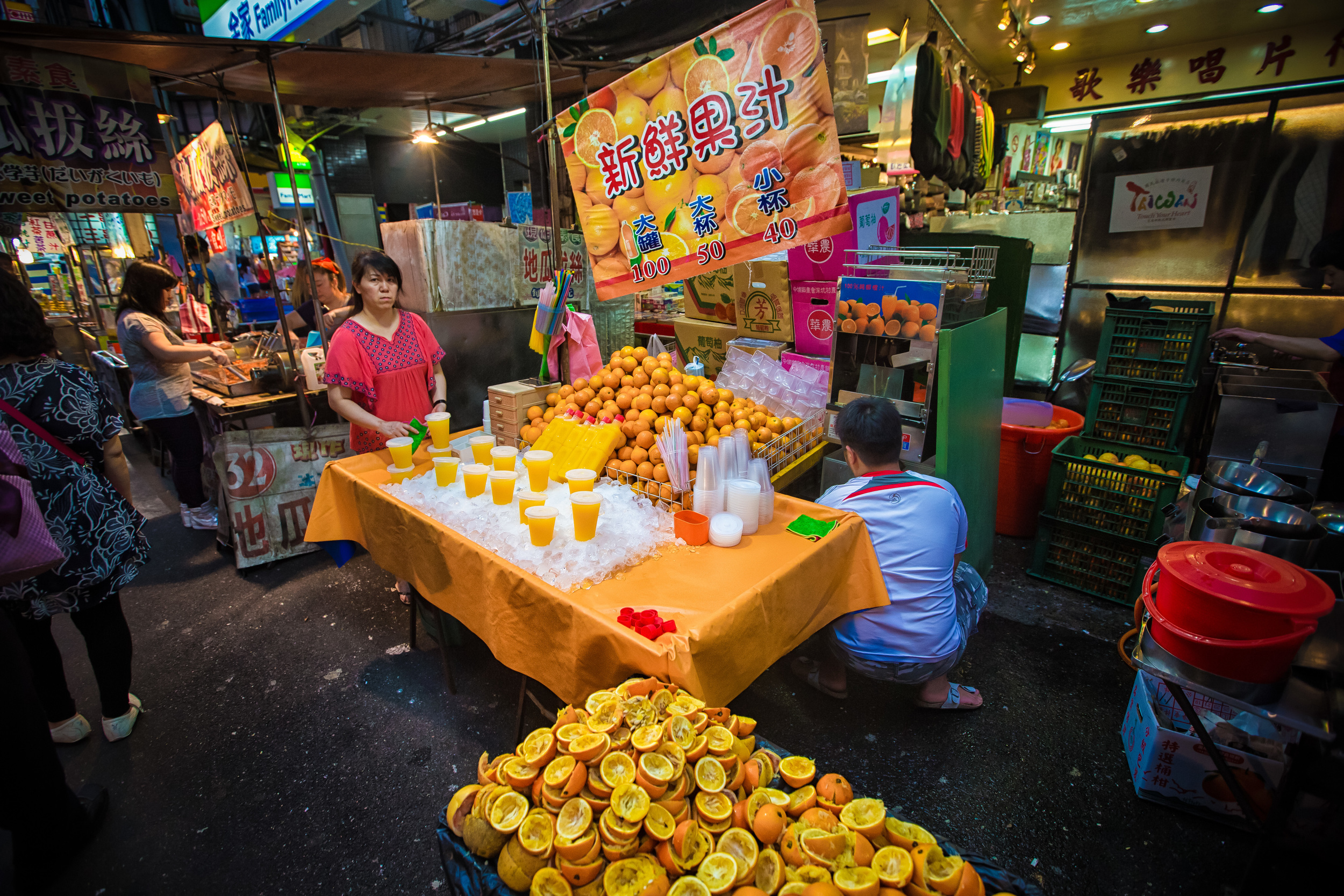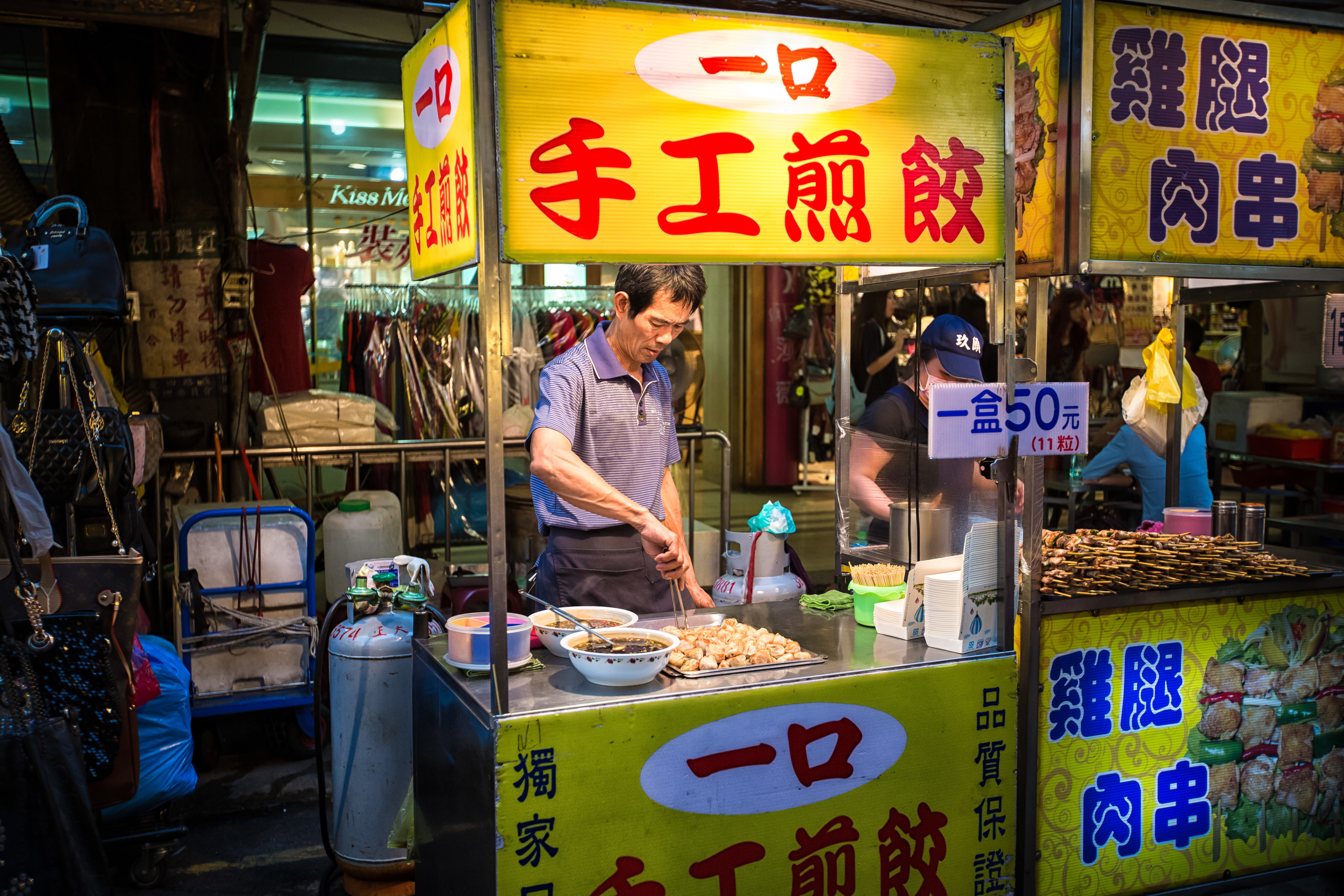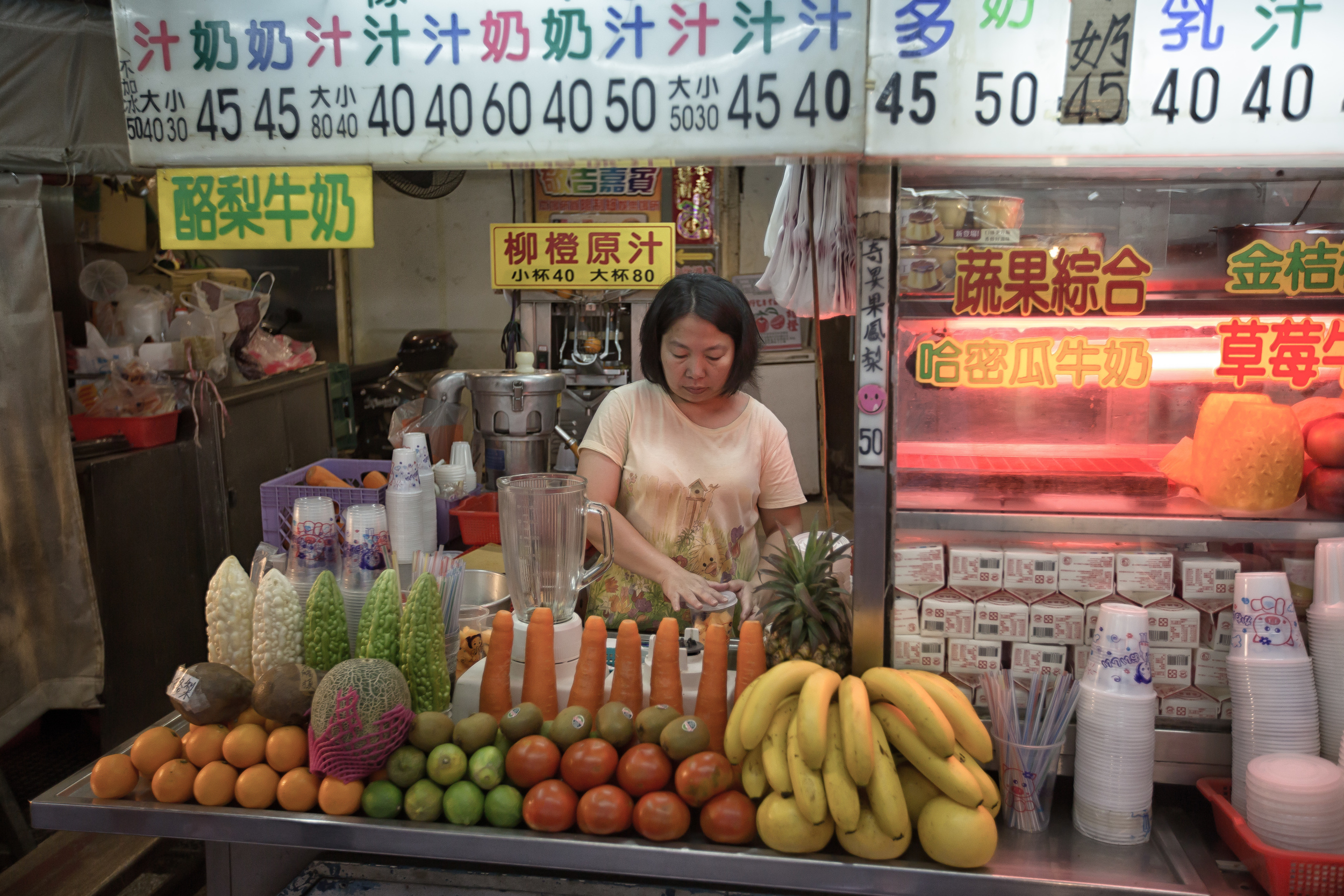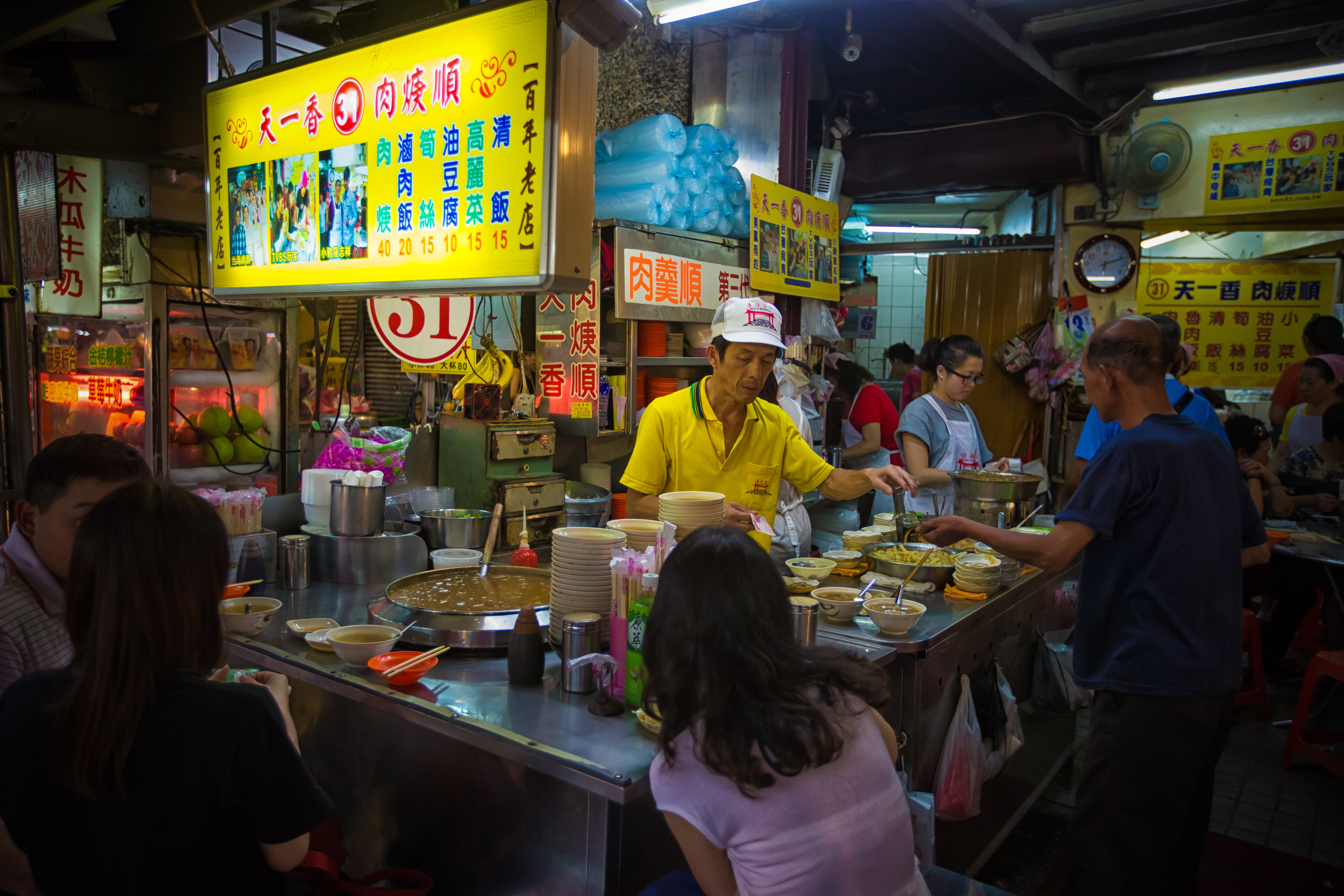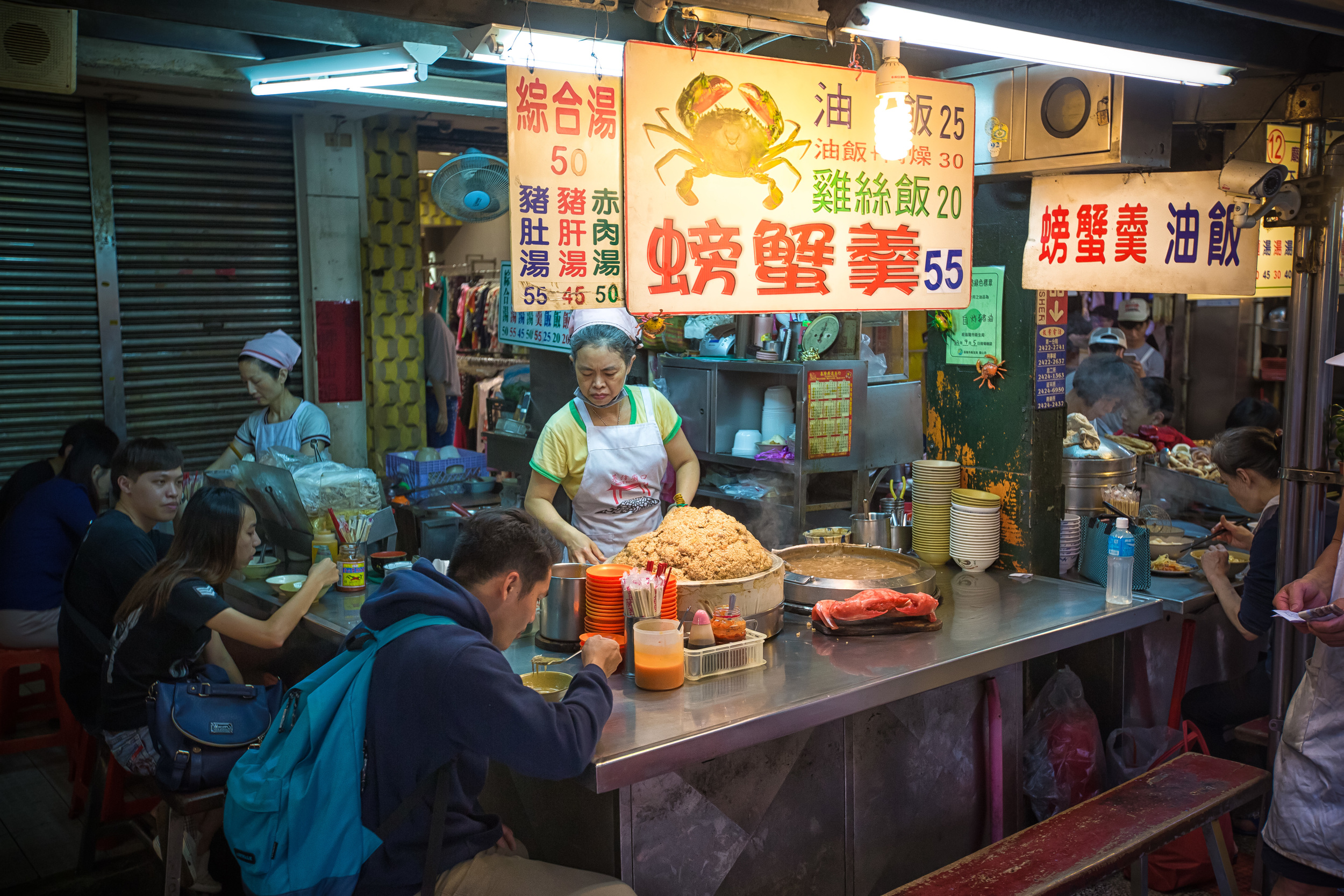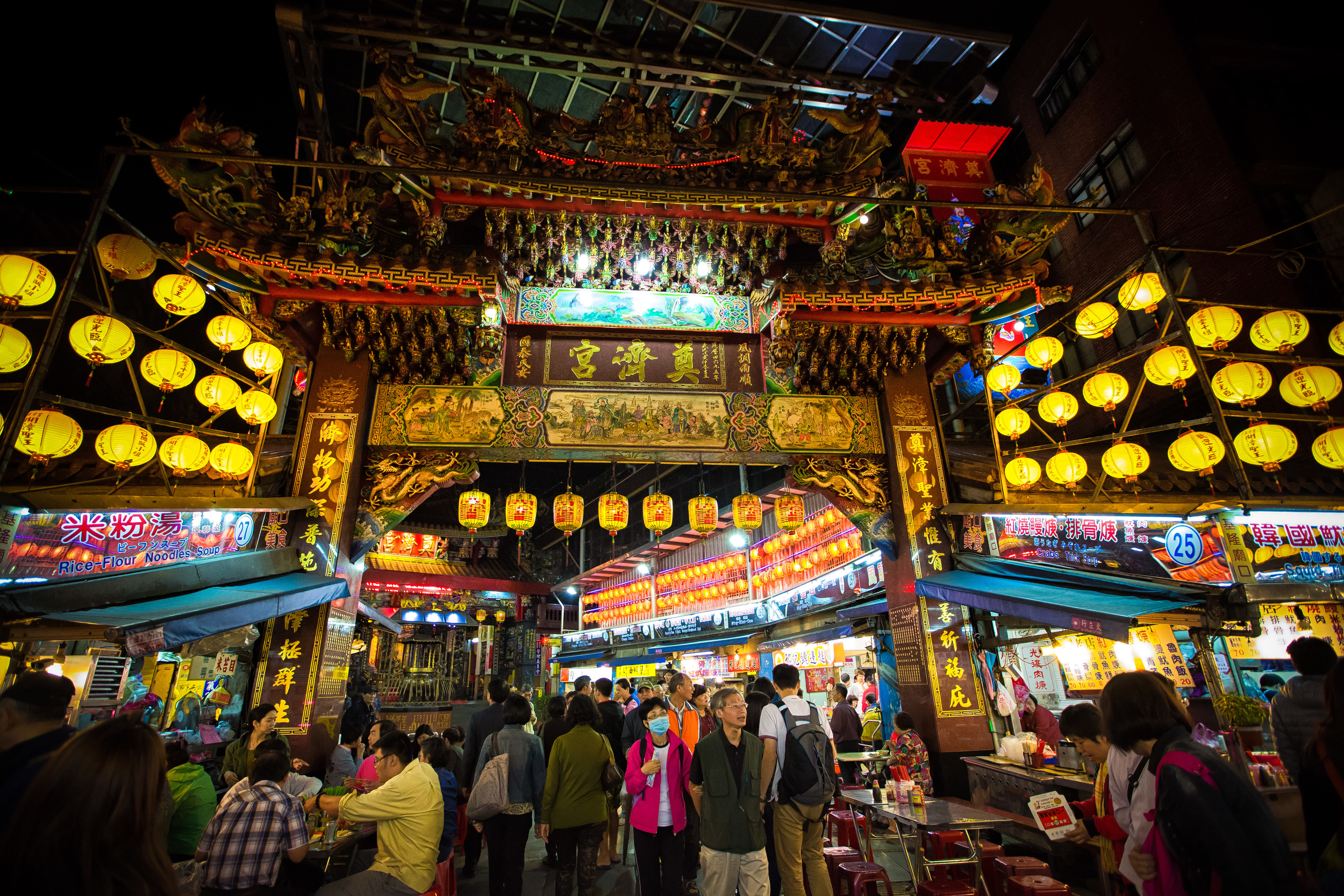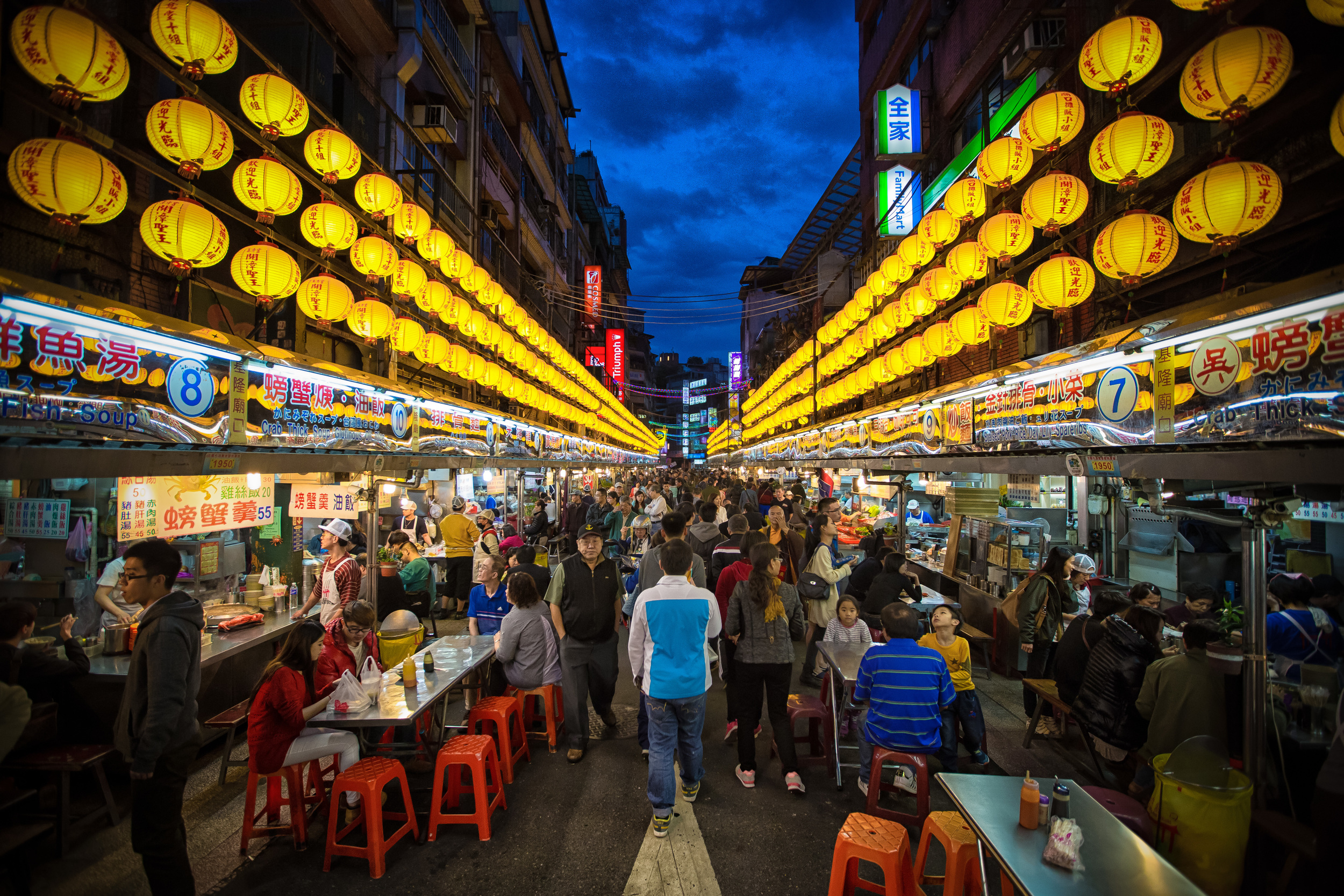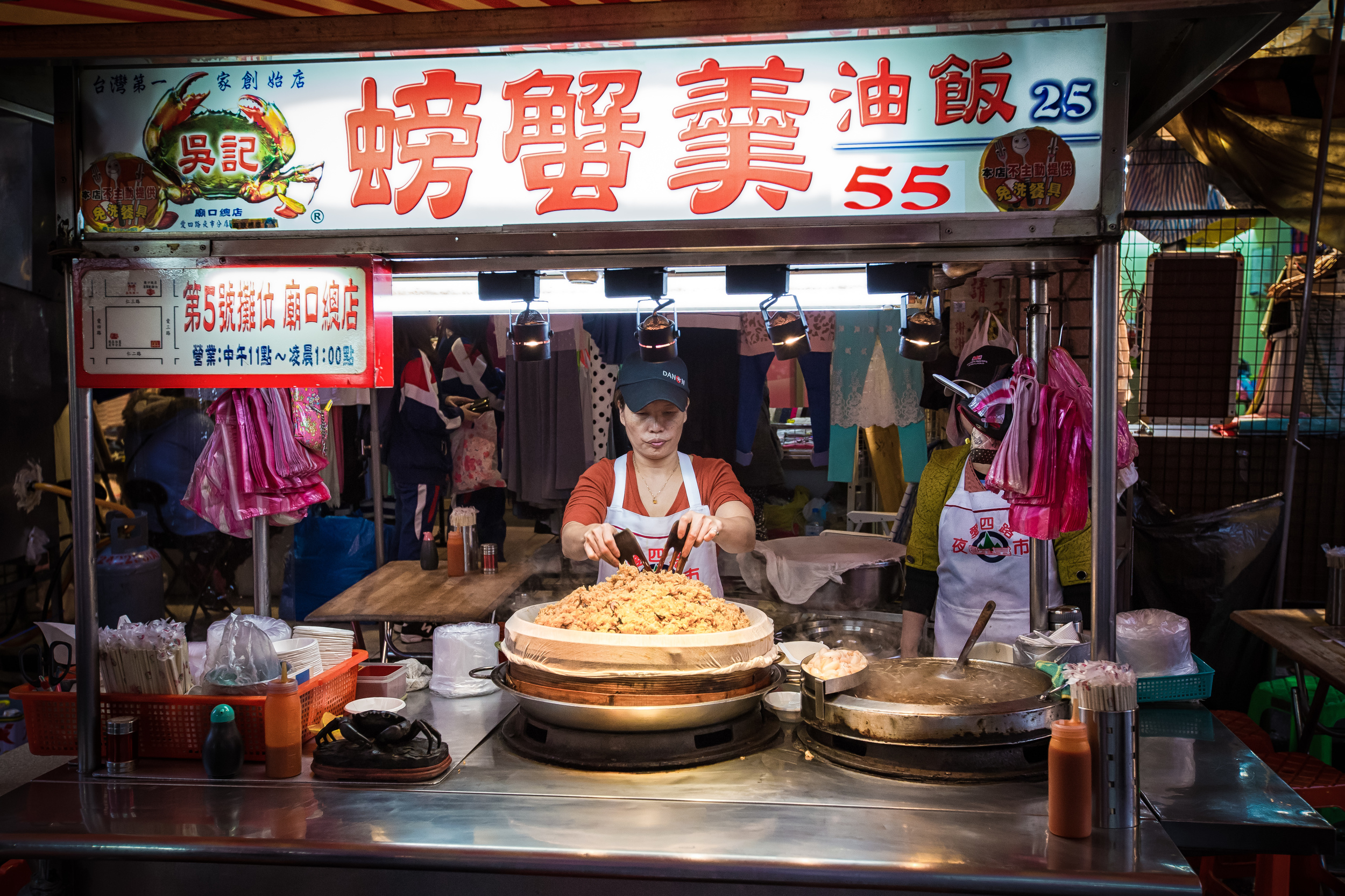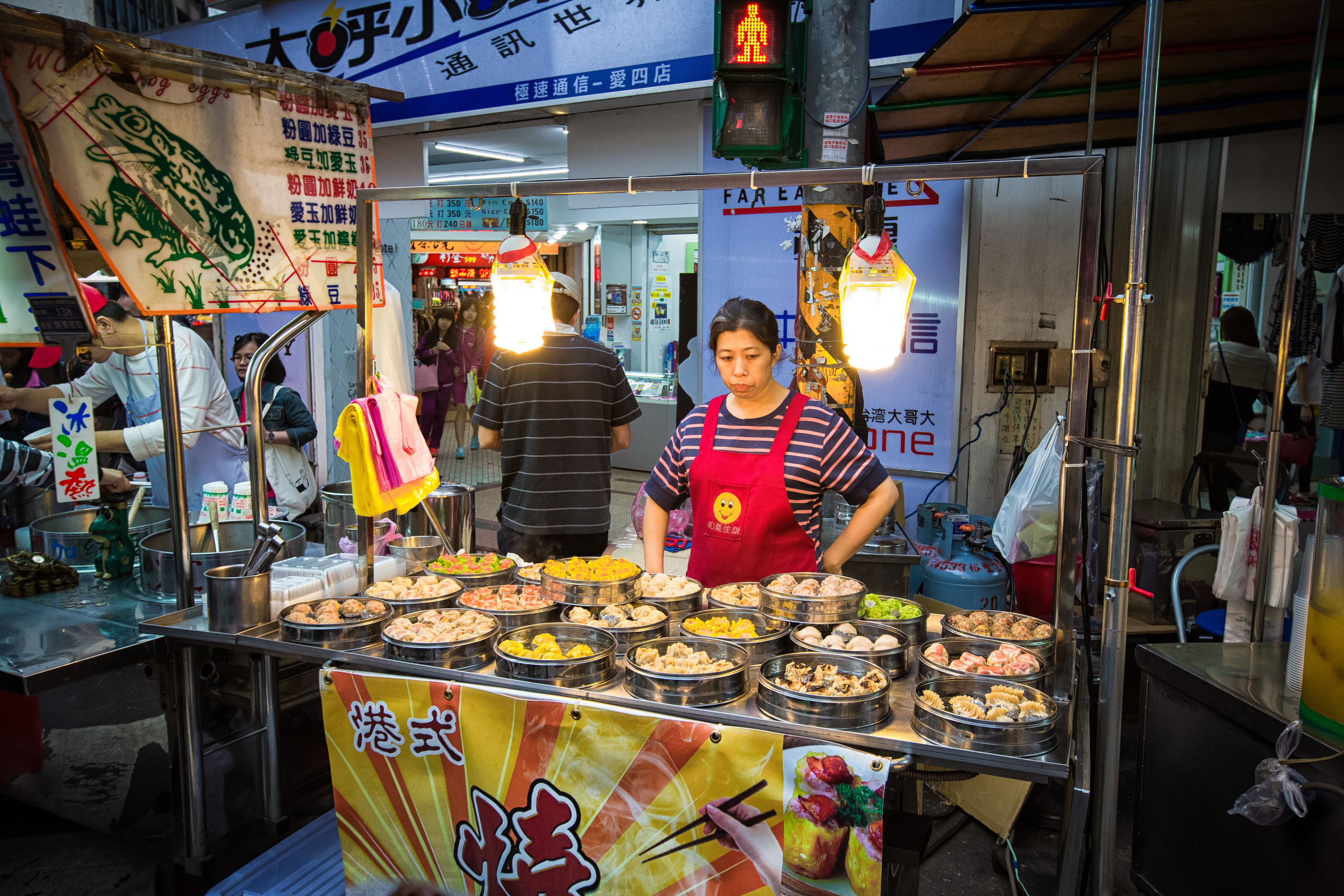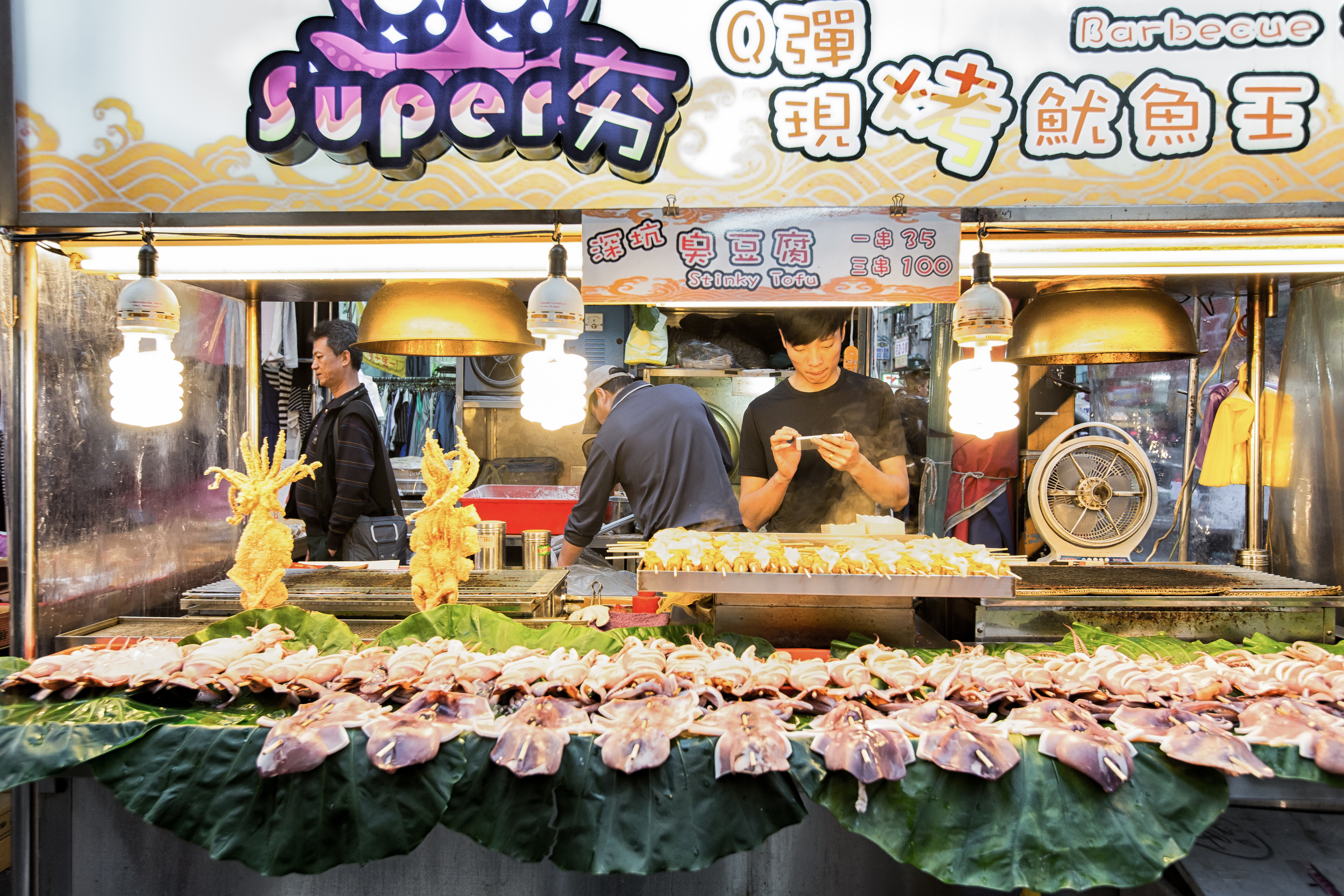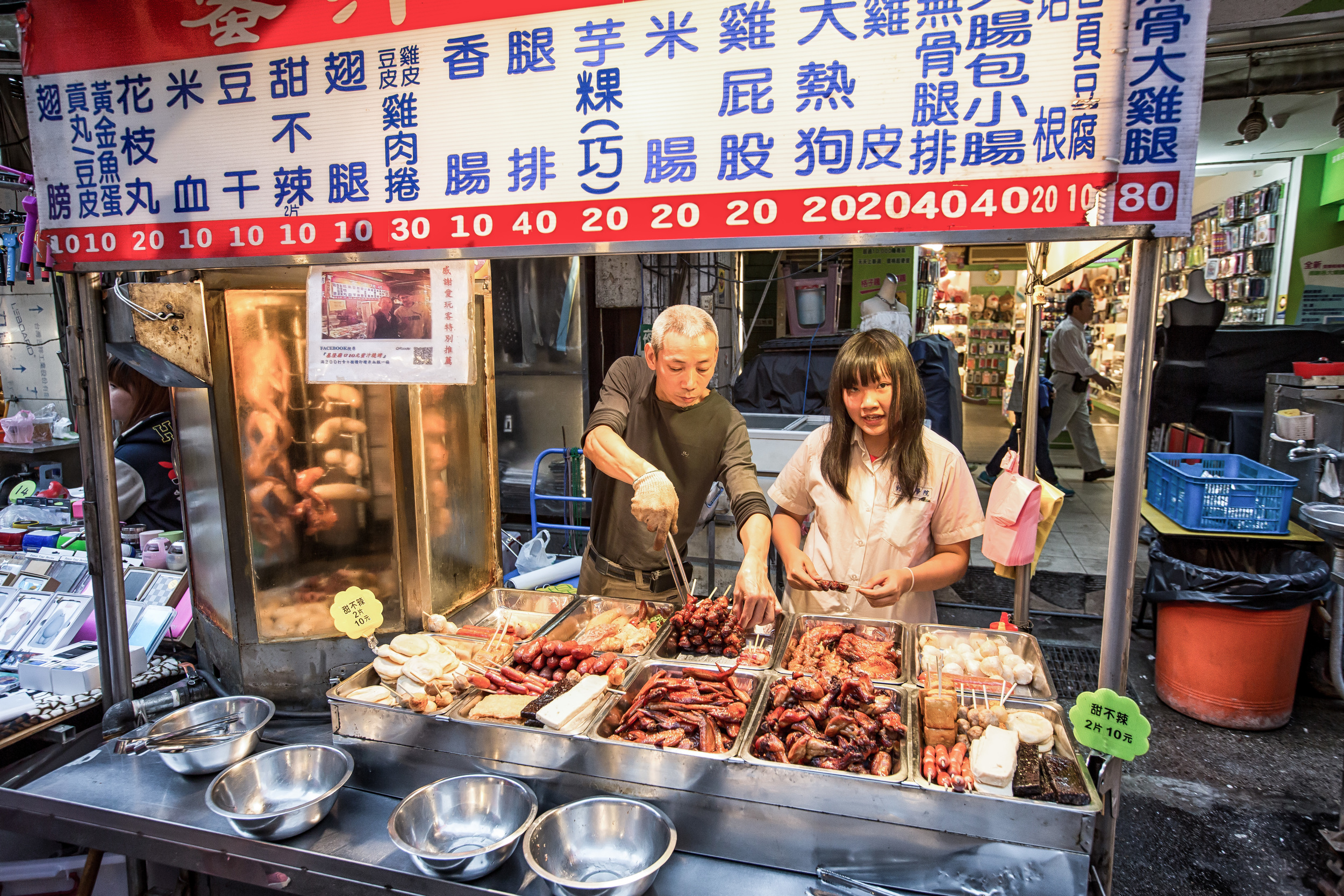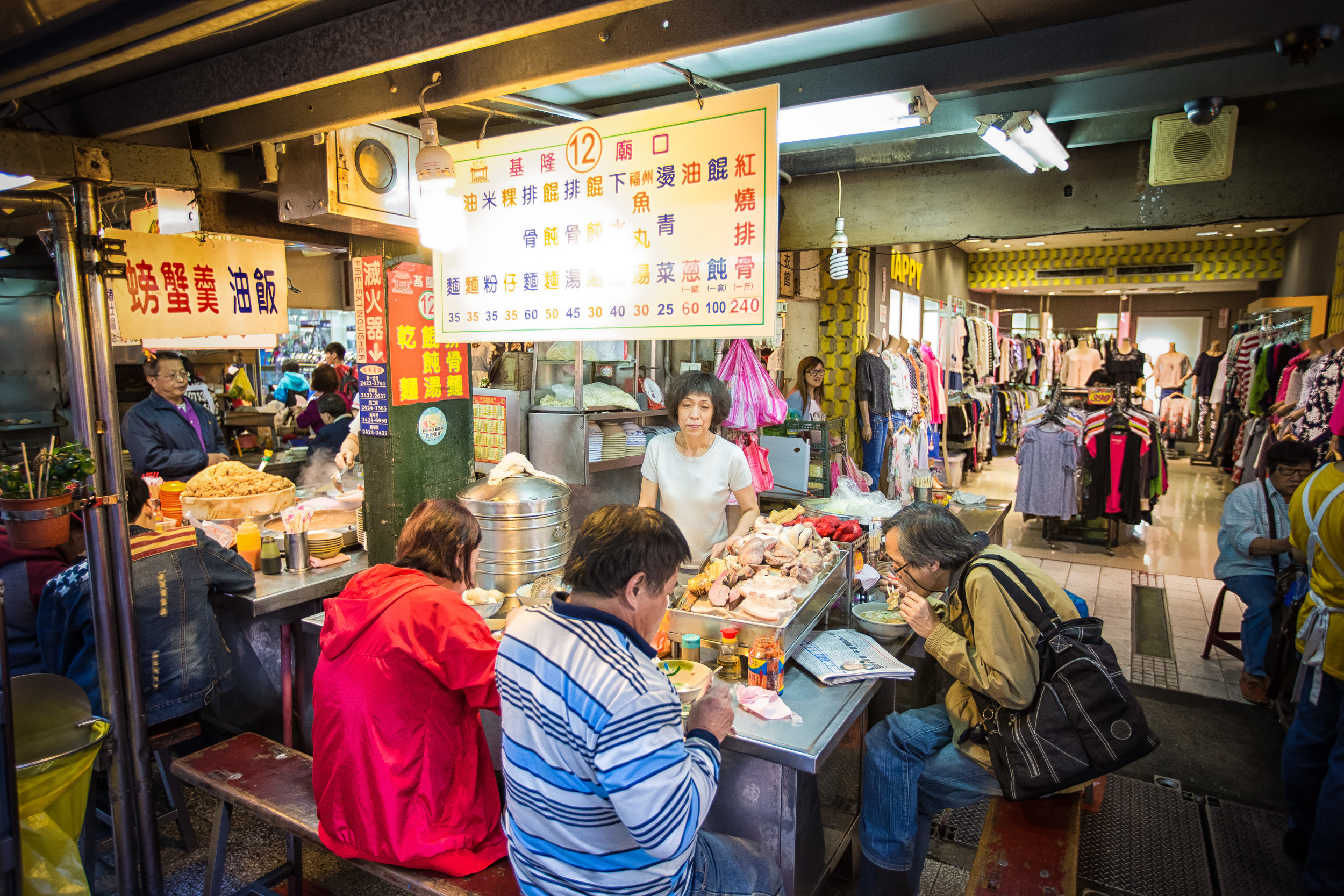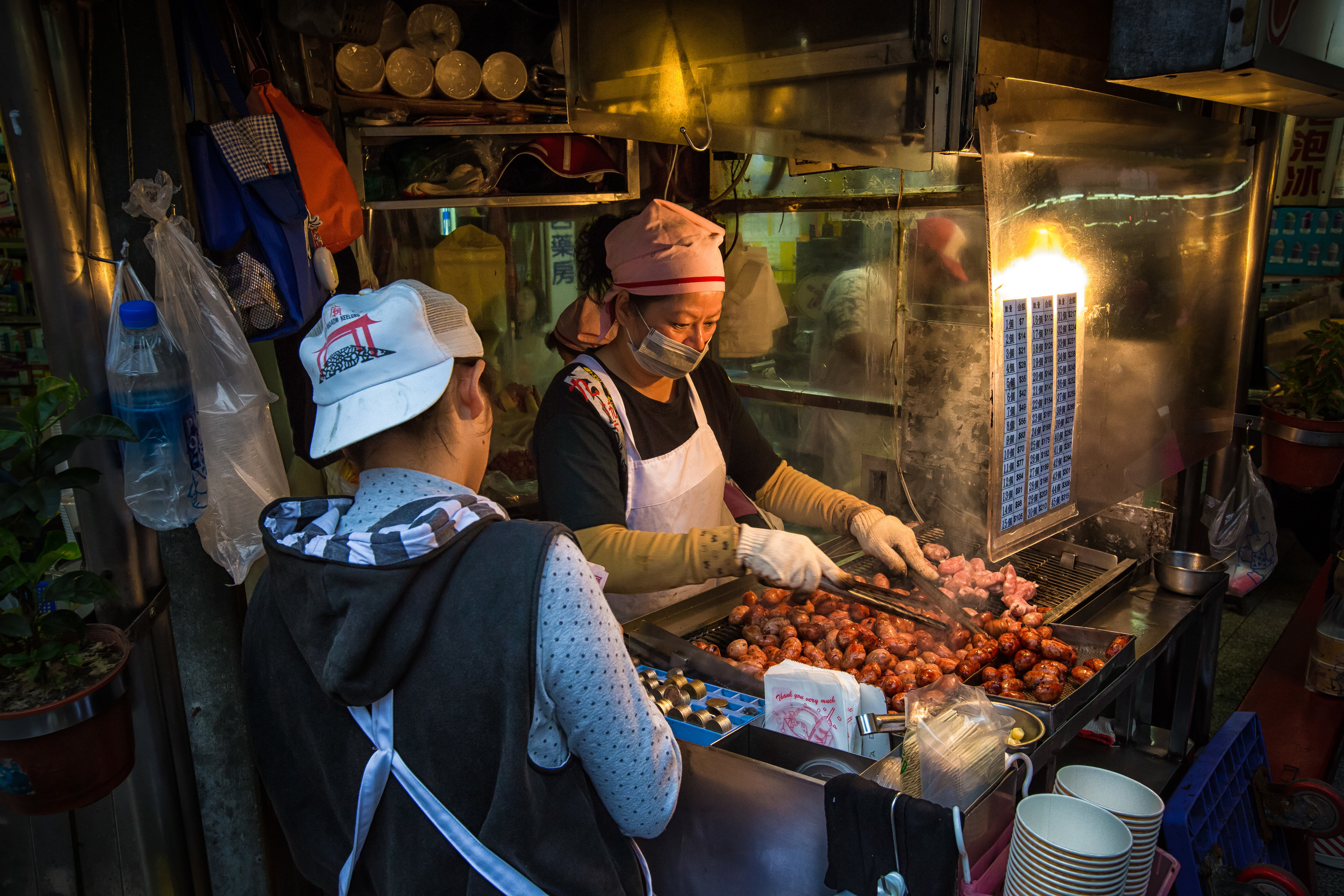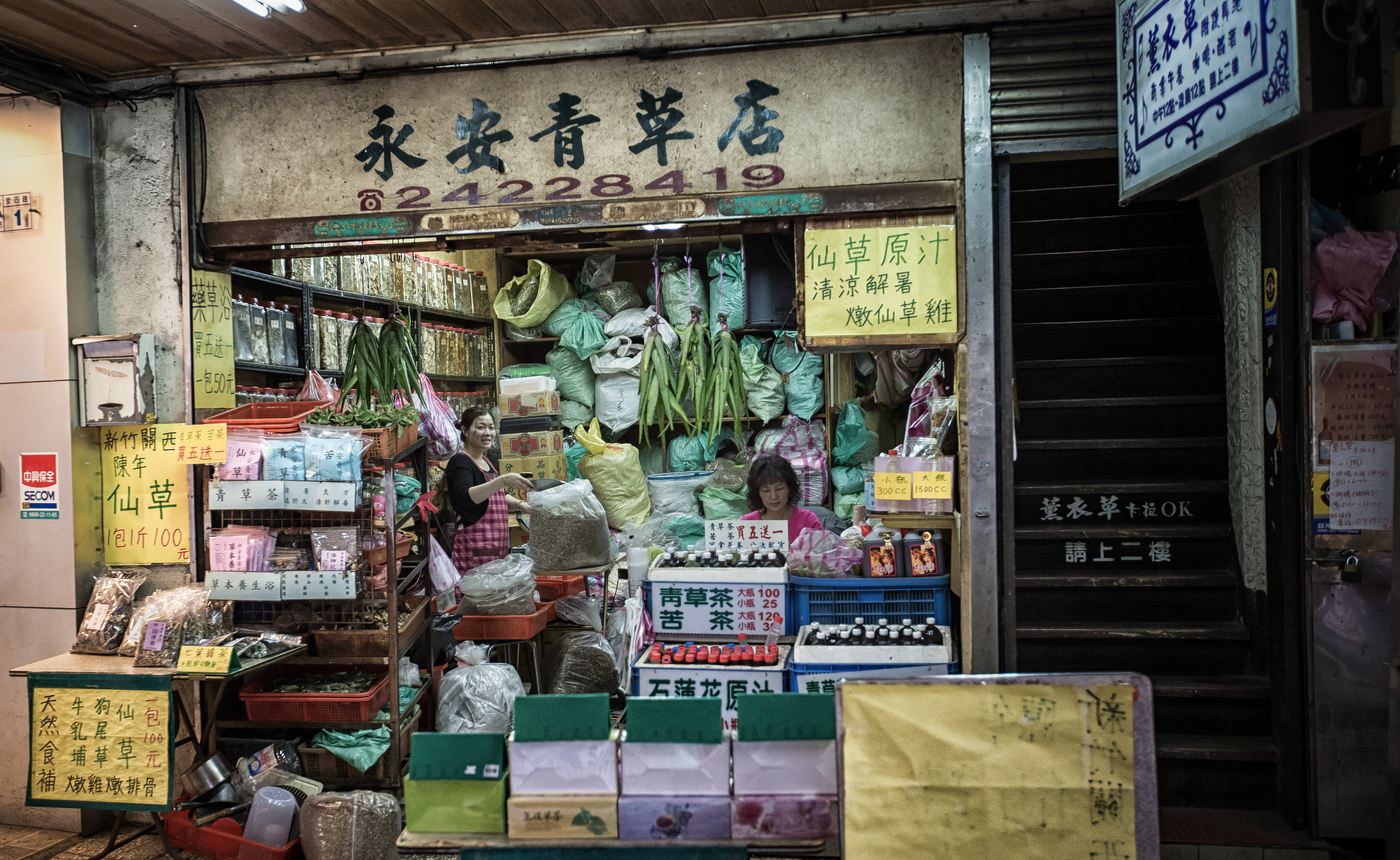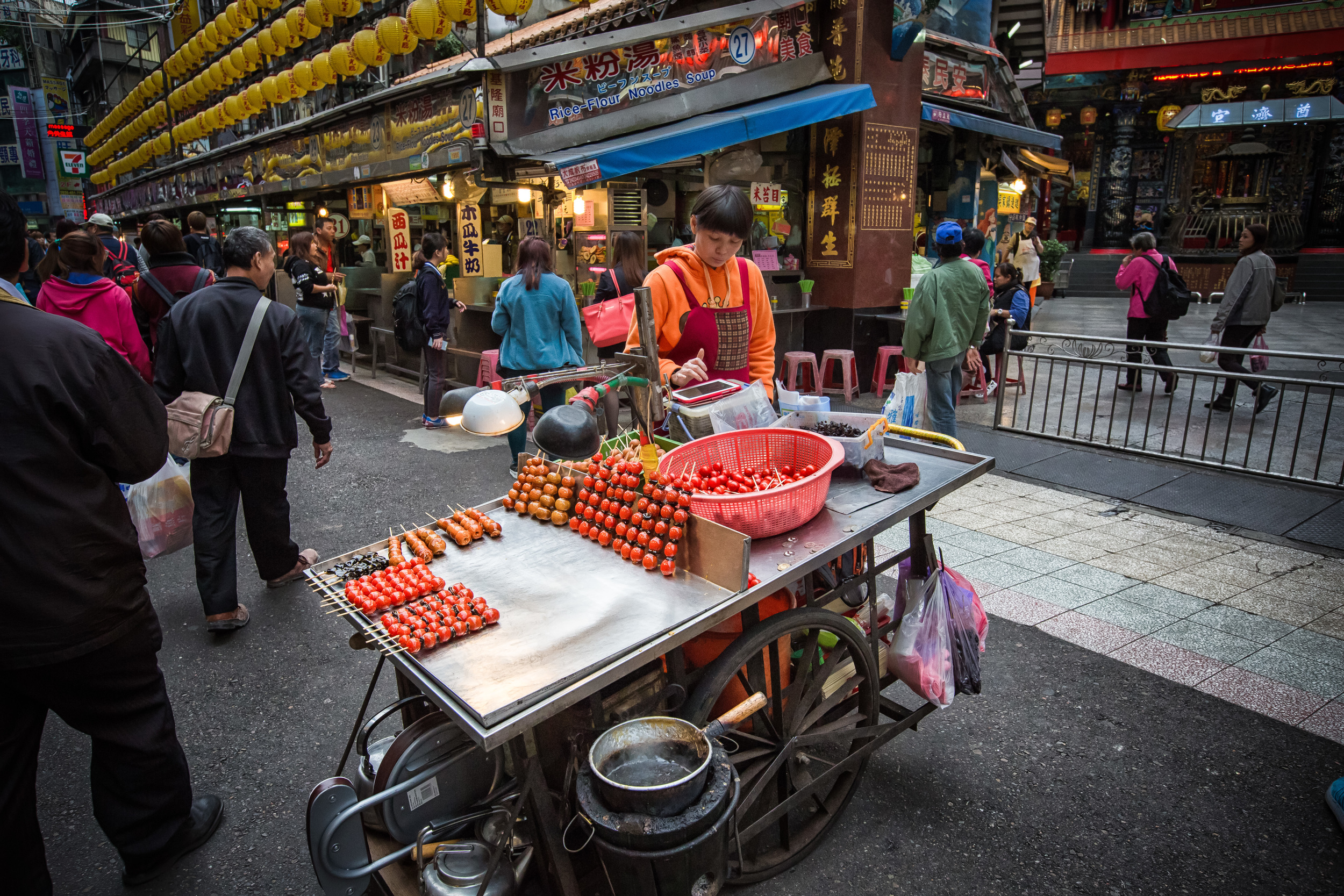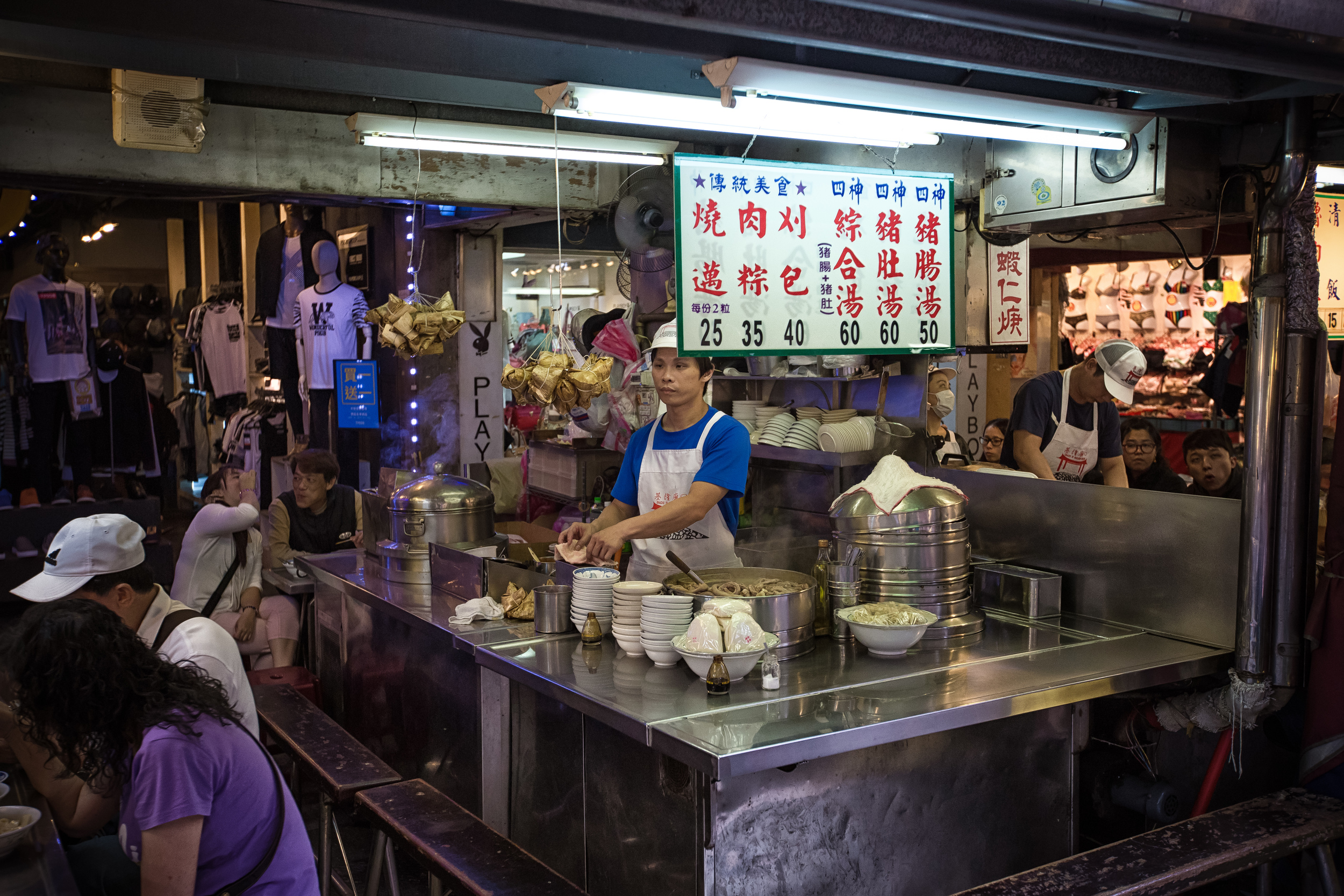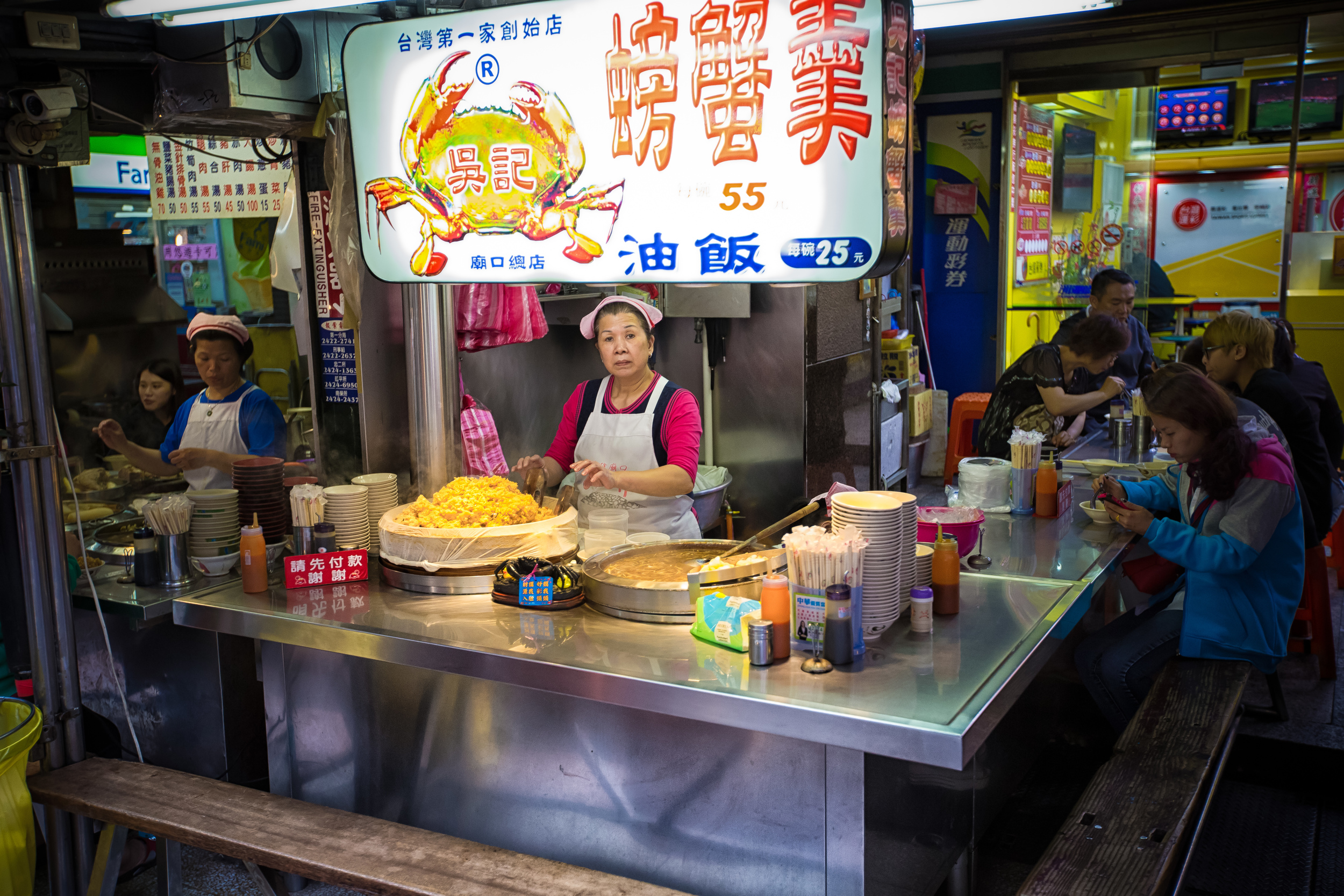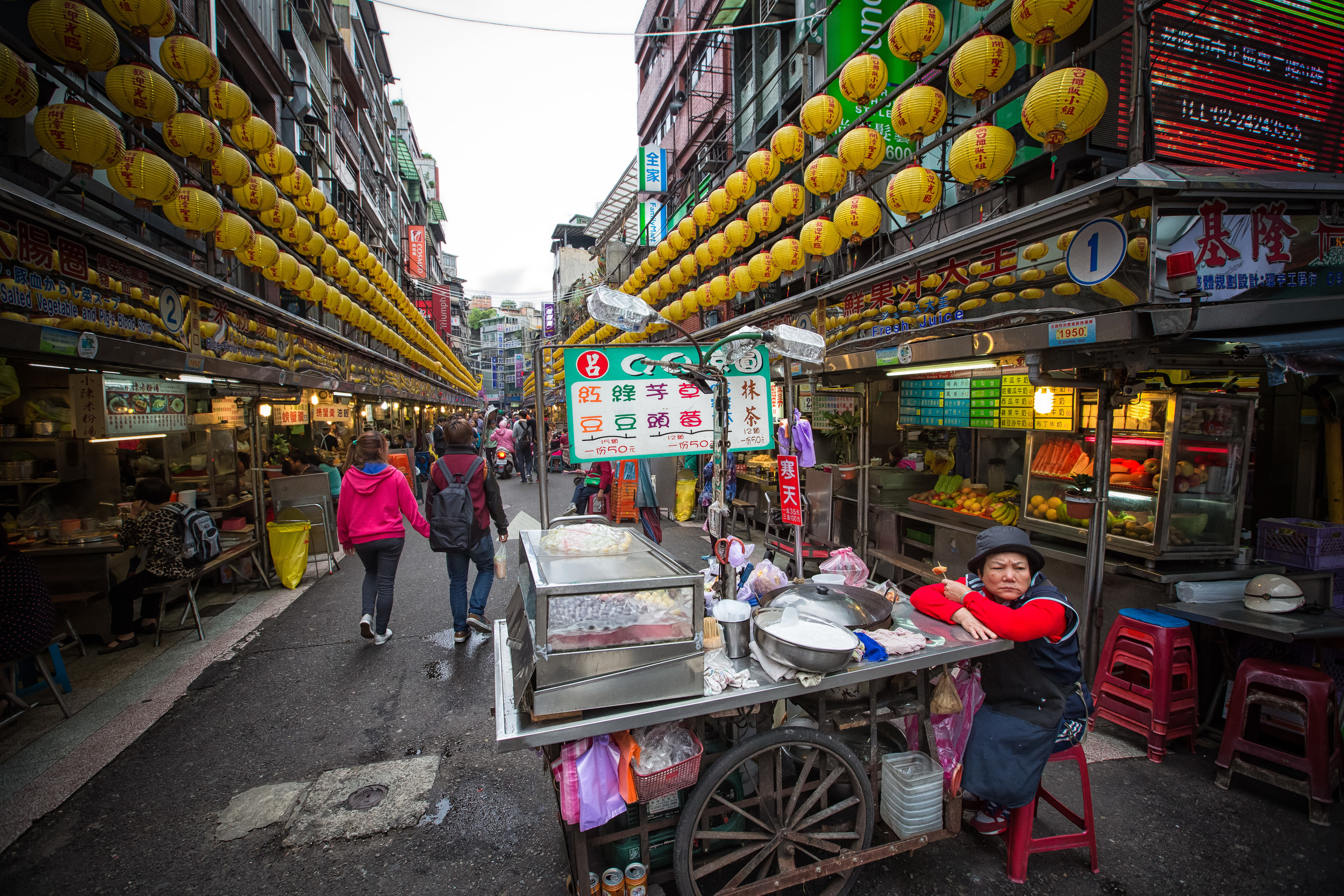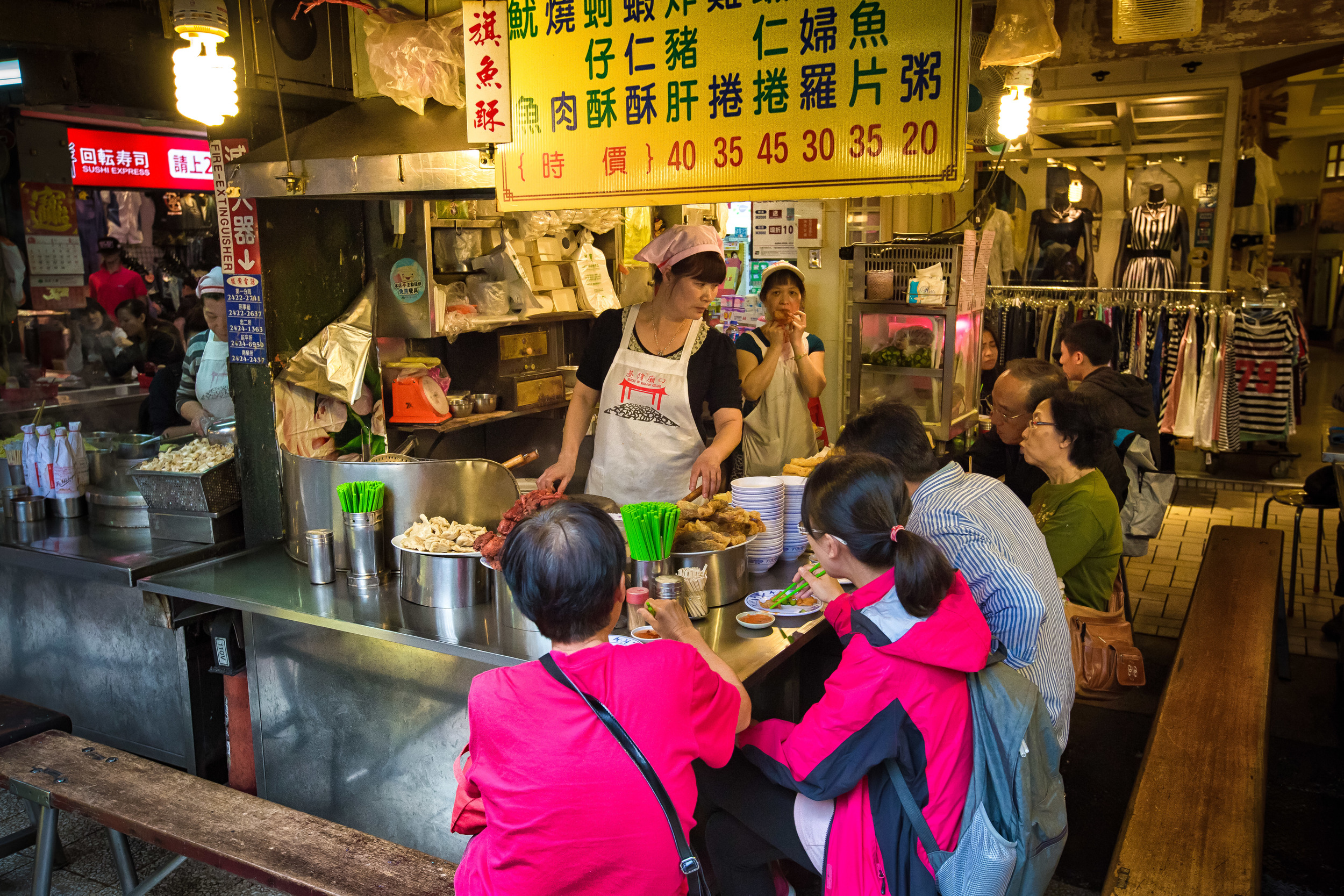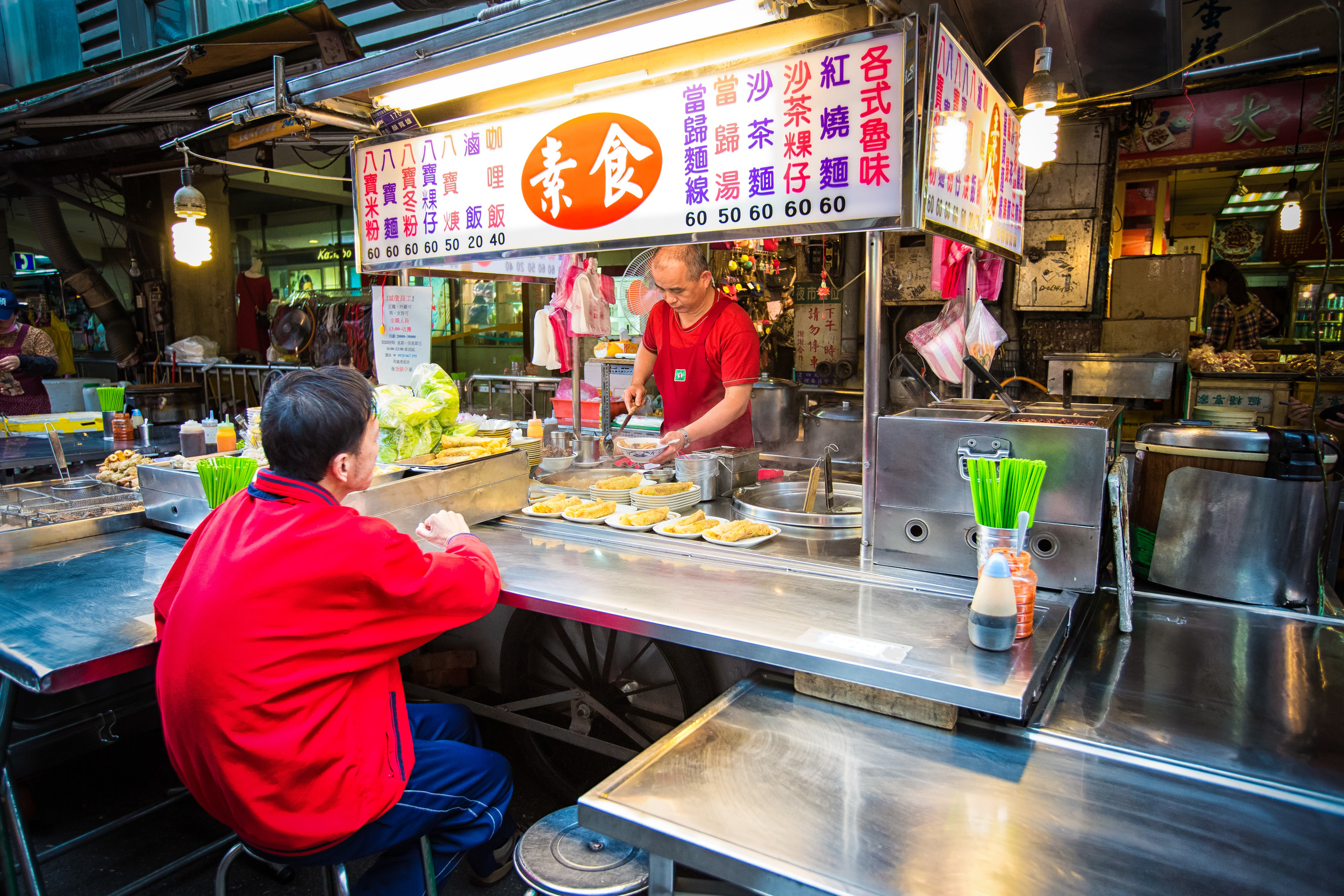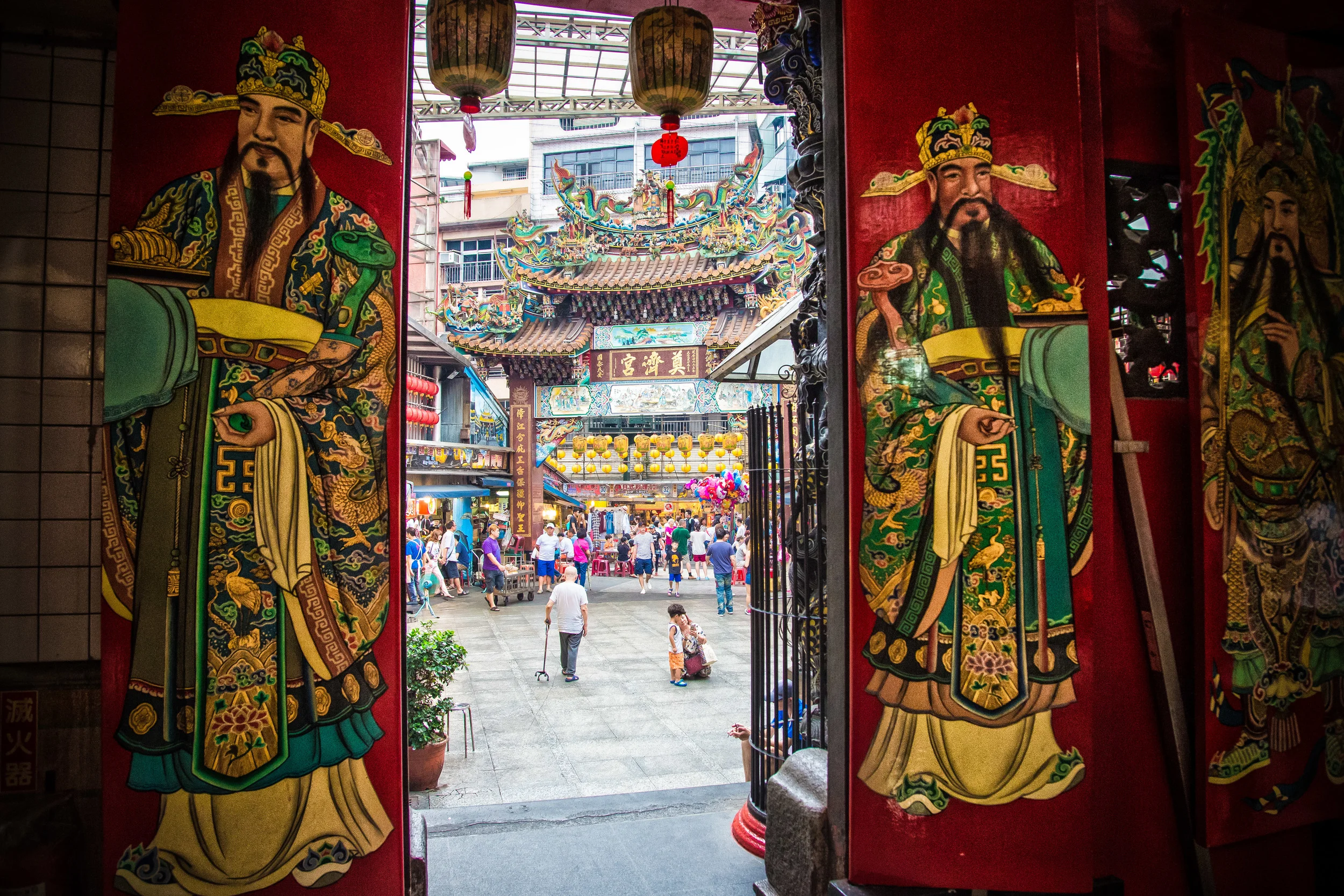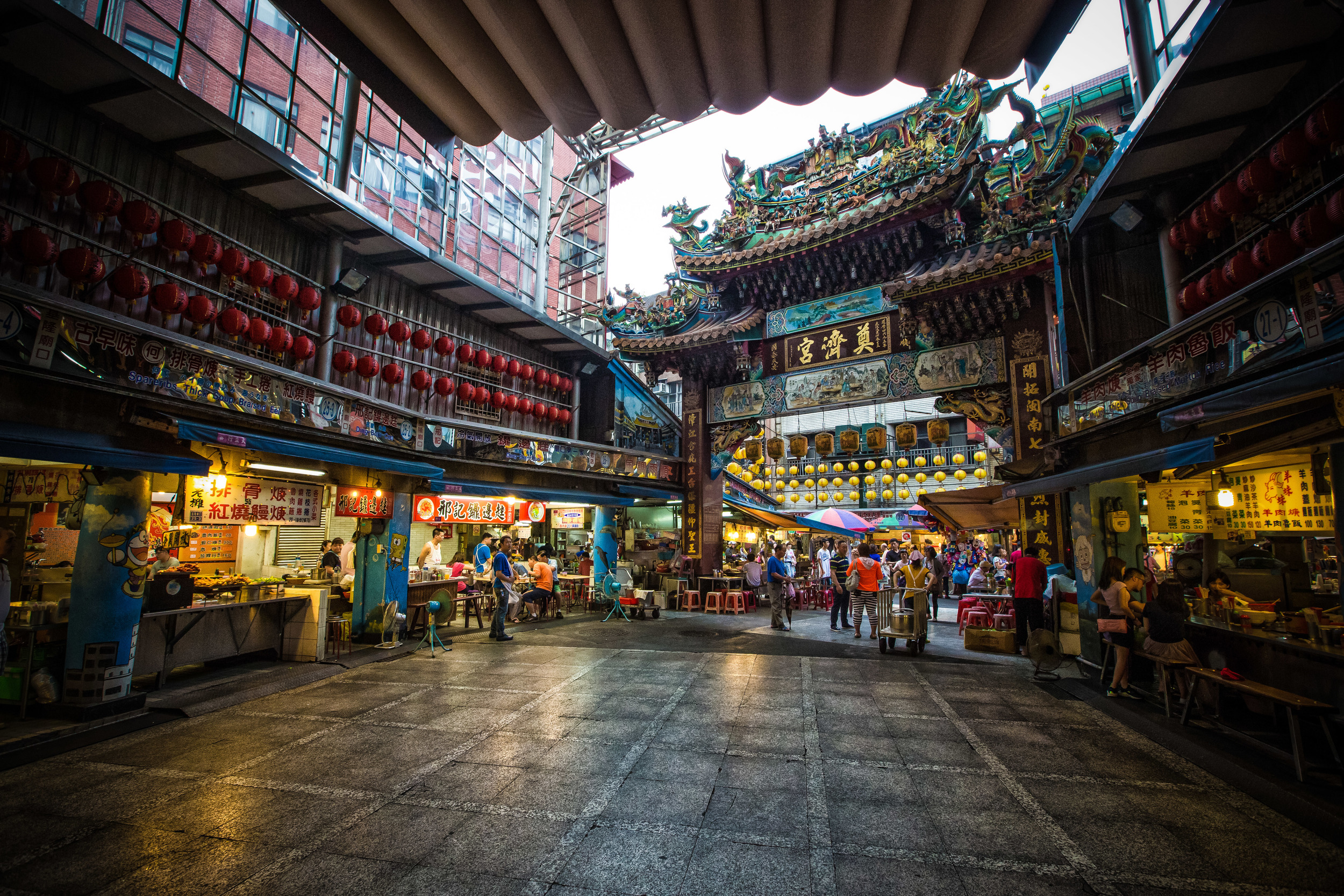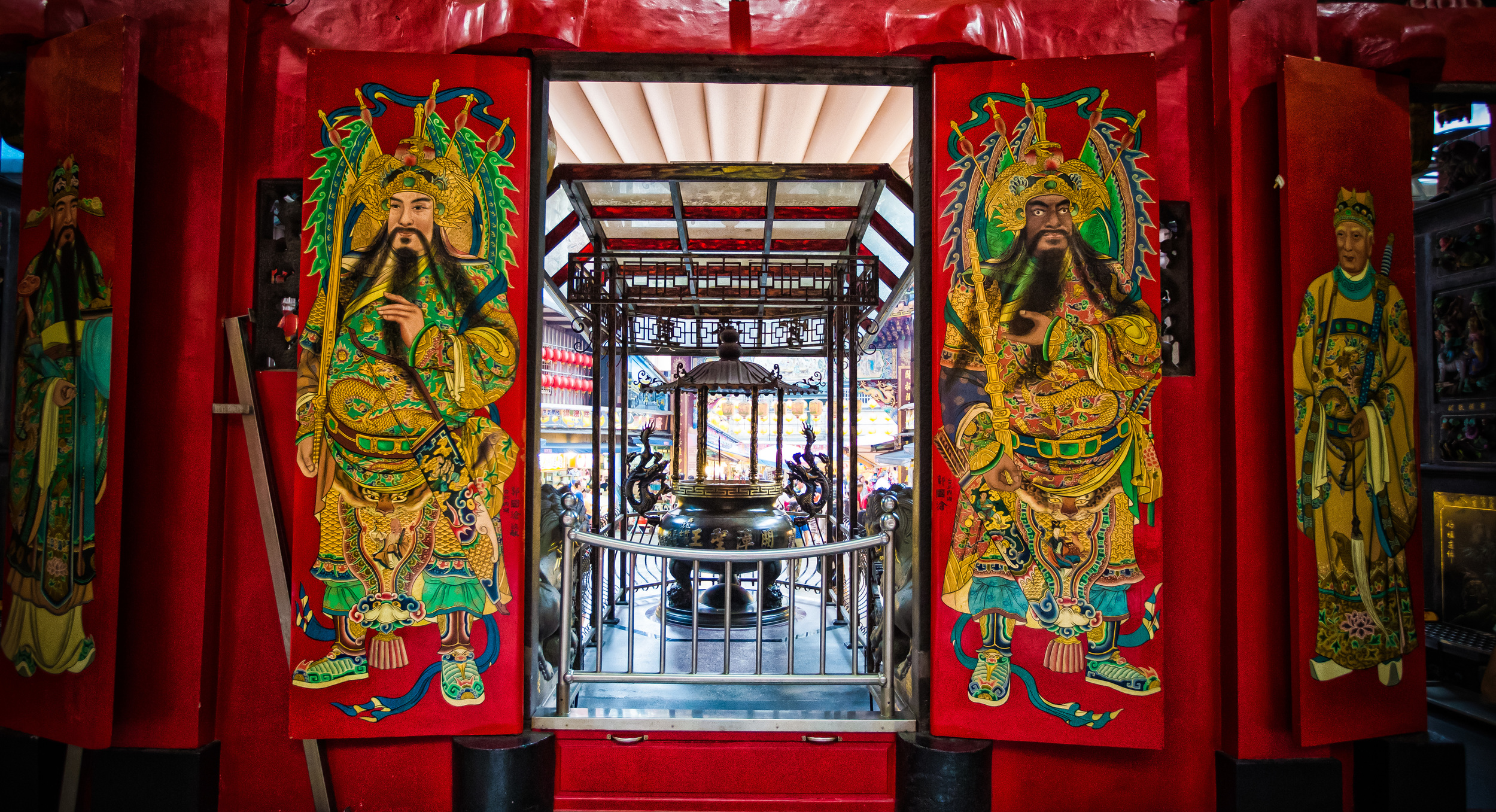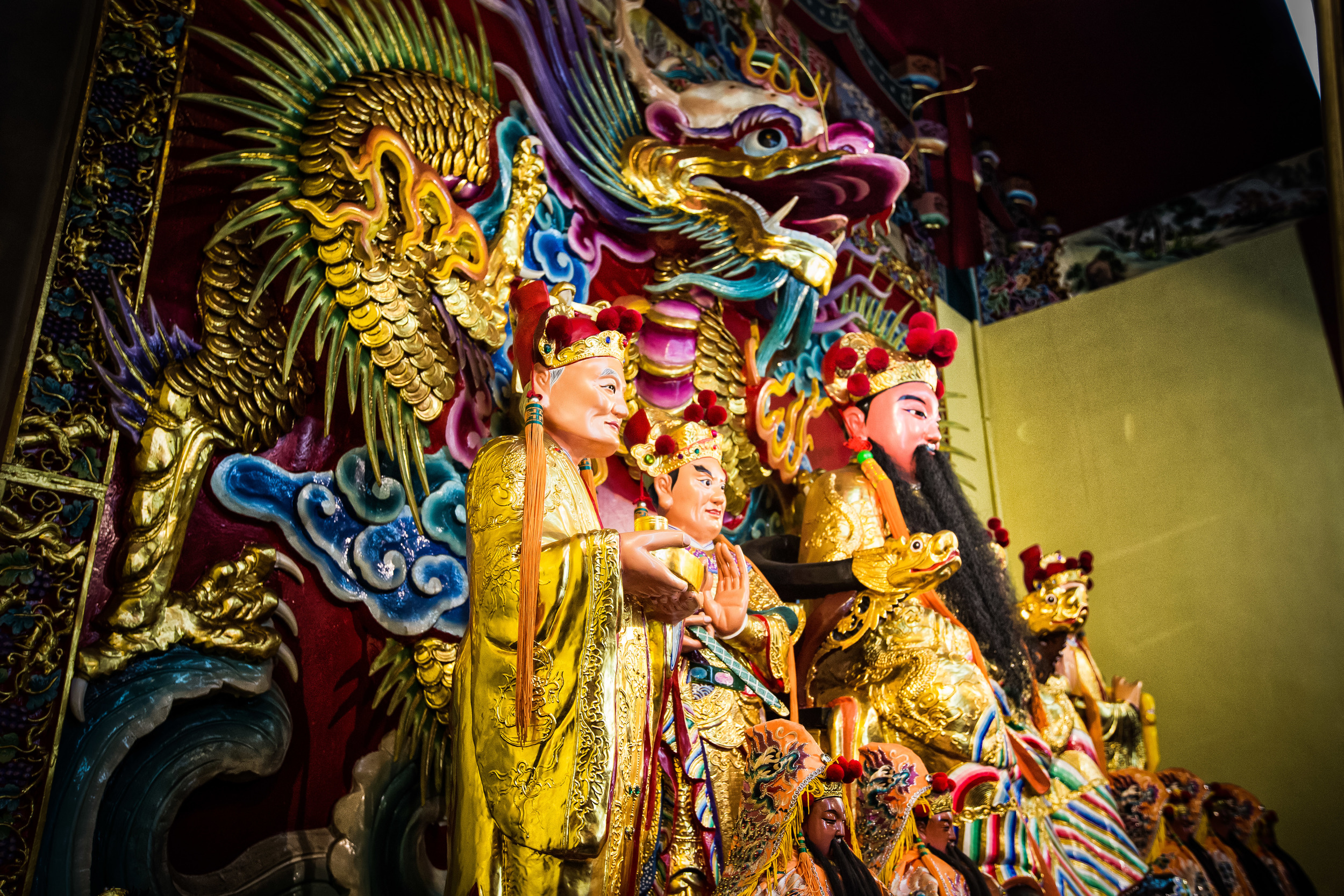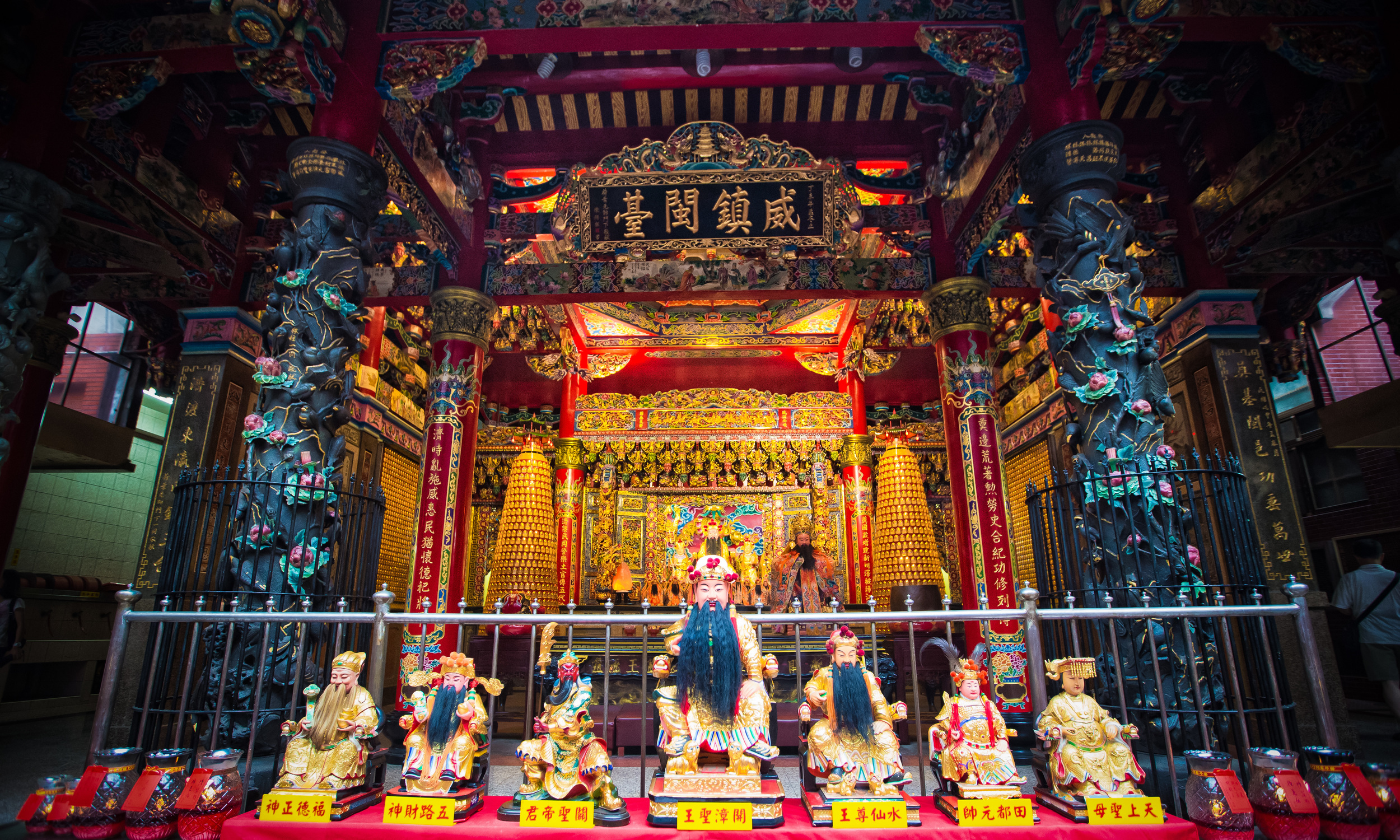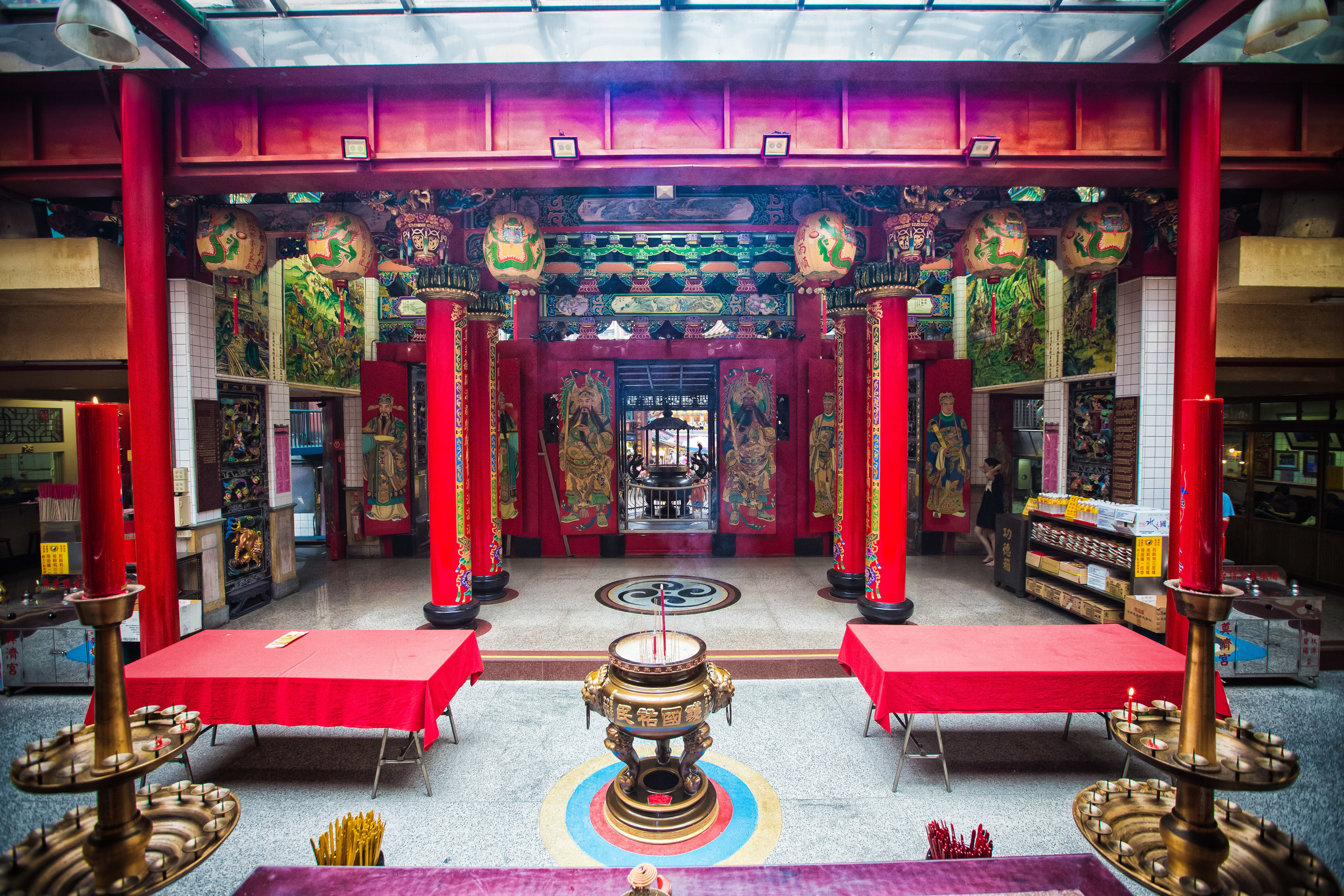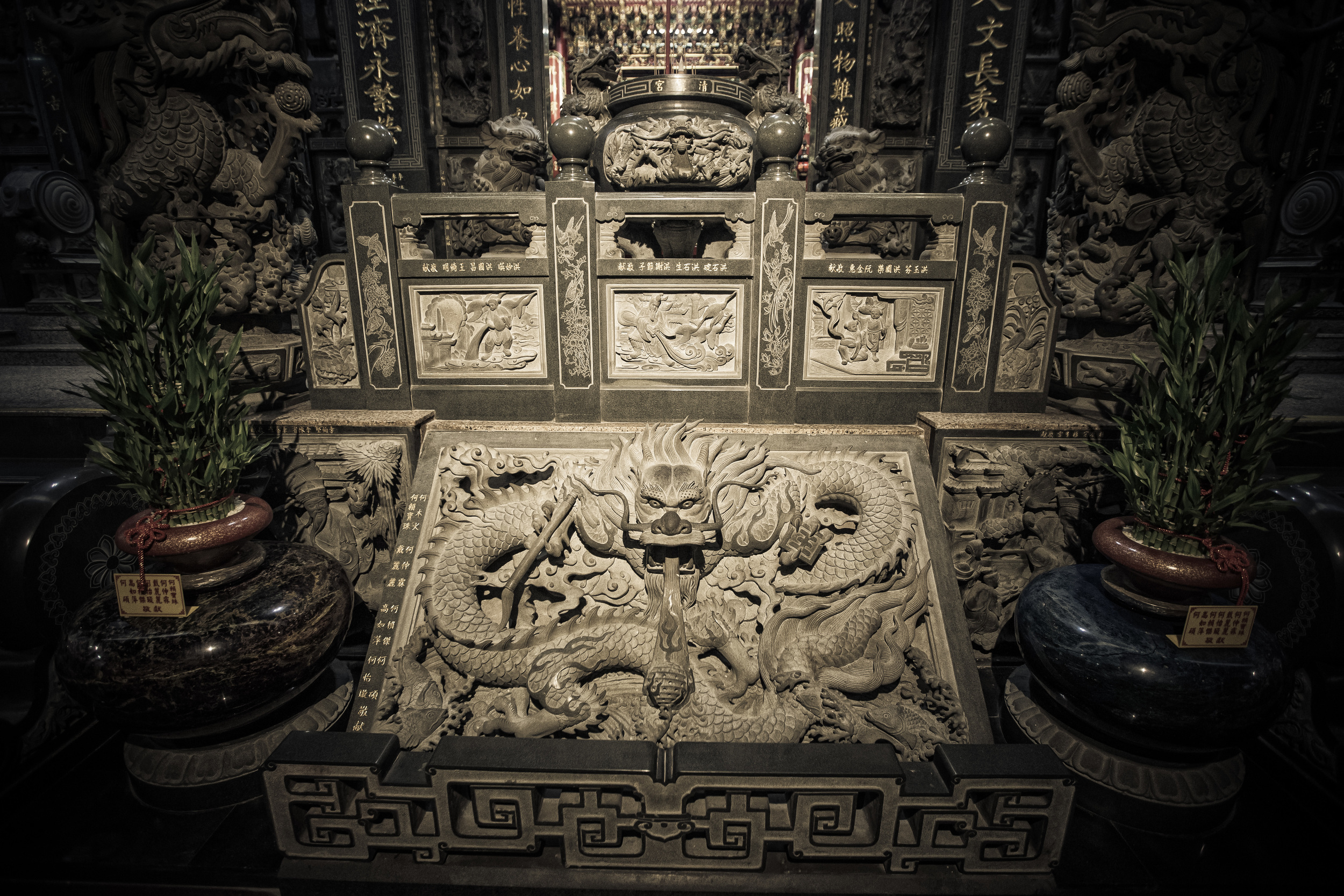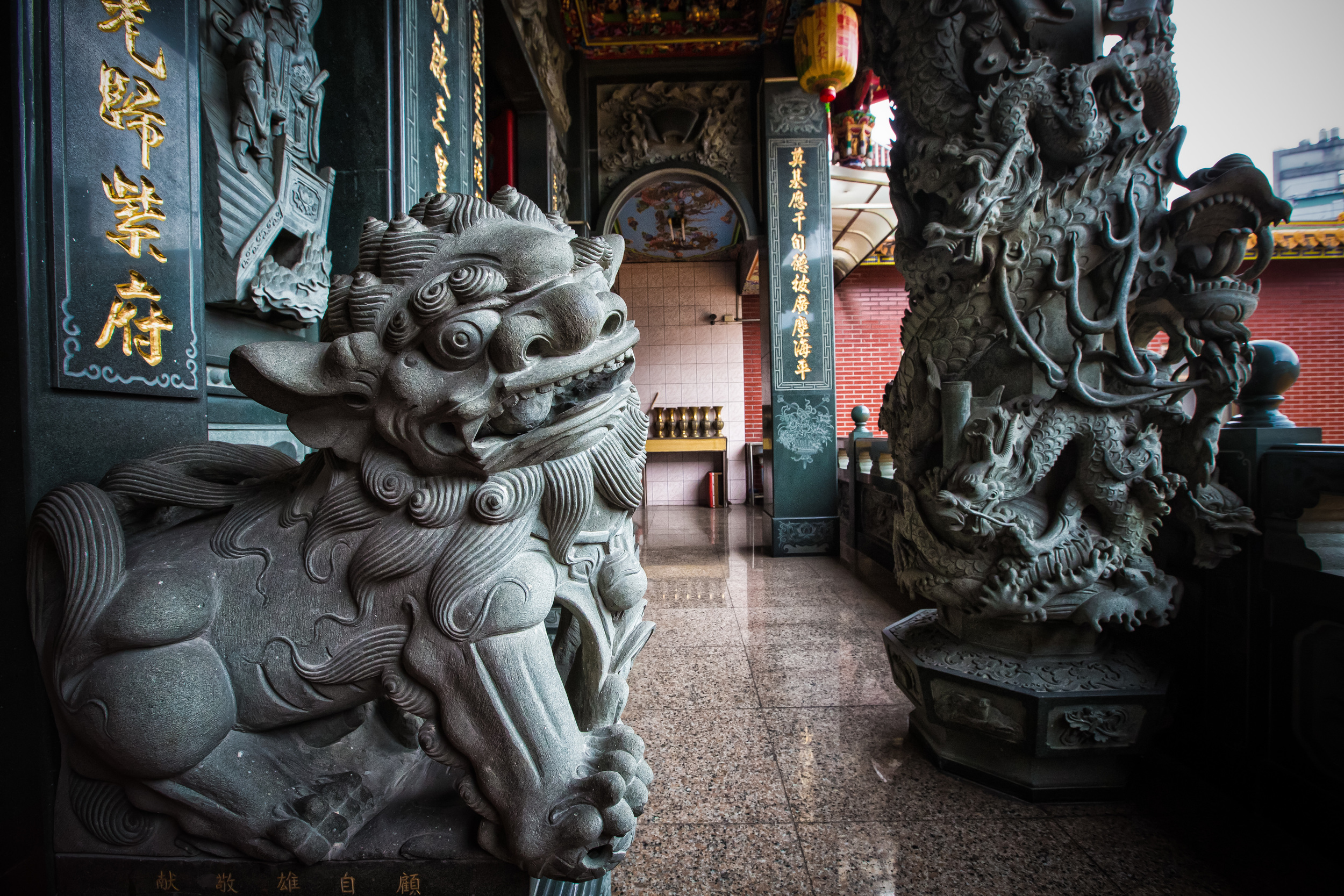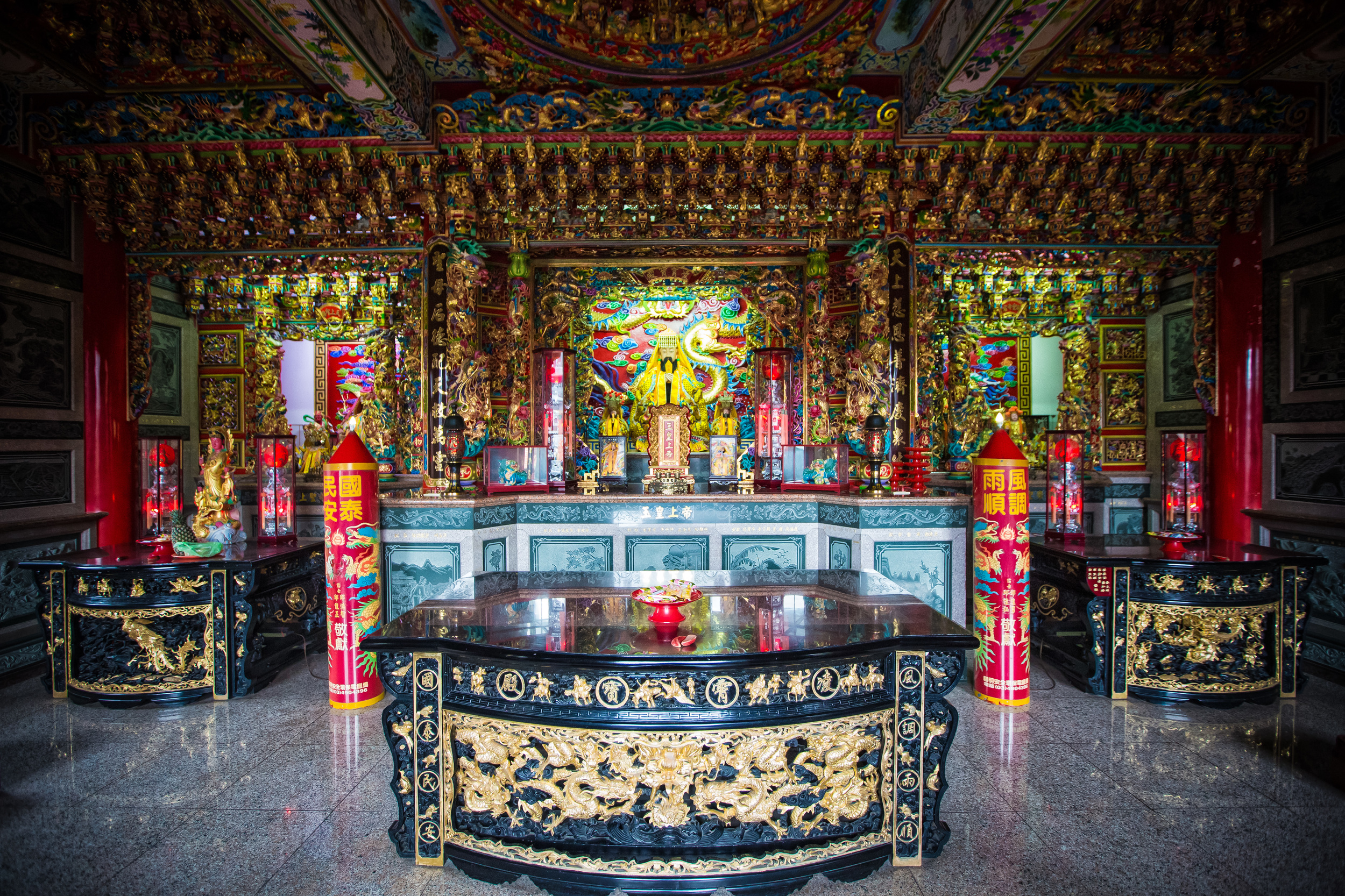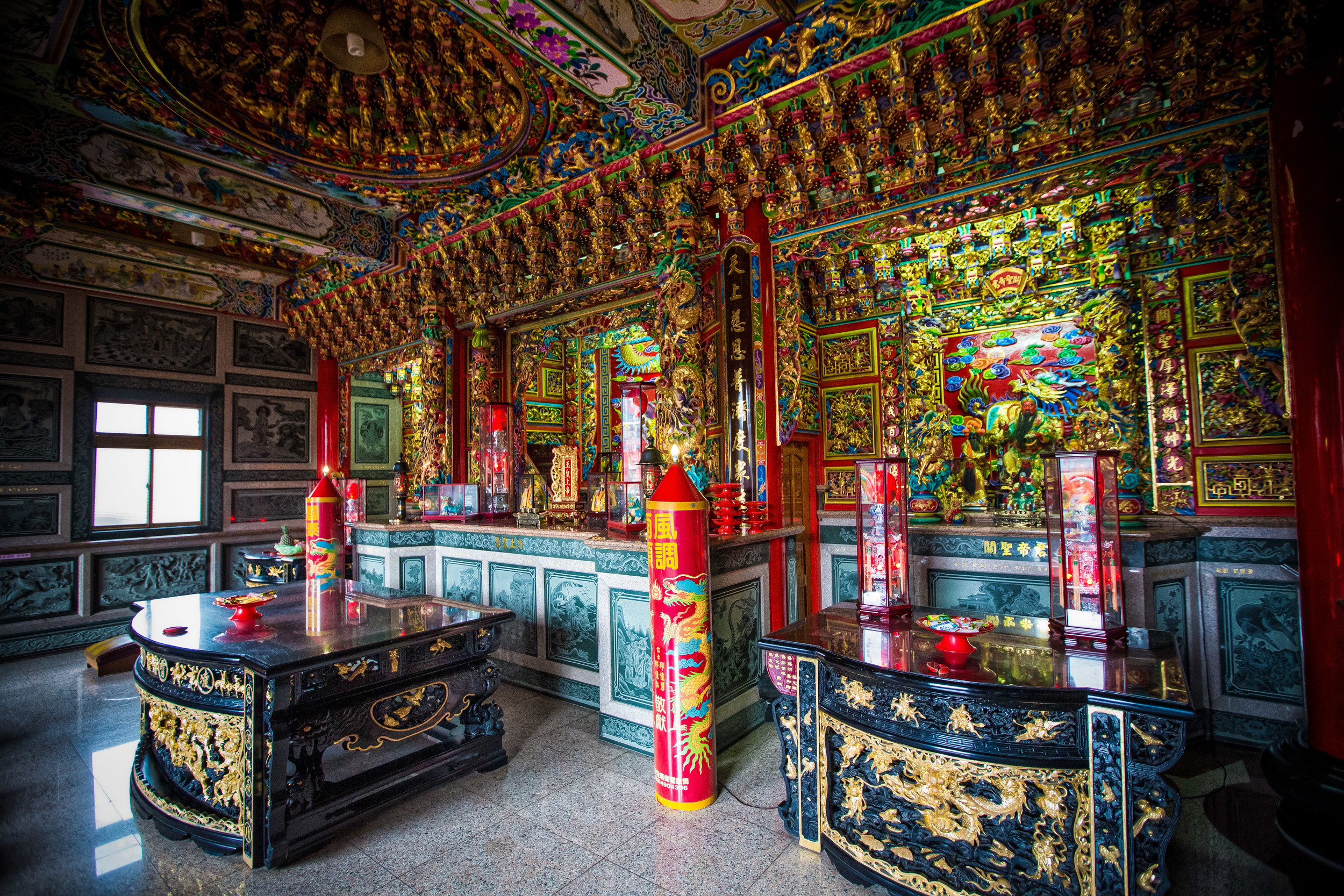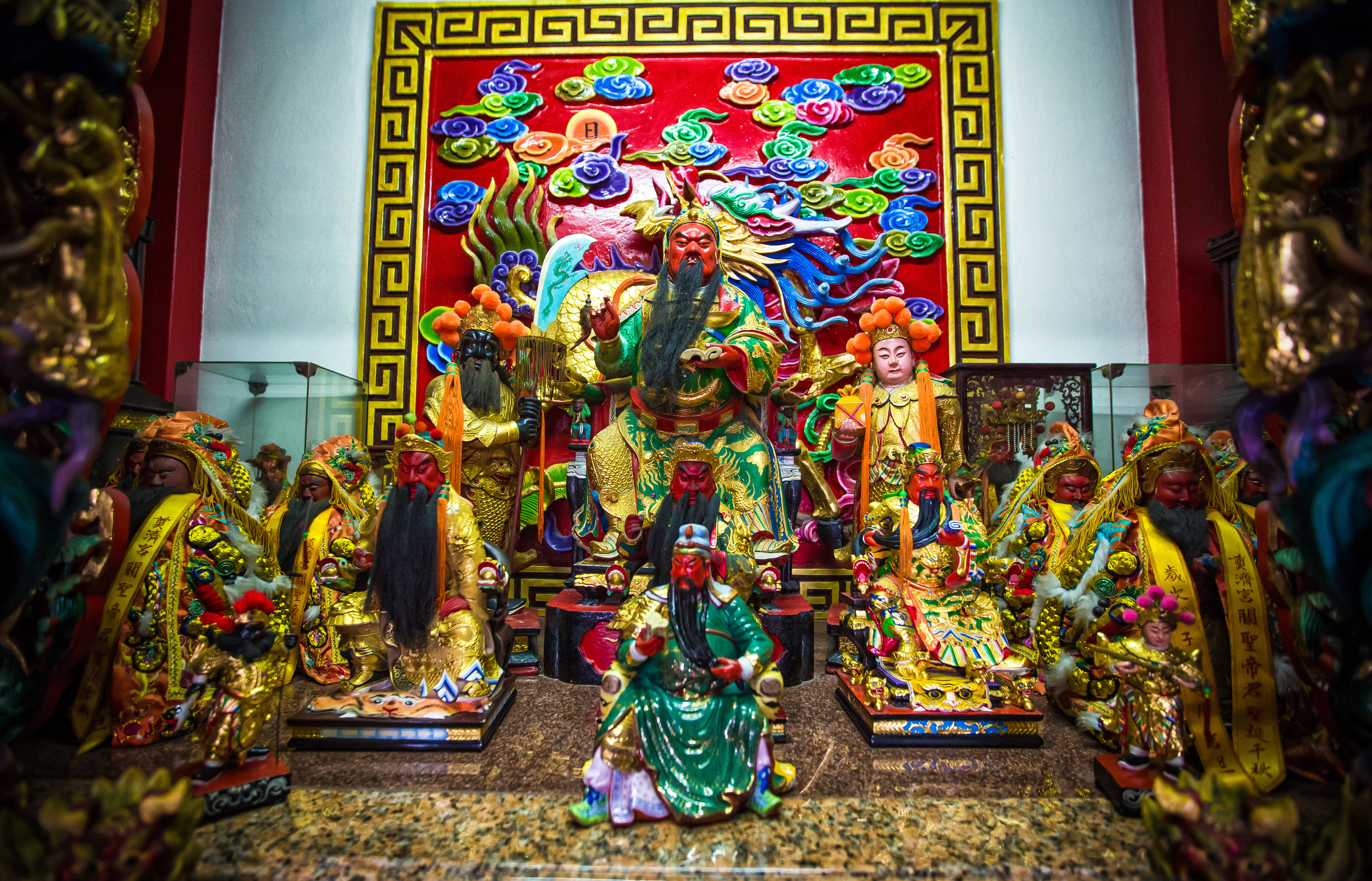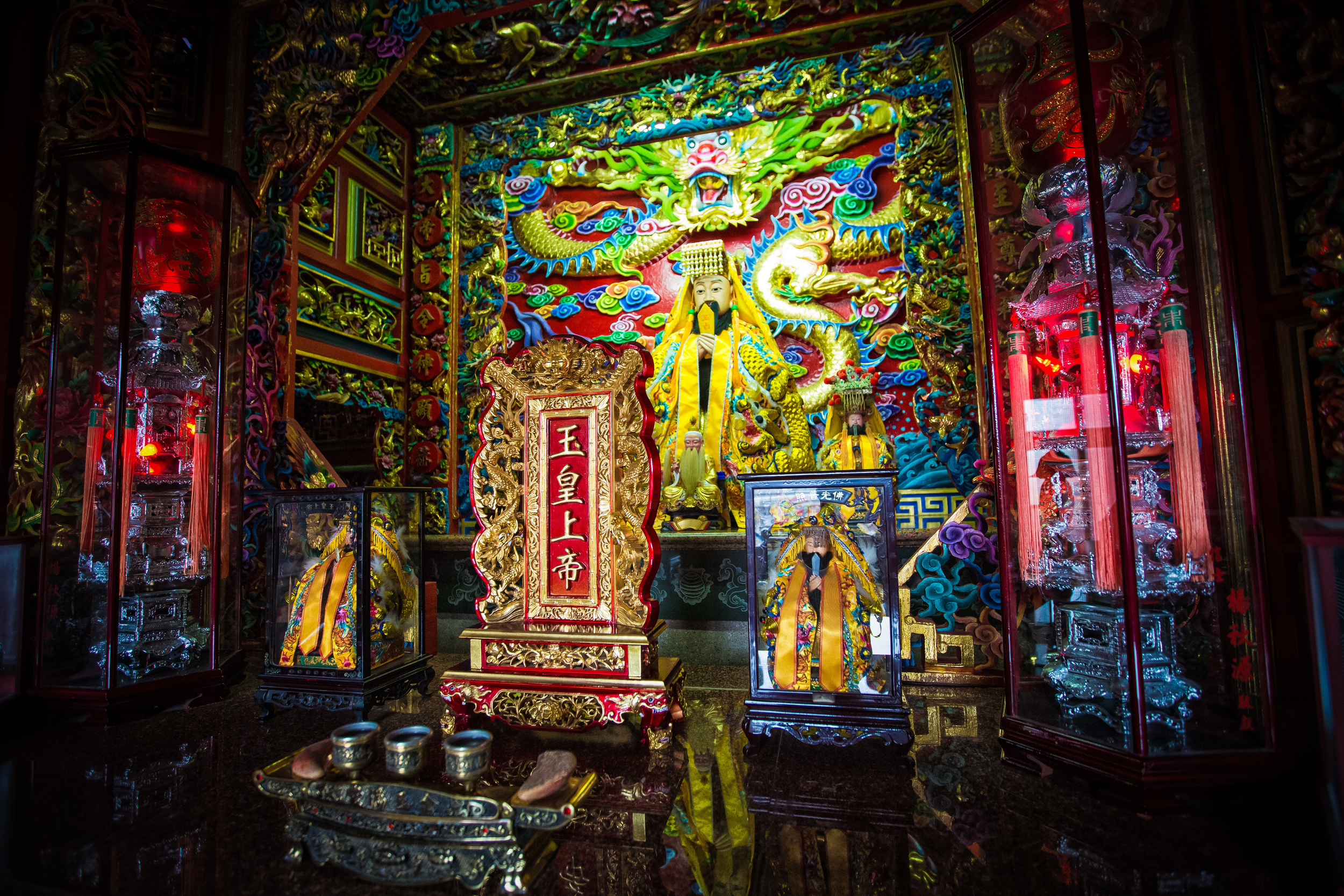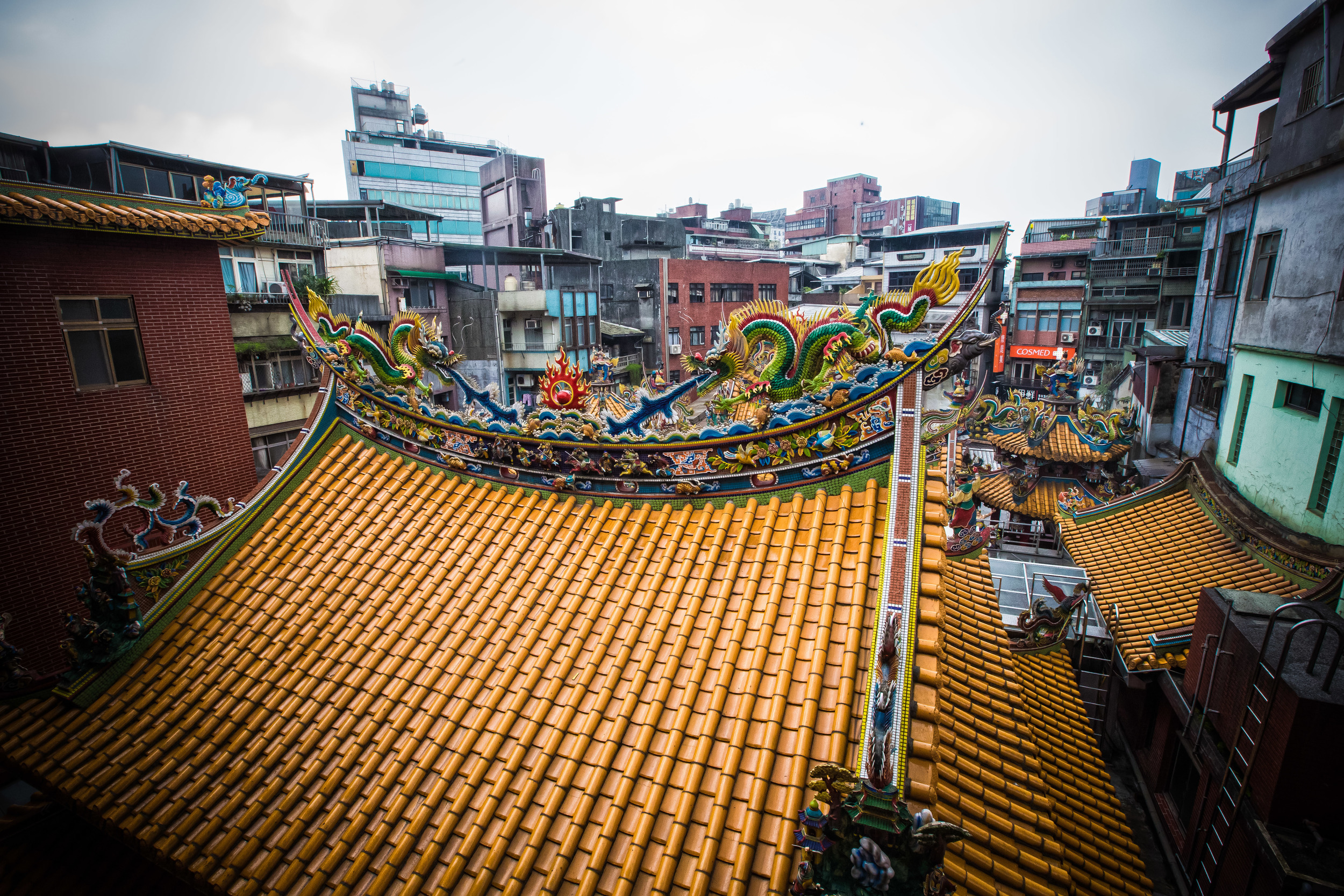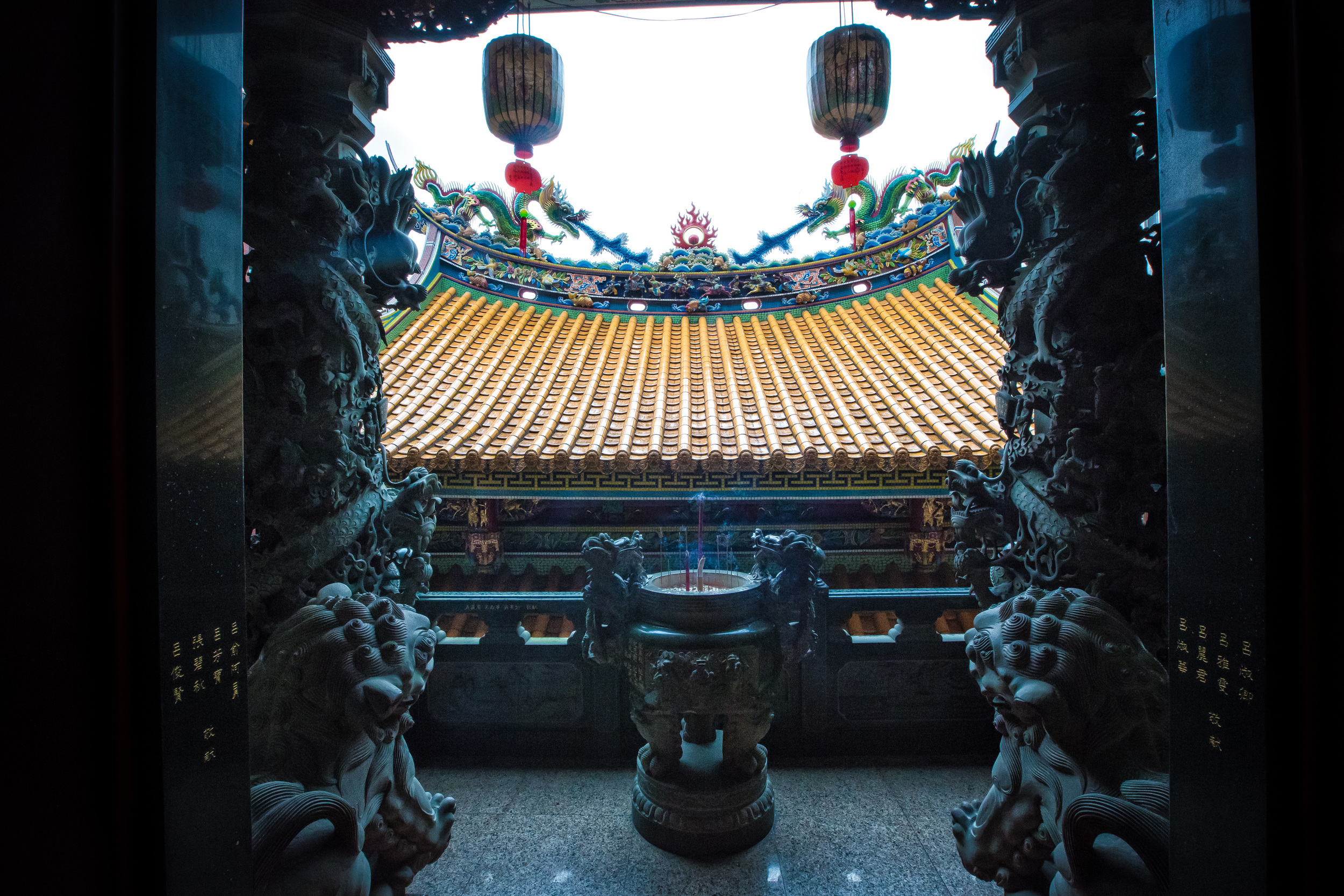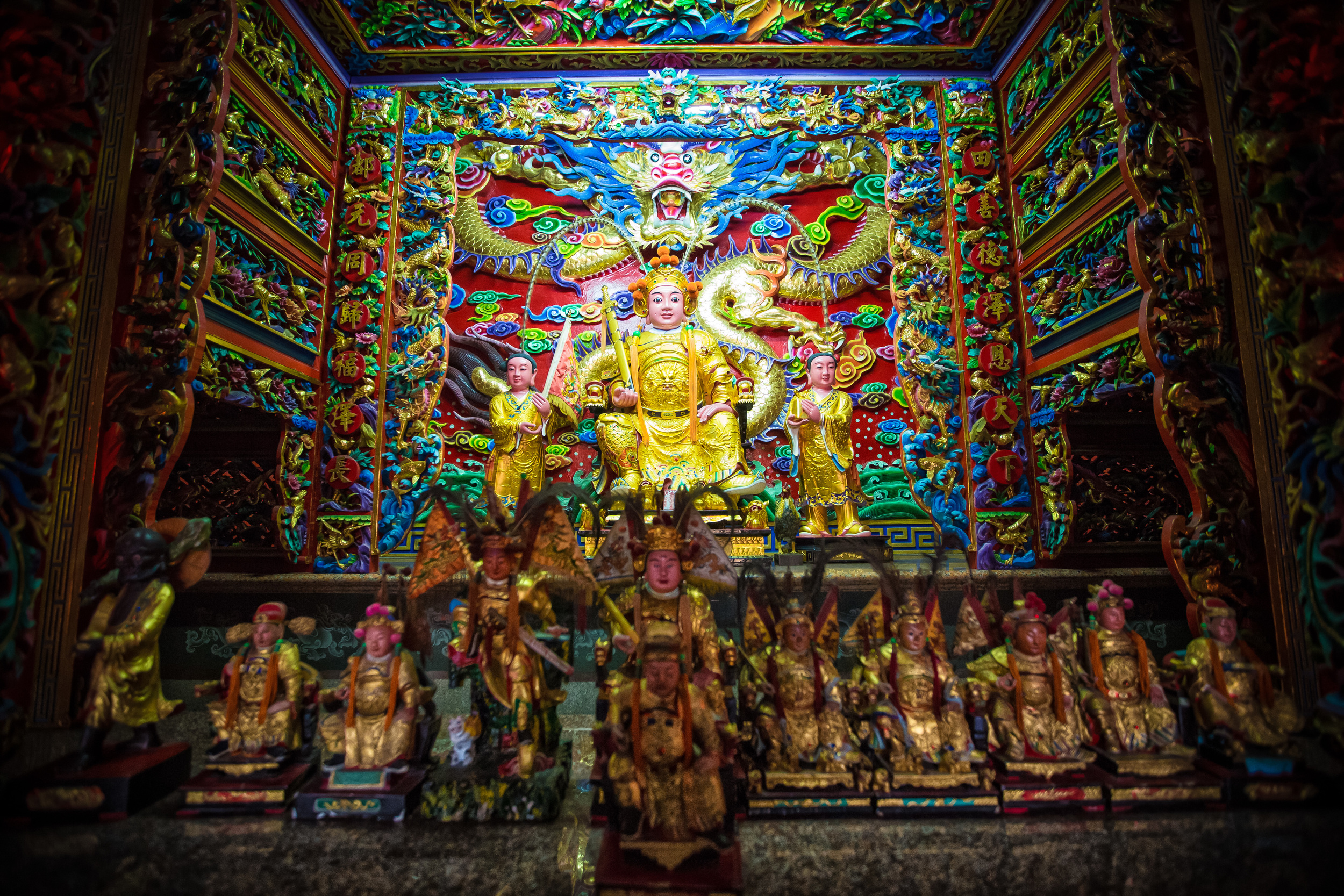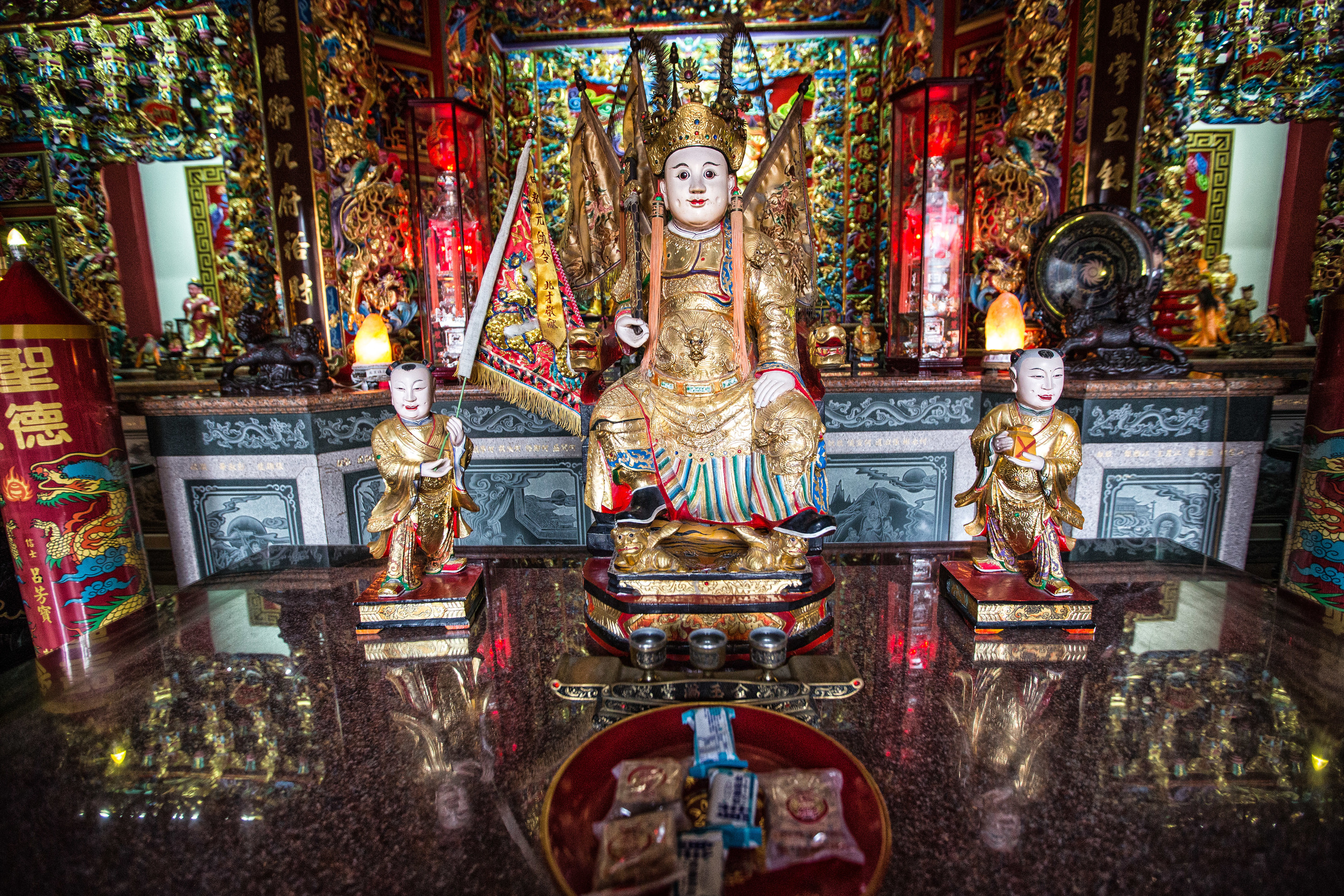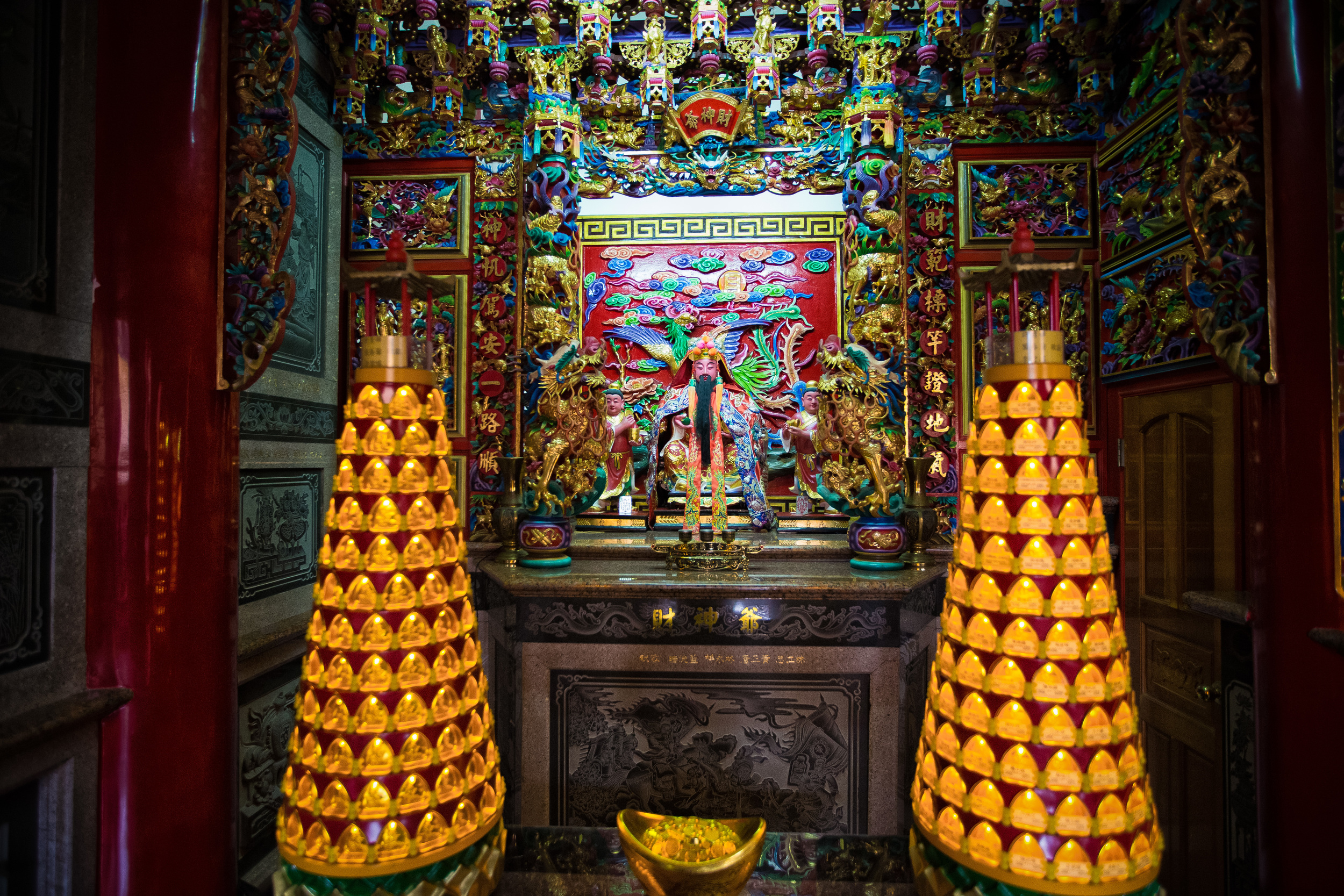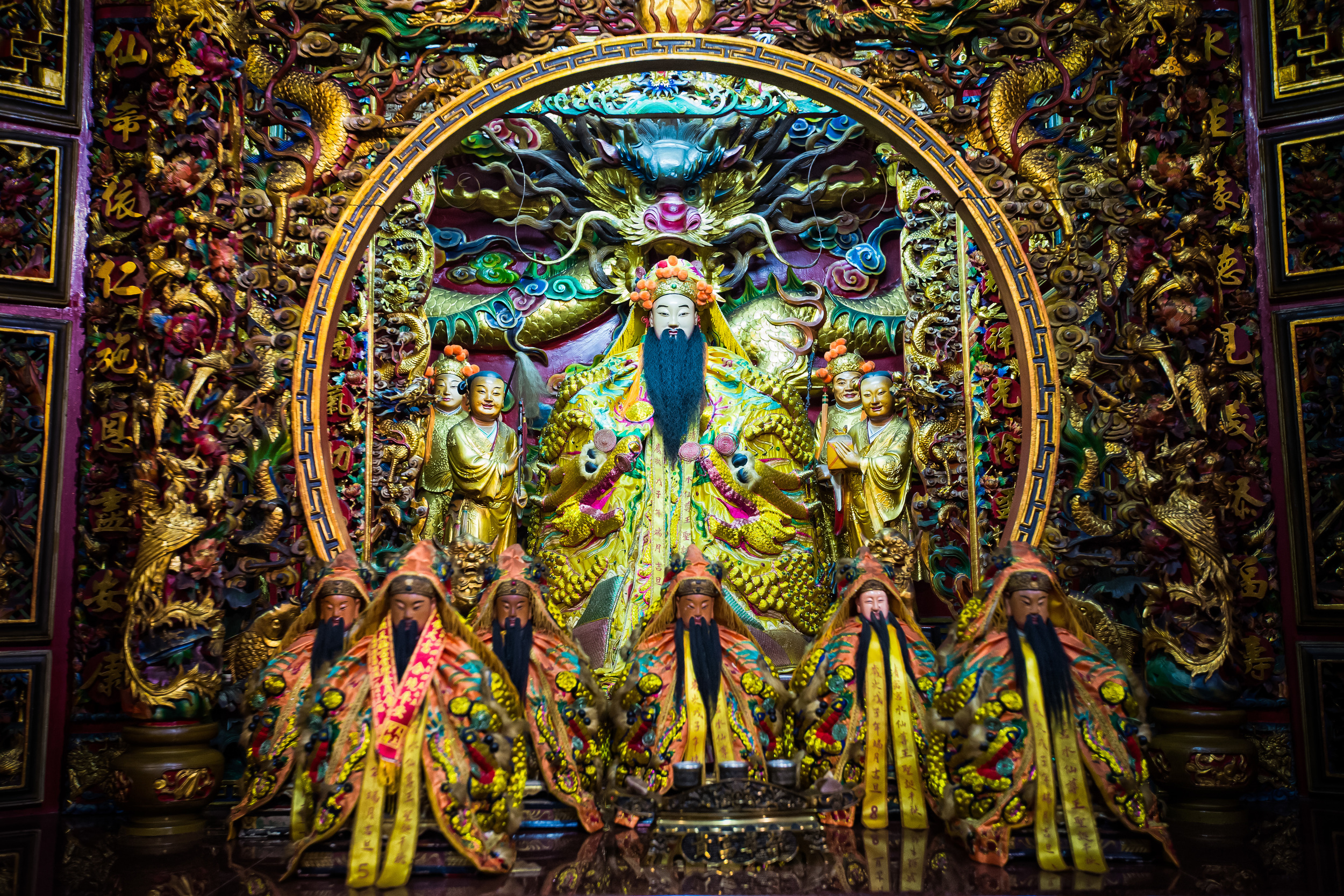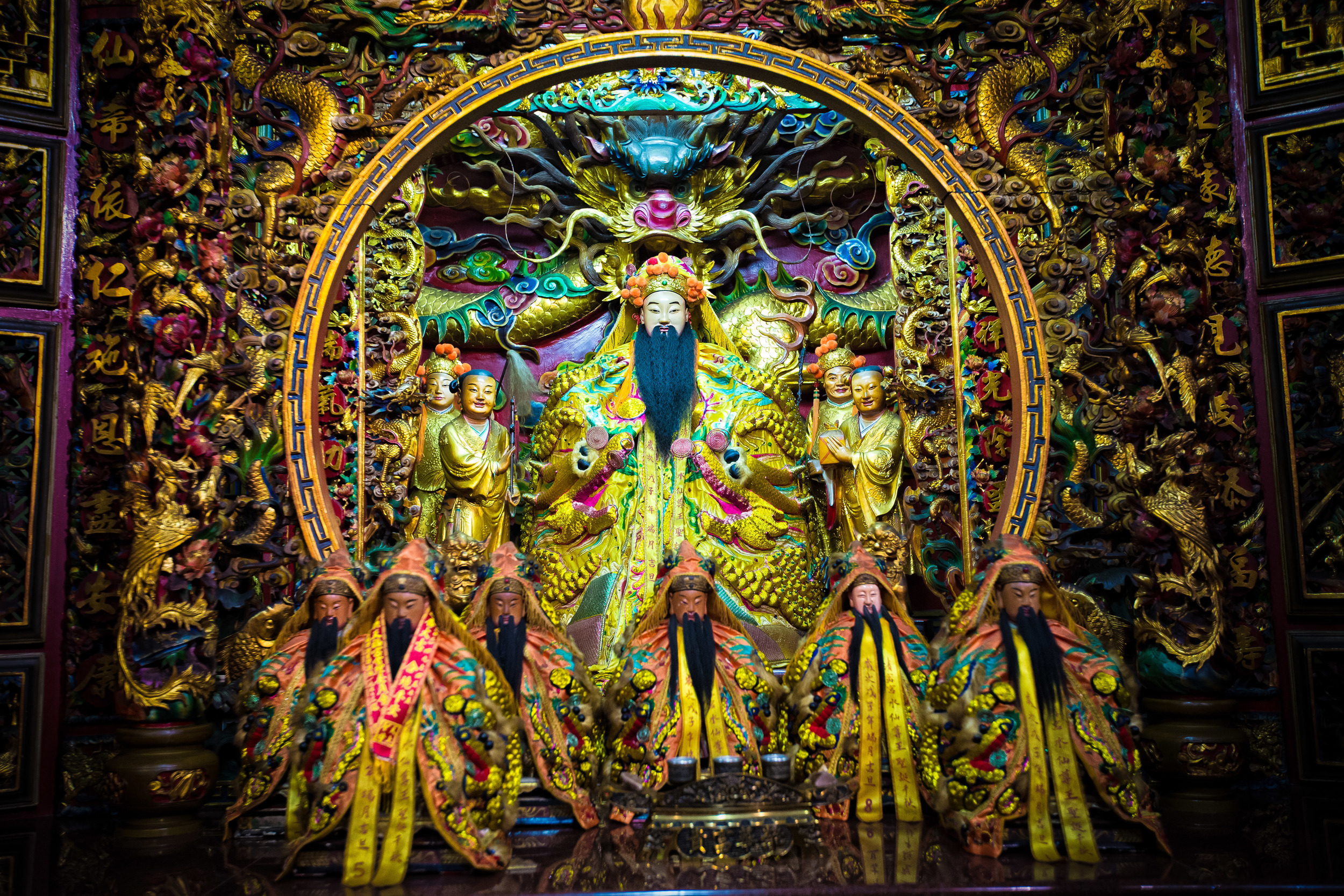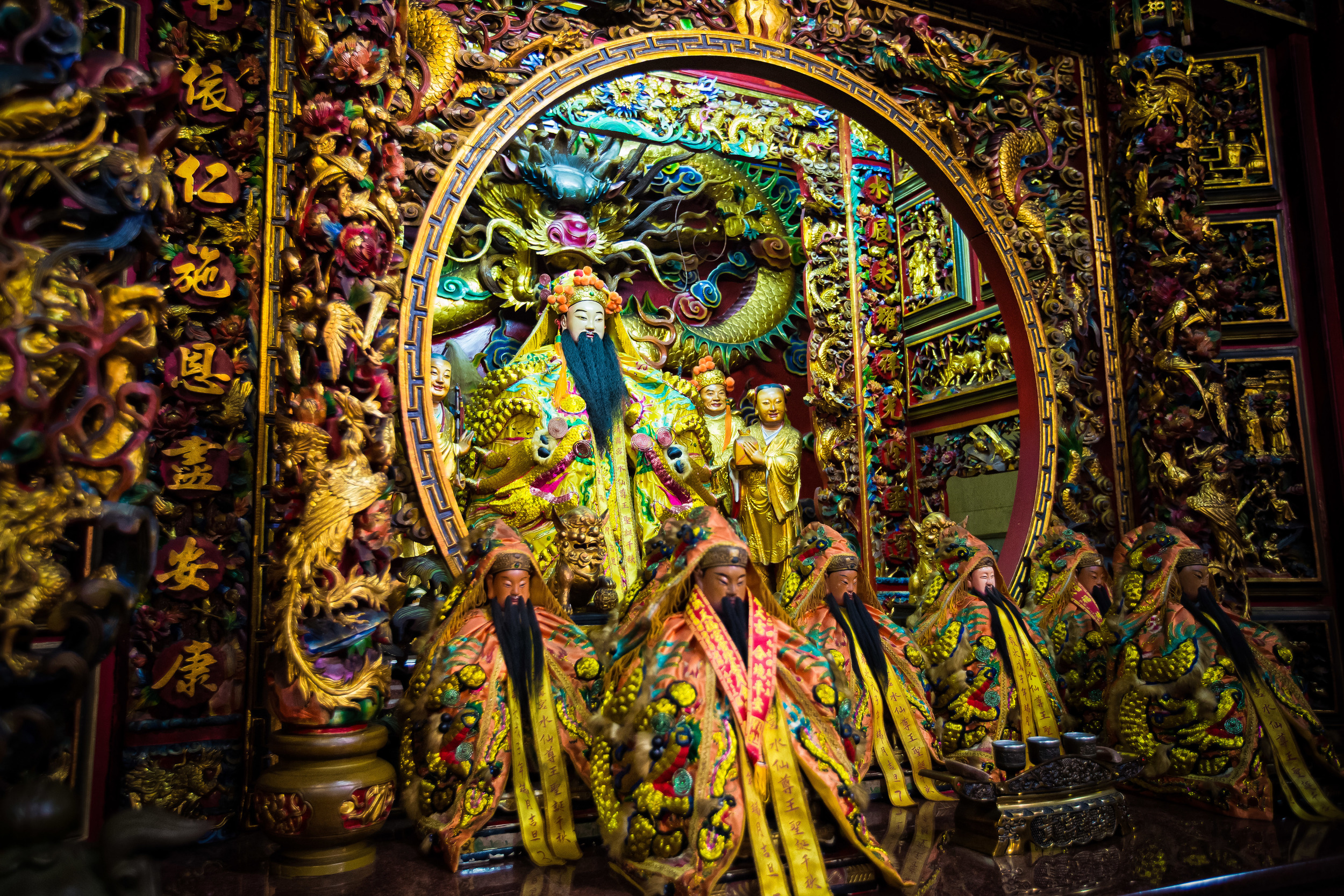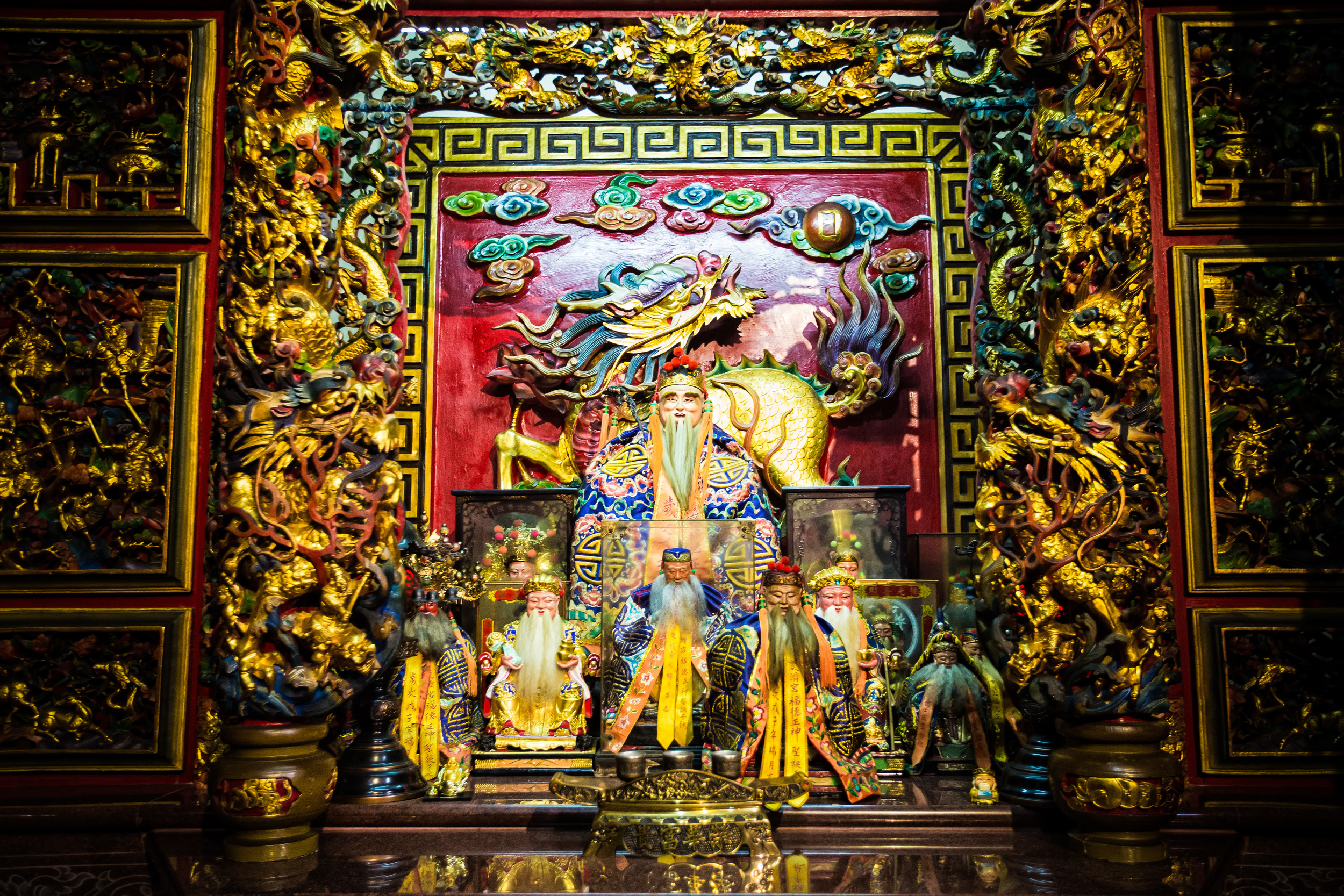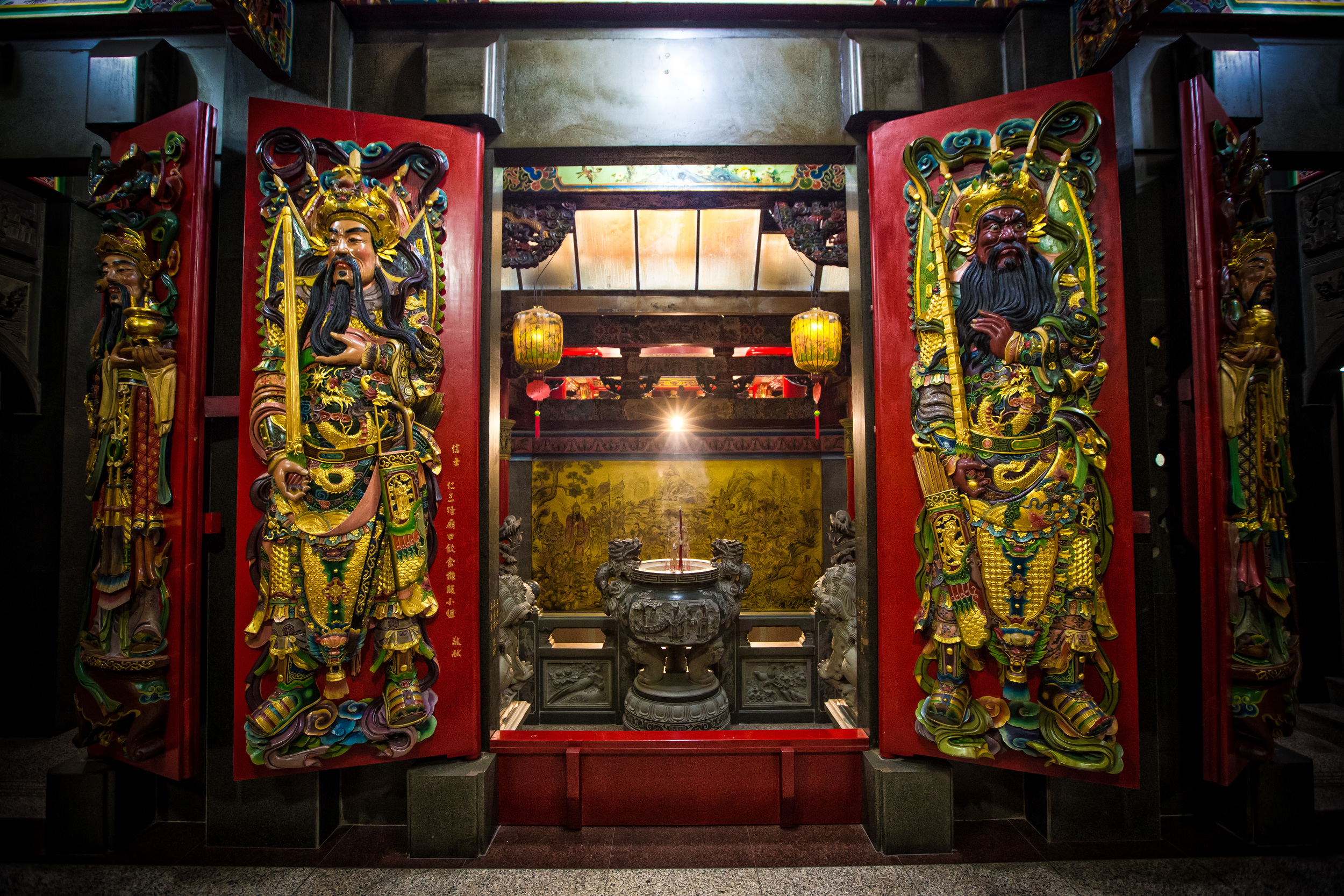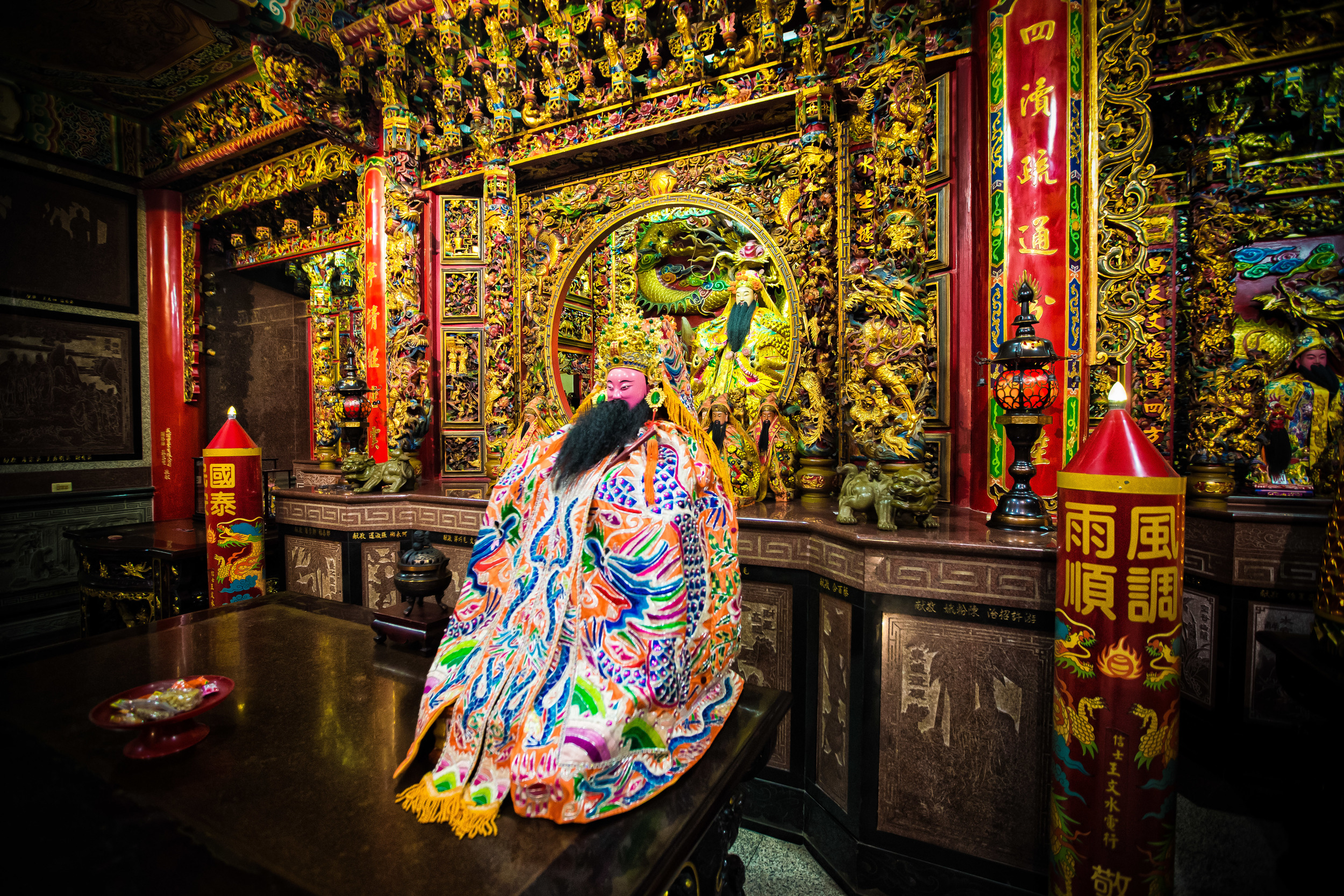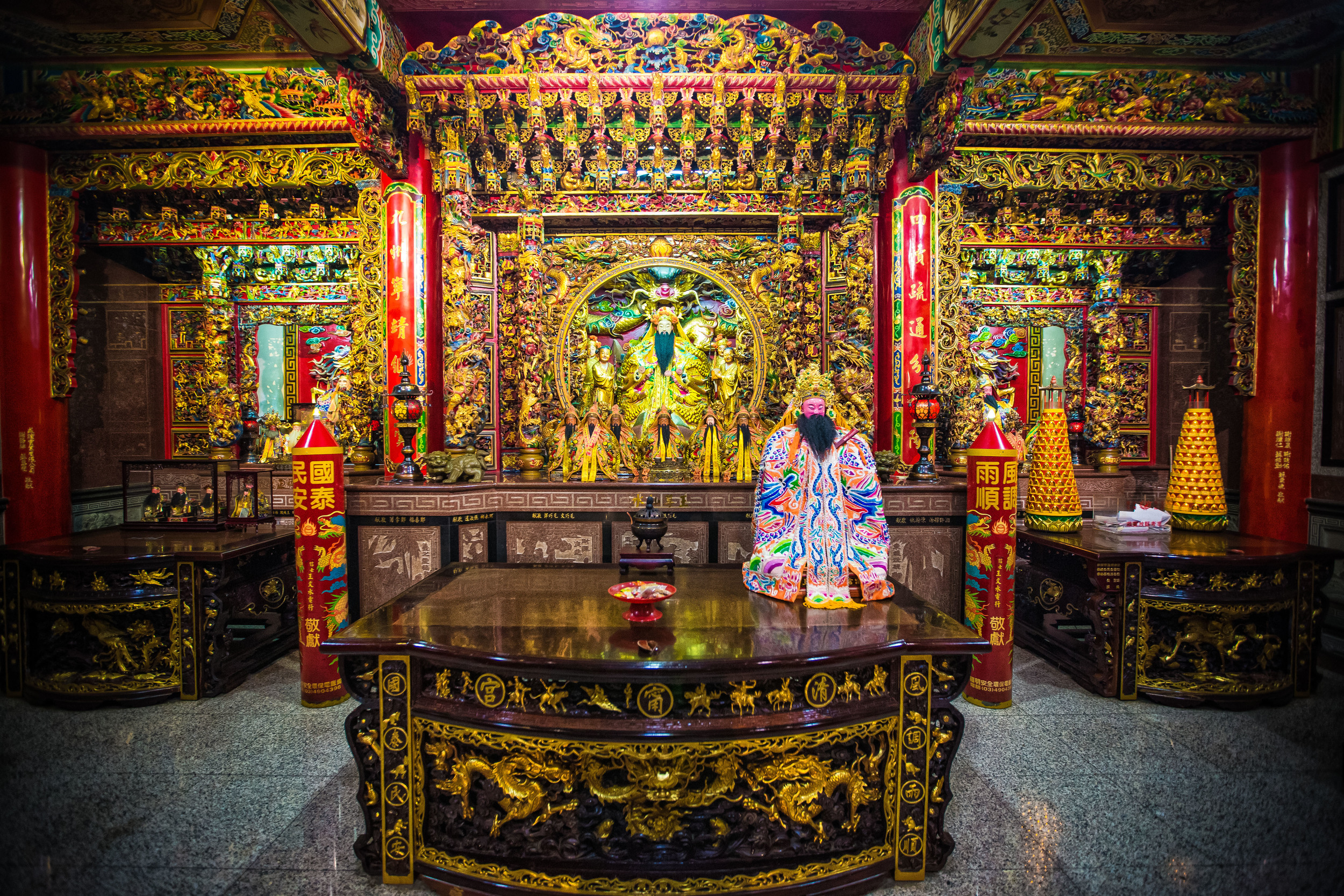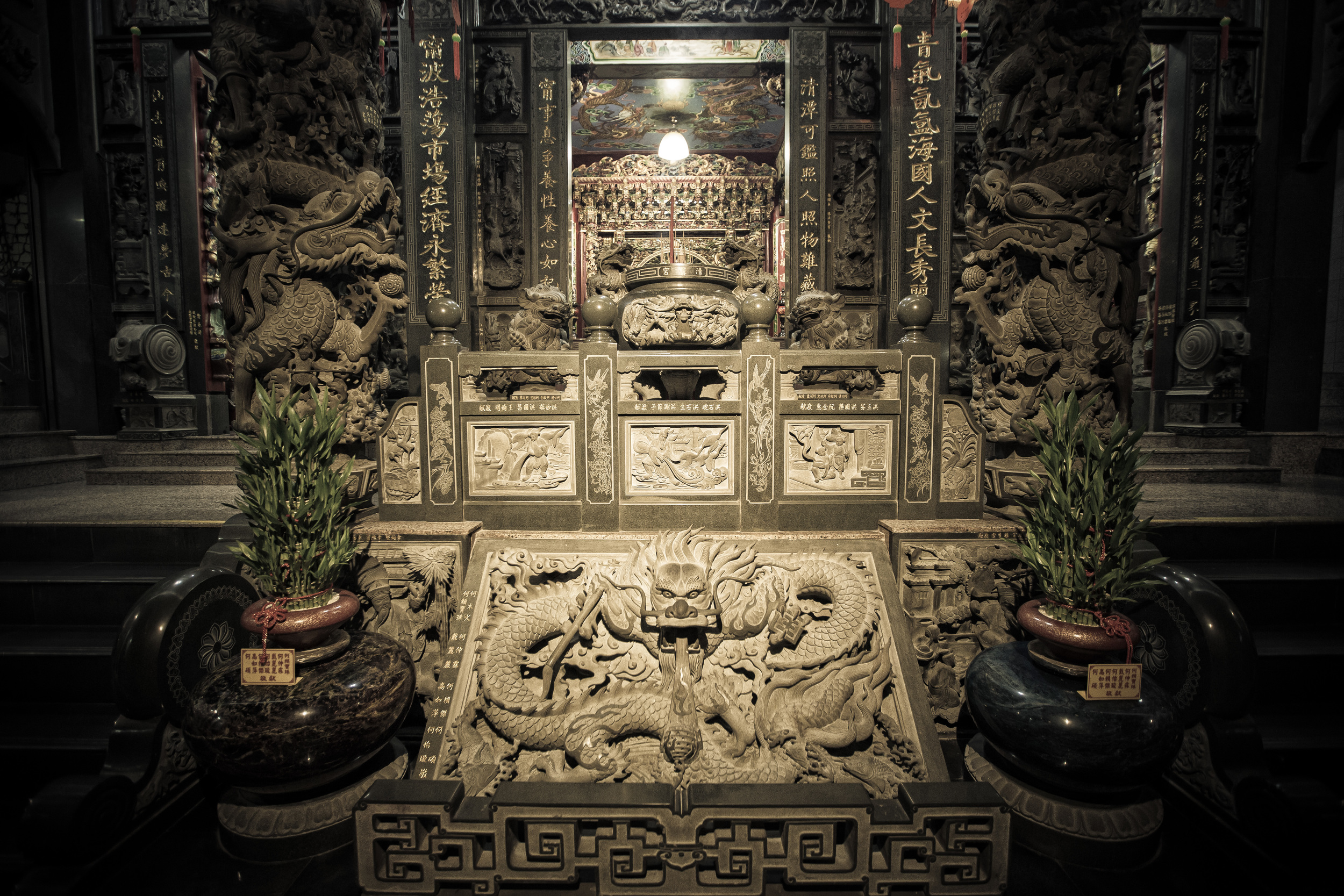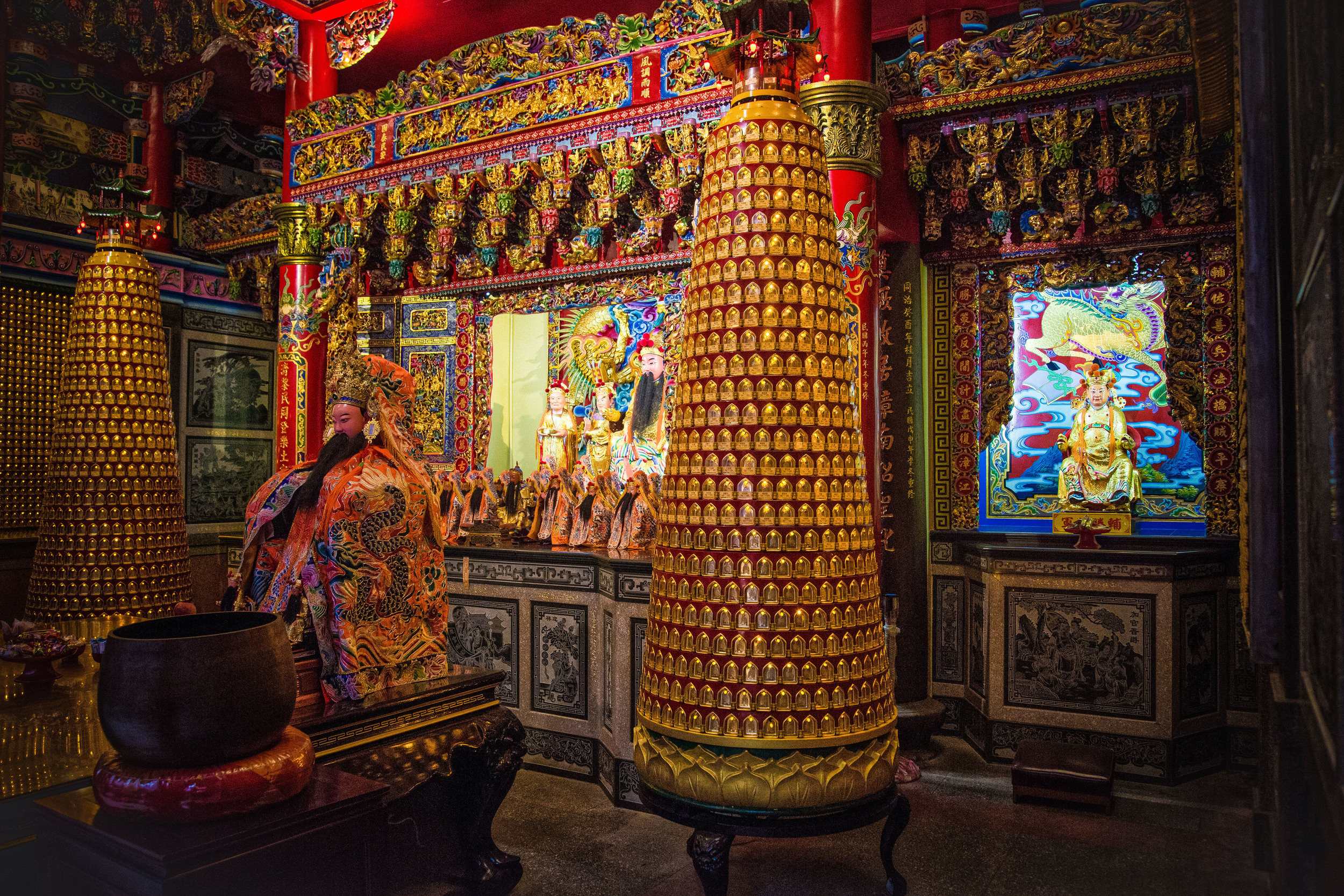The Keelung Miaokou Tourist Night Market (基隆廟口夜市) is often introduced by Travel guides as a MUST visit on any travellers as the night market is well-known for its diversity of Taiwanese delicacies and being so close to the sea - it's fresh selection of seafood dishes. The night market is jam-packed with Taiwanese and foreigners walking shoulder-to-shoulder every night of the week and it truly is a purely Taiwanese experience that shouldn't be missed while visiting the country. In my first post of shots from the night market I focused on seafood dishes which the night market is the most famous for, the second post was all about the meat while this post has various desserts, juice and an uncommon sight in a night market - a vegetarian stall!
Miaokou Part 1 | Miaokou Part 2.
1. Iced Desserts (QQ涼圓)
I love this shot, it was one of the first shots I took at the night market while visiting. I arrived at the night market a bit early because I planned on eating before the crowds arrived and getting the lay of the land to better understand what the night market was about. This vendor sat at the entrance of the night market with her cart full of icy Taiwanese desserts and she looked like she wasn't having the best day. One of my favourite shots from the Raohe nightmarket was also of a vendor selling these delicious little treats (although the setting is completely different) basically, these are little gelatinous balls that are served in a bag of shedded ice with a scoop of brown sugar sauce on top and the vendor will give you a toothpick to pick them out. They are a cheap dessert and are traditional Taiwanese snacks, so of course I recommend you try them!
2. Candied strawberries/tomatoes (糖葫蘆)
Taiwanese people don't really have a “sweet tooth” like North Americans do - Whenever my mom sends candy from home and I share it with my friends, they always complain about how sweet it I and I usually just roll my eyes as I think they're crazy. The tables always turn on me when it comes to these candied fruit kebabs though. They are just like candied apples back home, but you get strawberries or cherry tomatoes on a stick and they are soaked in the candy and the end result is almost disgustingly sweet - Way too much for my tastebuds at least. Even worse is when when you get the cherry tomato version and it is both too sweet and too sour at the same time. Despite my overactive tastebuds not appreciating these kebabs, Taiwanese kids love them and they're almost the perfect snack for children visiting the night market.
3. Fresh Orange Juice (新鮮果汁)
This vendor actually pissed me off a bit, she was advertising 100% orange juice, which initially had me excited as fresh orange juice is one of my favourite drinks. I stopped and bought a 100NT bottle and was planning on drinking it on the train back home. When I got on the train I opened up my juice and tasted a watered down orange juice with way too much sugar. Clearly this vendor was set up to sell to tourists and even though I've been here over ten years, I still fell for a tourist trap. I've had fresh 100% orange juice like this in other night markets so I was a bit surprised that someone would sell drinks like this at a night market, but Miaokou is a very touristy night market and it is often frequented by Chinese tourists, so I guess the vendor took the opportunity to make a quick buck.
4. Sweet Potato Pancakes (地瓜餅)
Pancakes aren't a really a big thing in Taiwan as people here much prefer waffles covered in everything from ice cream and fruit to tuna and corn. It's not that common to find pancakes in a night market, but then again these aren't really the pancakes that you're thinking about. These pancakes are made from a sweet potato based paste and pan fried. They are sweet, but also a bit bland in flavour. I'm not particularly a big fan of sweet potatoes so I'm probably not the best judge as to whether these actually taste good or not, but for my palate they seem to be missing something. If it were up to me, I'd just add maple syrup, but that's just because I'm Canadian and that's how we roll.
5. Vegetarian Food (素食)
Vegetarian food in the night market? Well, I suppose they have to cater to everybody! Taiwan's night markets aren't really the most friendly places for our hipster veggie-eating friends to find some food, but on occasion you can find a vegetarian-friendly stall or two in every night market. This particular vendor serves up several vegetarian noodle dishes as well as soup and Japanese-style curry rice. They're all probably pretty tasty if you're a vegetarian but I'm much more prone to eating the much tastier variety of night market snacks than trying this kind.
That's it for the Keelung Miaokou night market. I'll go back to posting normal stuff for a while and then after a month or two I'll probably do another set from another night market. I hope you enjoyed the shots so far and if you're interested you can check out all of the other night market posts in the links below.
Gallery


